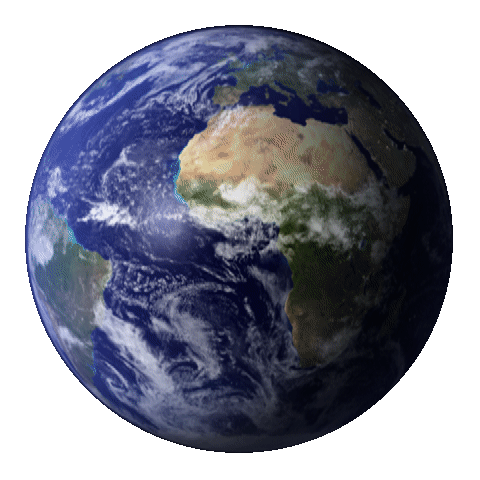PERU
4/01/2022 - 4/10/2022
I've recently returned from a trip to Peru entirely put together by my friend, Mariza, here in San Diego. It was my first real trip
out of the U.S., if you don't count the couple of occasions I've been across the border to Mexico or Canada years ago. And it was AWESOME! The end
goal of the trip was, naturally, to visit the Incan ruins of Machu Picchu, a place full of magic and mystery, like the Pyramids of Giza or Stonehenge,
which captured my imagination as a child. And after visiting the ancient site, I can definitely confirm that it deserves to be called one of the
Wonders of the World.
I've divided the trip into several sections below in order to outline and give brief descriptions of the places we visited and also to serve as a
gallery for some of the better photos I took while I was there.
LIMA
If you're traveling to Lima, the Miraflores district is the place to stay. It is the cosmopolitan, upscale section of the city
and has a wide variety of restaurants, cafes, nightclubs, shopping malls, parks, and cultural landmarks. There was even an arcade near the
hotels we stayed at, something I haven't seen in the States for a number of years. Anime is popular, Karaoke is a thing, and there is a fusion of
Peruvian and Japanese cuisine which is incredibly delicious.
In the evening, people gather in the parks, colorfully lighted plazas and treelined walkways, to eat, drink, shop, and socialize. These places really
seem to come alive at night. Near to where we were staying is the John F. Kennedy Park (Parque Kennedy), which is apparently the central hub of the
Miraflores District.
Below are some photos of the buildings and areas bordering the park. The Church of the Miraculous Virgin, with its giant wooden doors and blue-lighted
towers is featured in the first two photographs. The churchyard (and, really, the whole park area) is home to dozens of cats of all types, which can
be found everywhere you look, just chillin' in the sunshine...or moonlight, or playing, or wandering about on their own secret cat missions. Lima,
or at least this part of town, is very much Cat City. They do seem to be well taken care of by the cathedral clergy or sextons who set out food
and water in strategic locations beneath the shrubberies. Looks to be a good life if you can get it. :)
The pale yellow building with the tall, lighted tower is the Municipal Palace of Miraflores. And the lighted alley/boardwalk is a place near both of
these filled with cozy little restaurants, cafes, ice cream parlors, and the like. I thought I had some more pictures of the actual park and bazaar
area surrounding it but I guess not, so these will have to suffice.


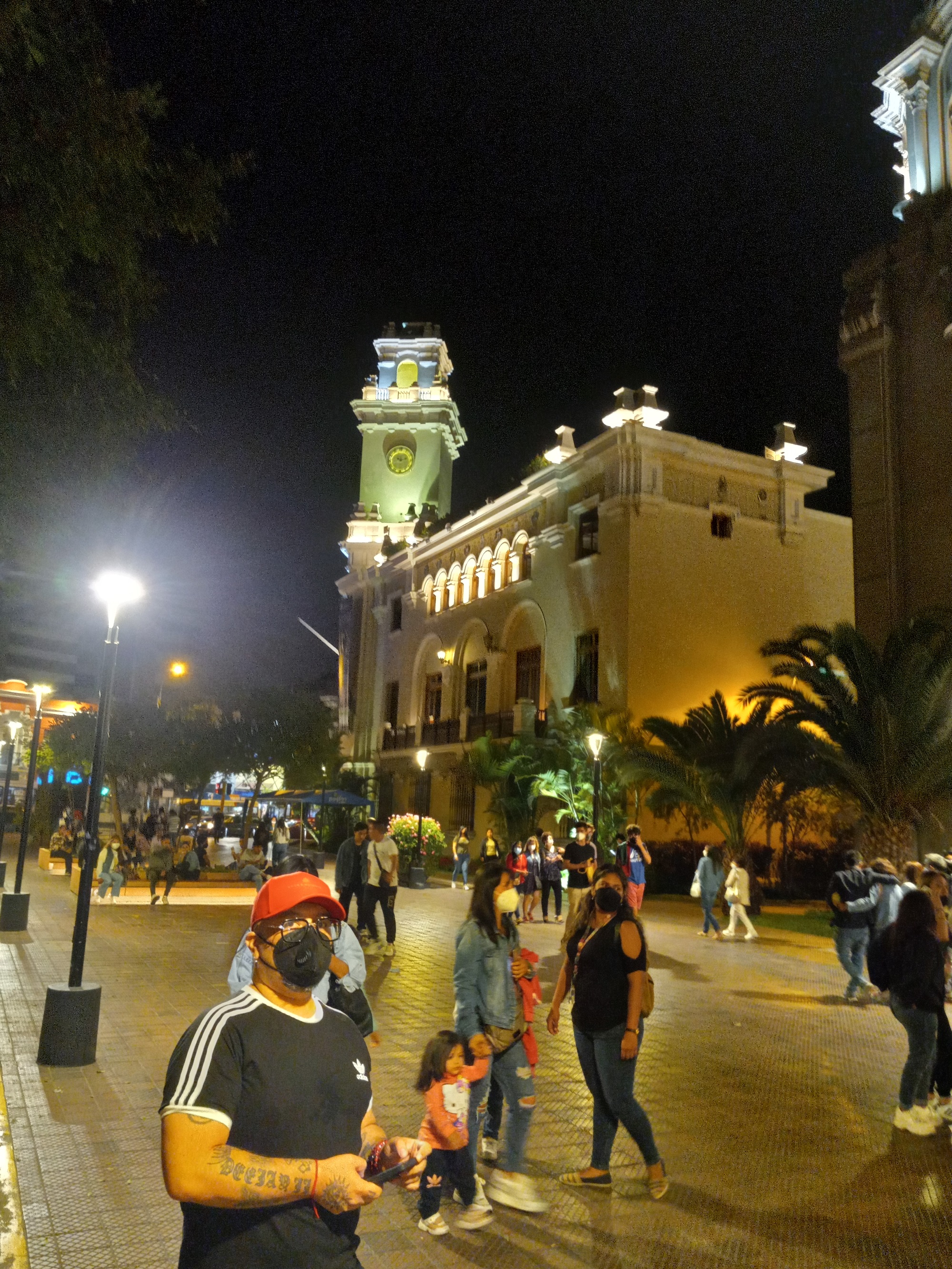
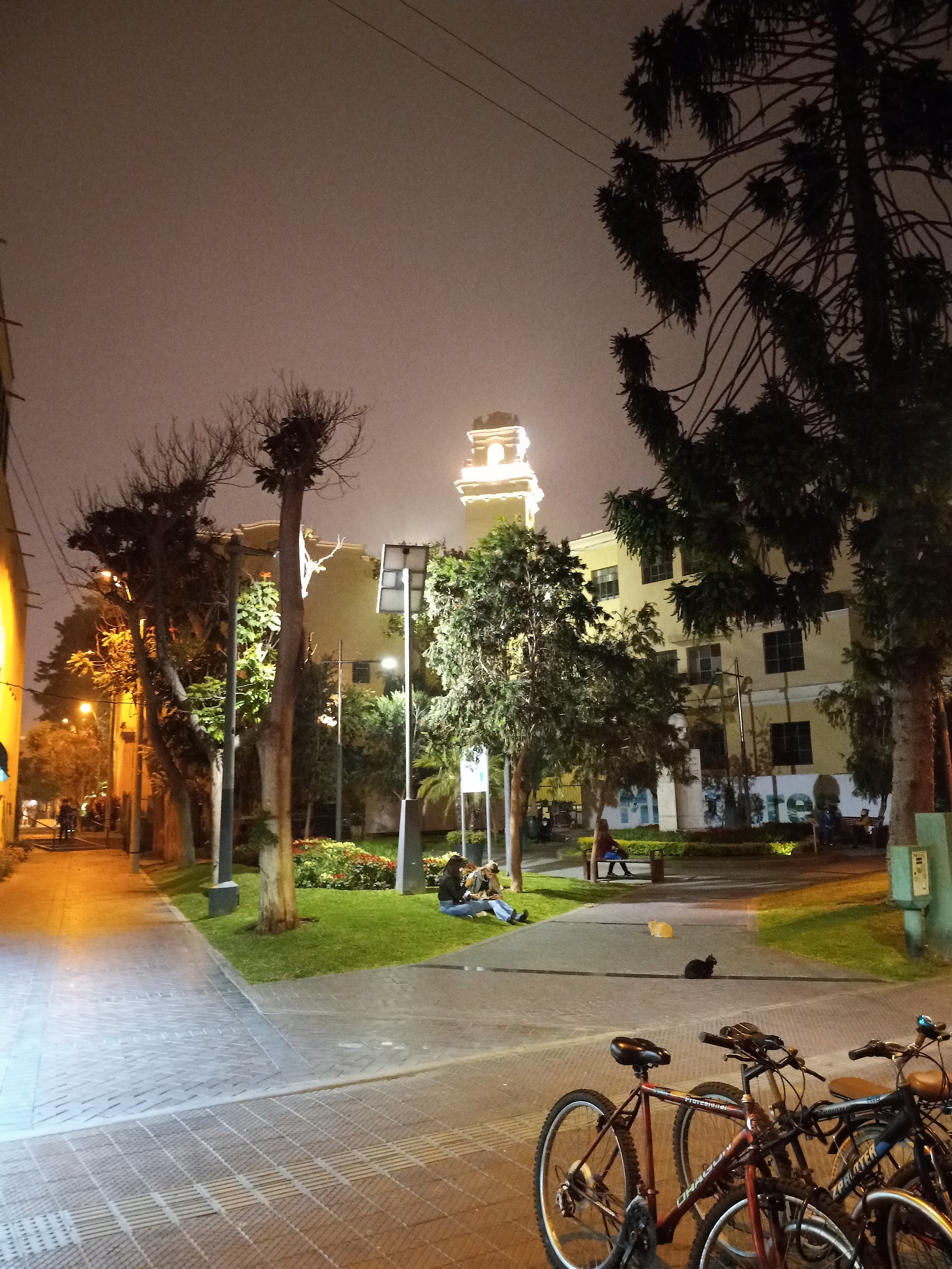
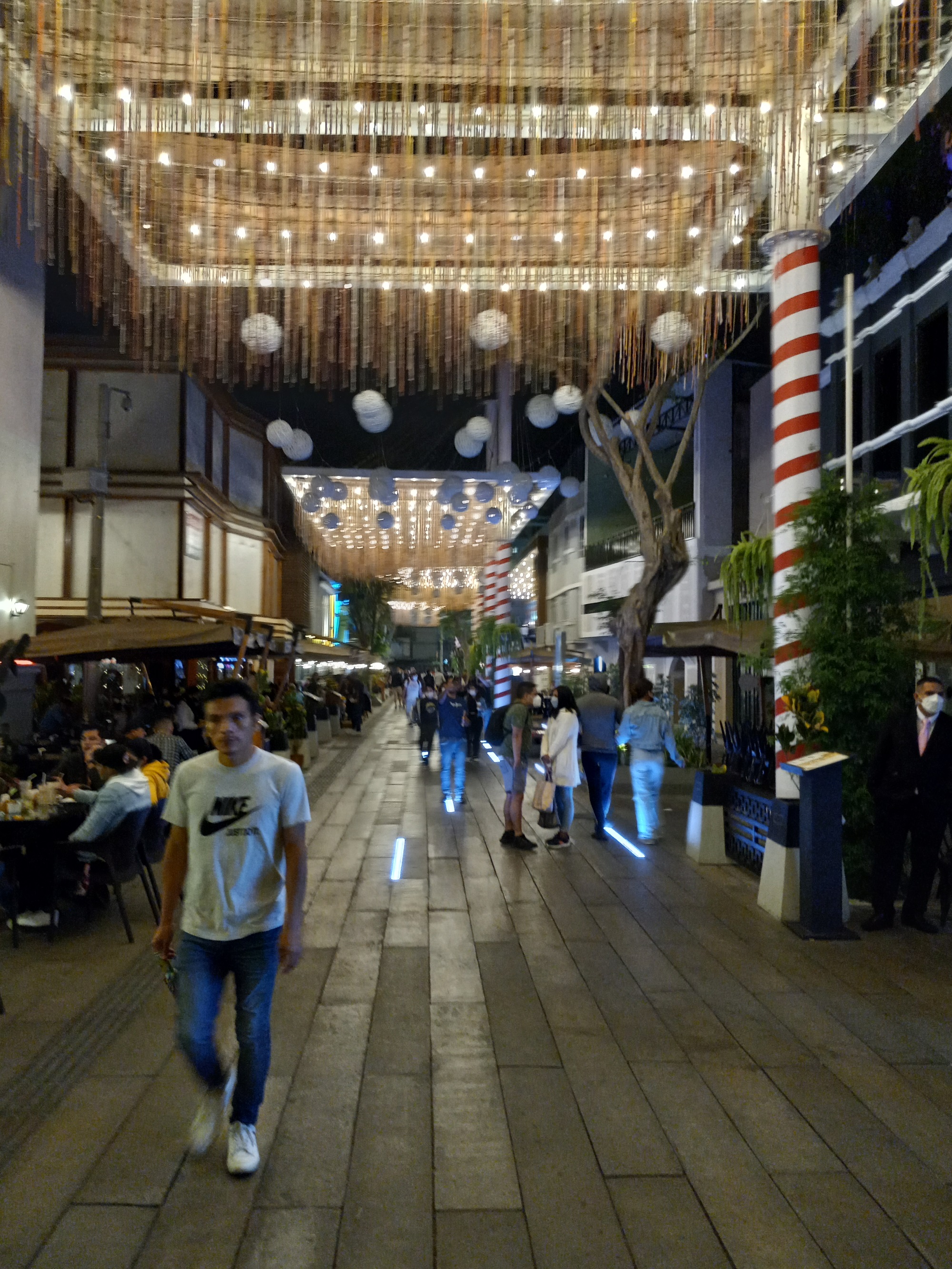
CUZCO
Located in the Peruvian Andes, at an altitude of 11,152 feet, the town of Cuzco is the jumping off point for travelers wishing
to visit all of the ancient Incan sites along the Sacred Valley. It is a good deal quieter and much more colorful than the modern cities along
the coast. This is where "Real Peru" begins. Cuzco is the first stop for tourists into the interior highlands and much of its economy is focused
on exactly that. It occupies every inch of a wide valley with smaller houses and structures climbing partway up the sides of the surrounding
mountains. The city itself is said to have originally been in the shape of a puma, with the head being located on the heights above at the ruins
of the temple of Saqsaywaman. It has spread out to cover the rest of the valley floor in more modern times. A tall, white, statue of Jesus
with arms outstretched, known as Cristo Blanco, keeps vigil over the town from the nearby hill of Pukamoqo.
In the city's colonial center is the Plaza de Armas, the central fountain of which features a tall, golden statue of Pachacuti, the ninth Incan
ruler, who took the small city-state of Cuzco and transformed it into a mighty empire!


The plaza is a major hub of activity, with wide, stone walkways, lovely gardens, and street vendors selling all manner of traditional artworks, carvings, woven textiles, and assorted knick knacks. Around the perimeter are set a number of restaurants, cafes, shops, and colorful markets, as well as two historic cathedrals: the Cusco Cathedral and the Church La Compania de Jesus.




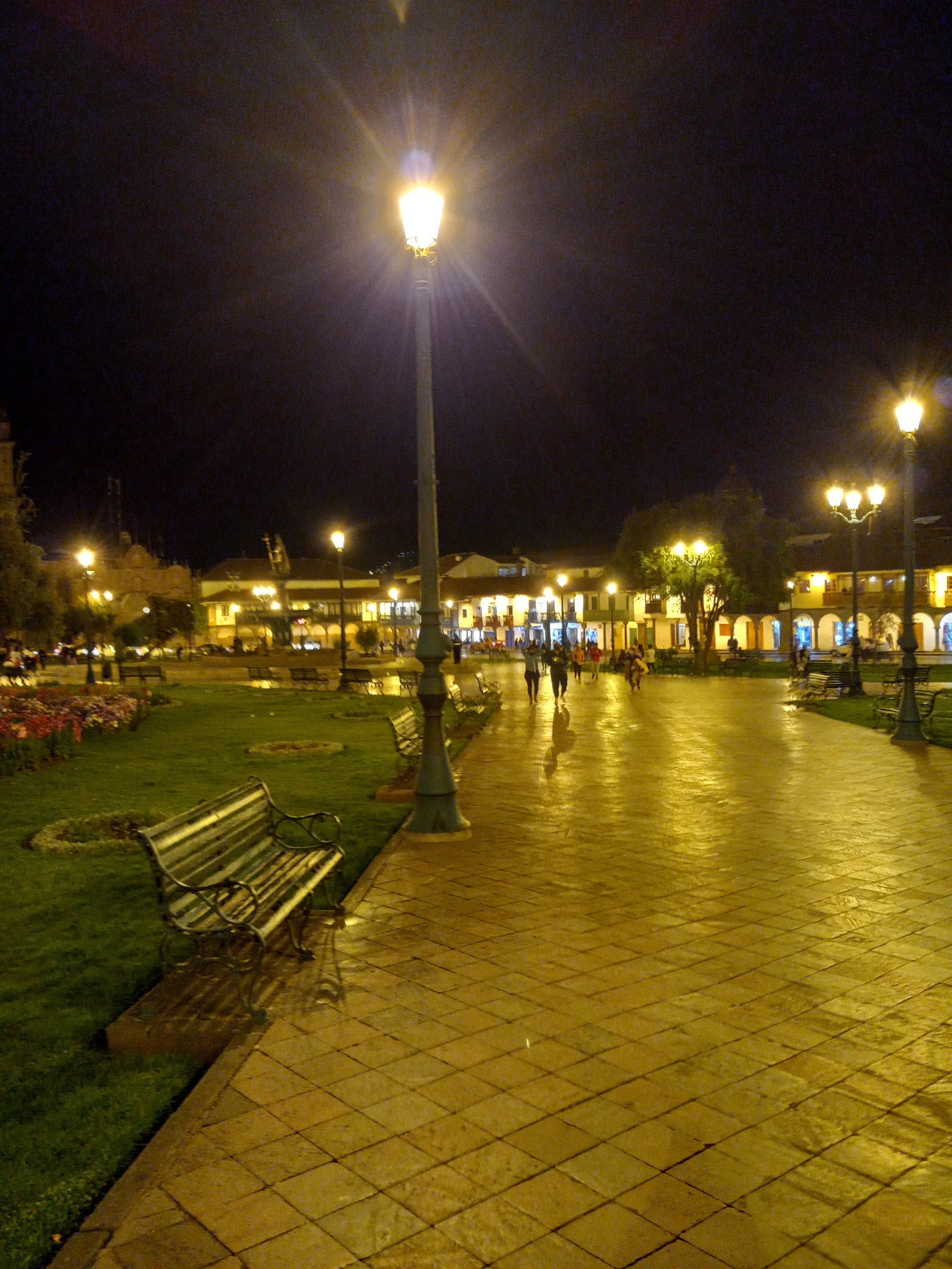
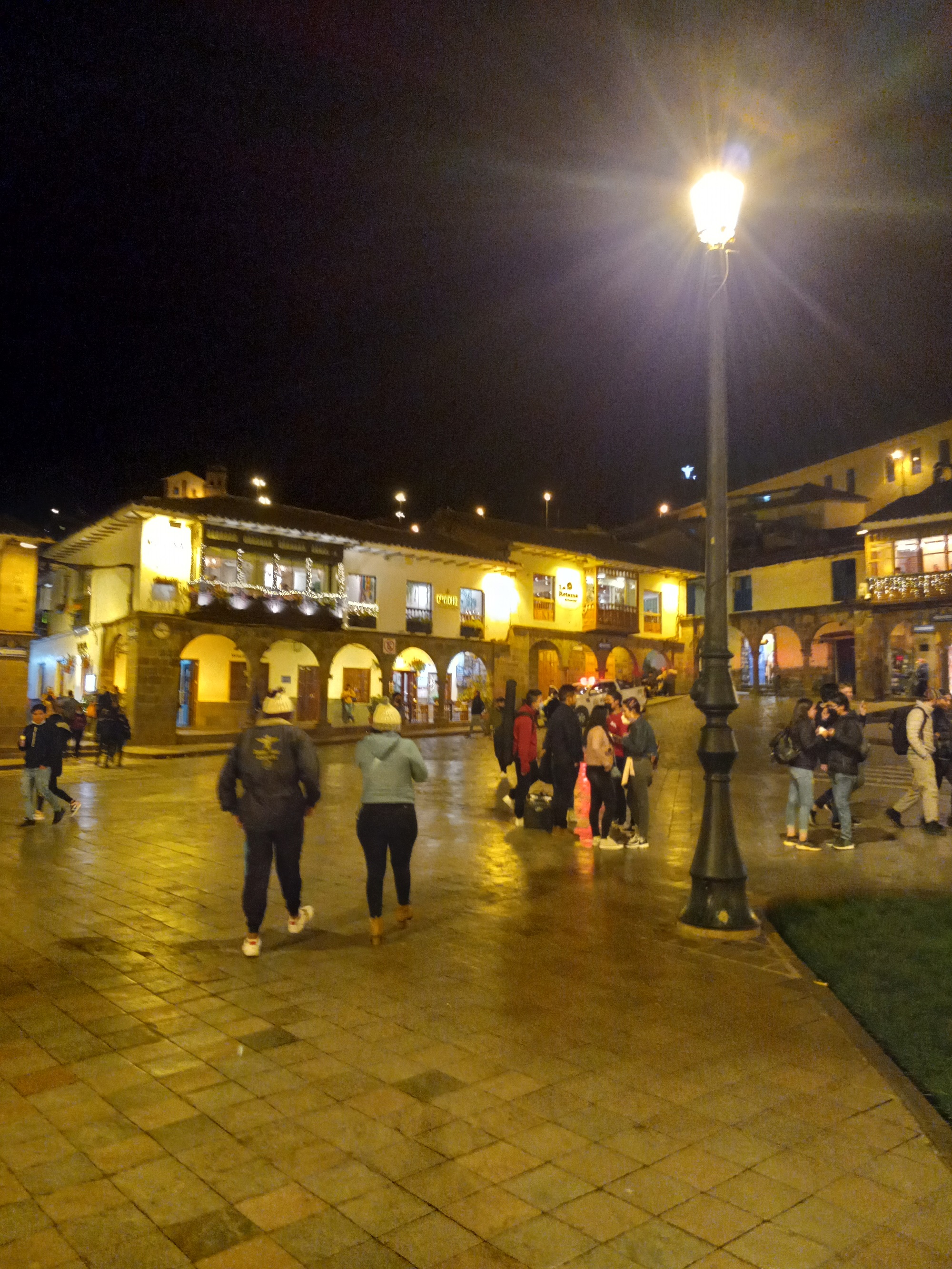
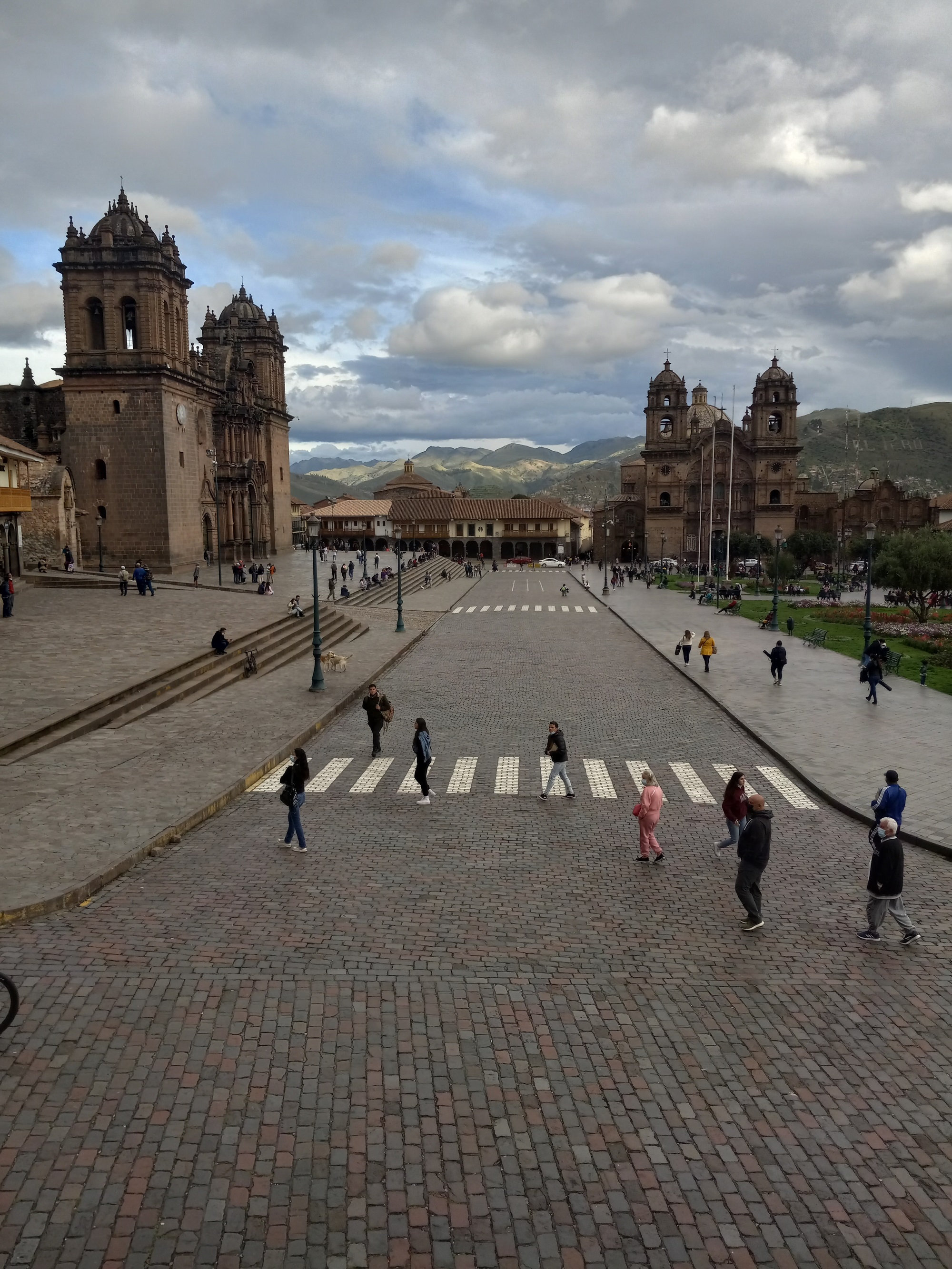
Narrow cobblestone streets and alleys lead off from the plaza in all directions, and the cafes, bars, and markets continue, along with a number of charming little hotels and hostels. We stayed at La Casona Real. Such a lovely place:
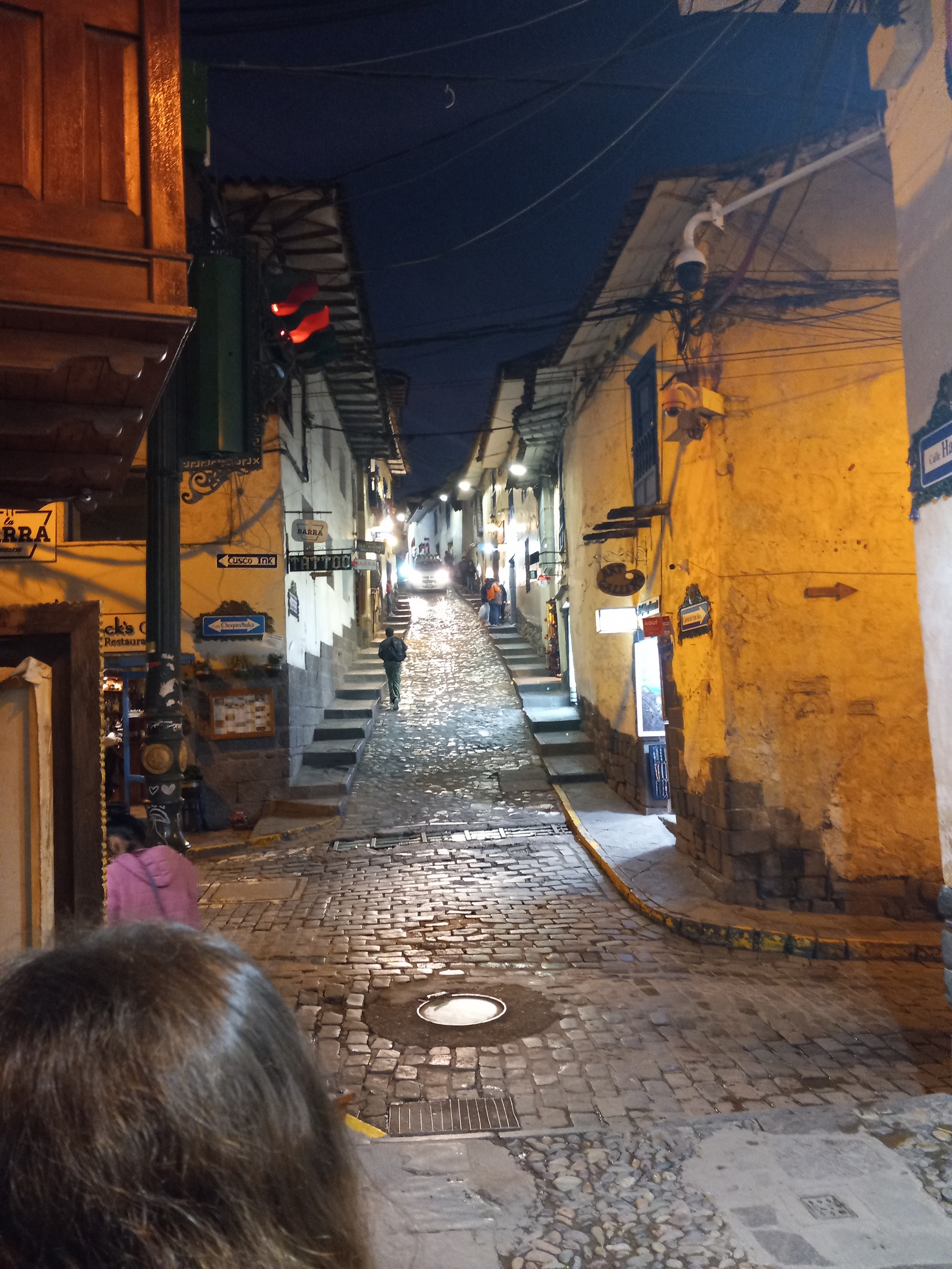

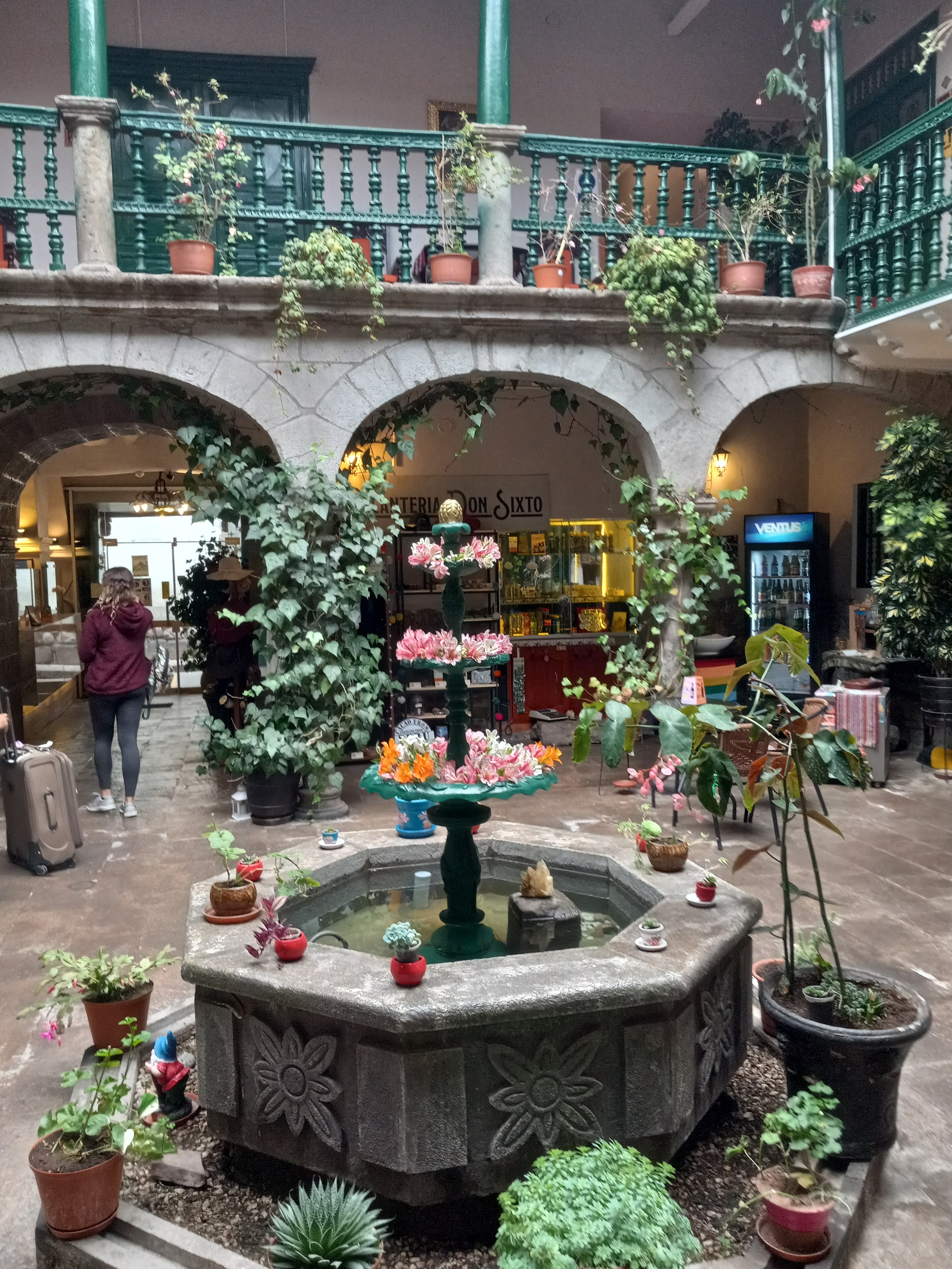
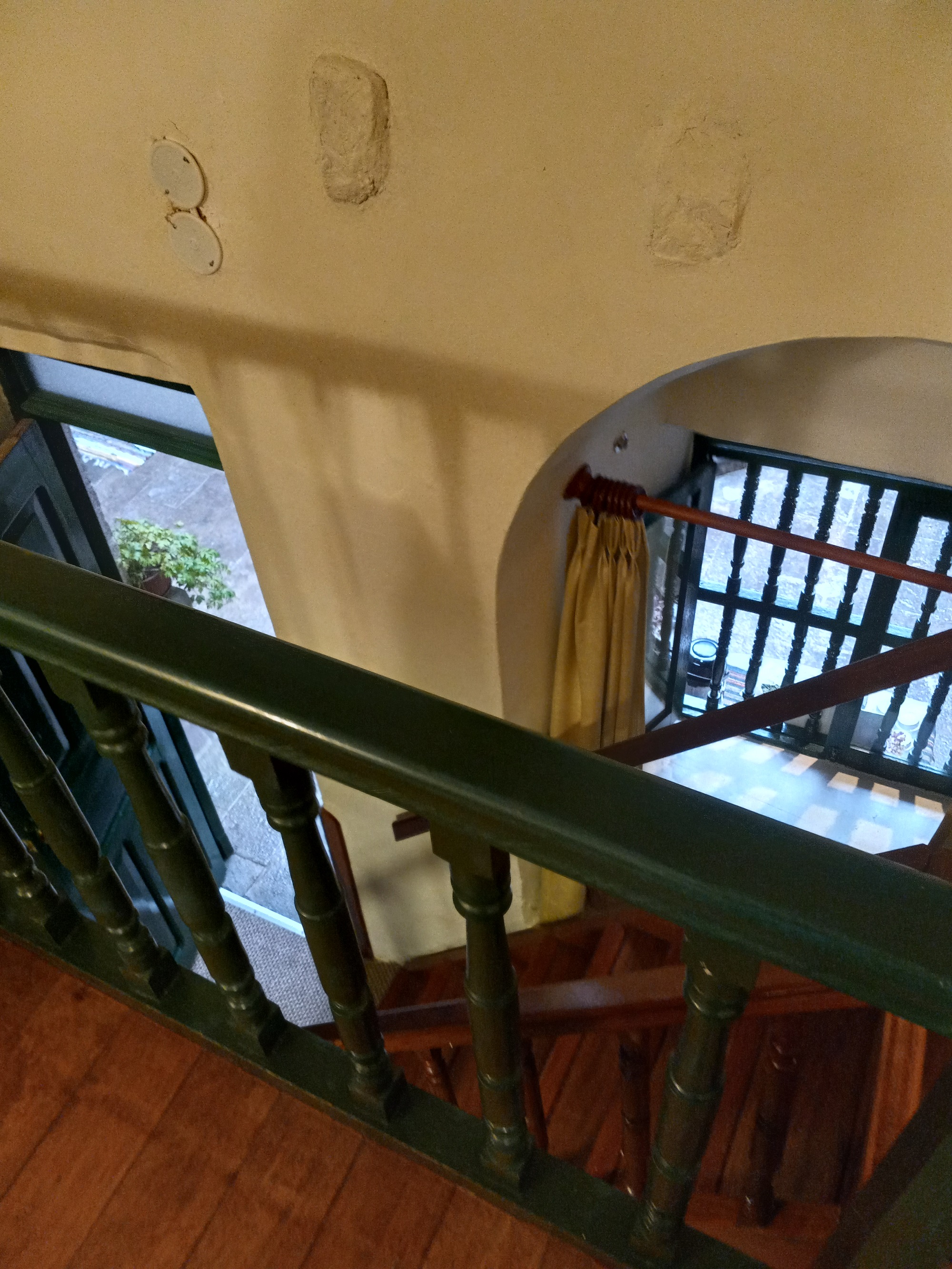

Here's the view from the balcony of a bar/restaurant we went to one night . . .

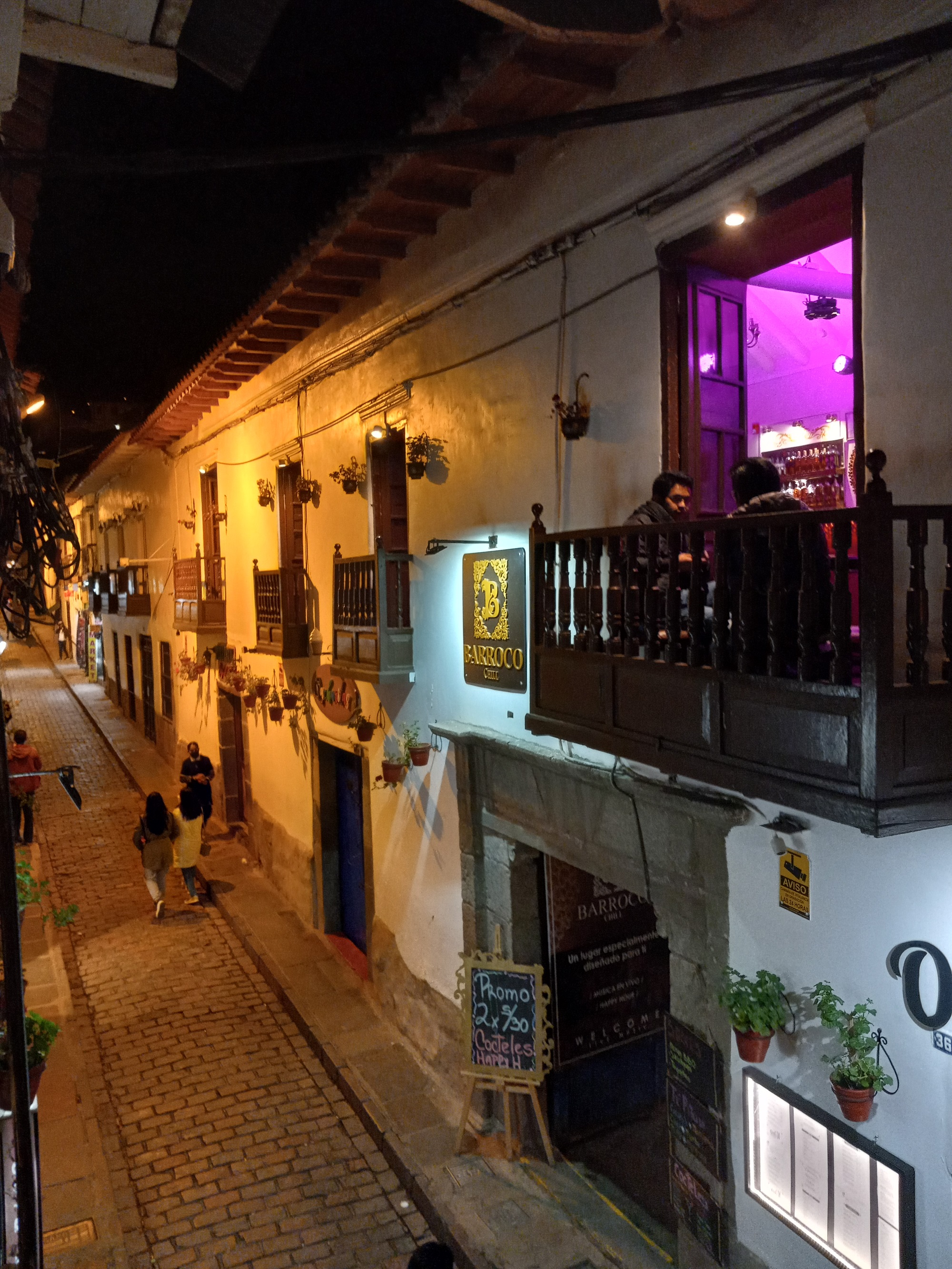
. . . The band was rockin'! :D . . . The 10-stringed 'guitar' is called a charango. It sounds a lot like a mandolin.

. . . This is the view from a rooftop restaurant we dined at after the tour of the four ruins . . .
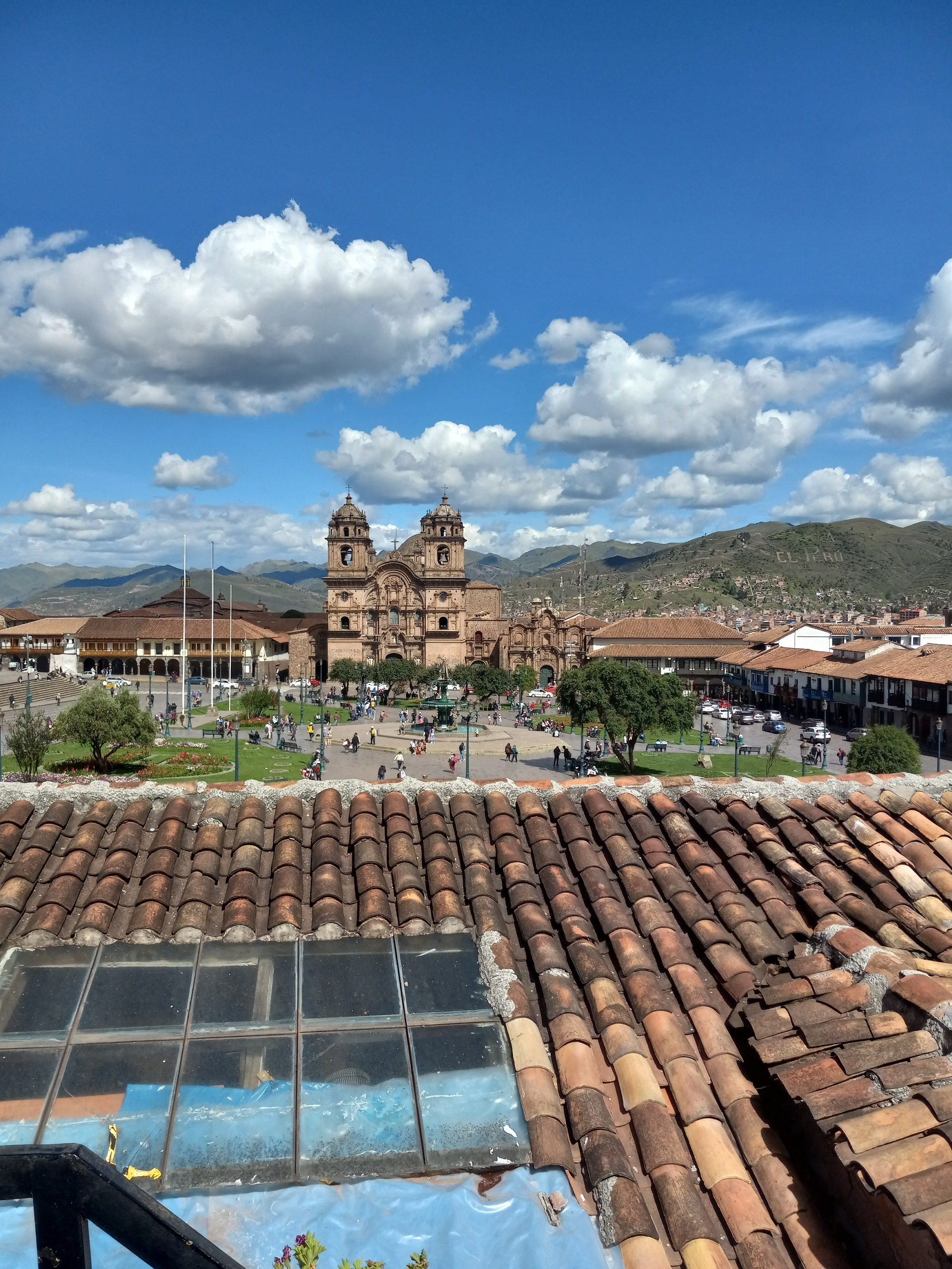
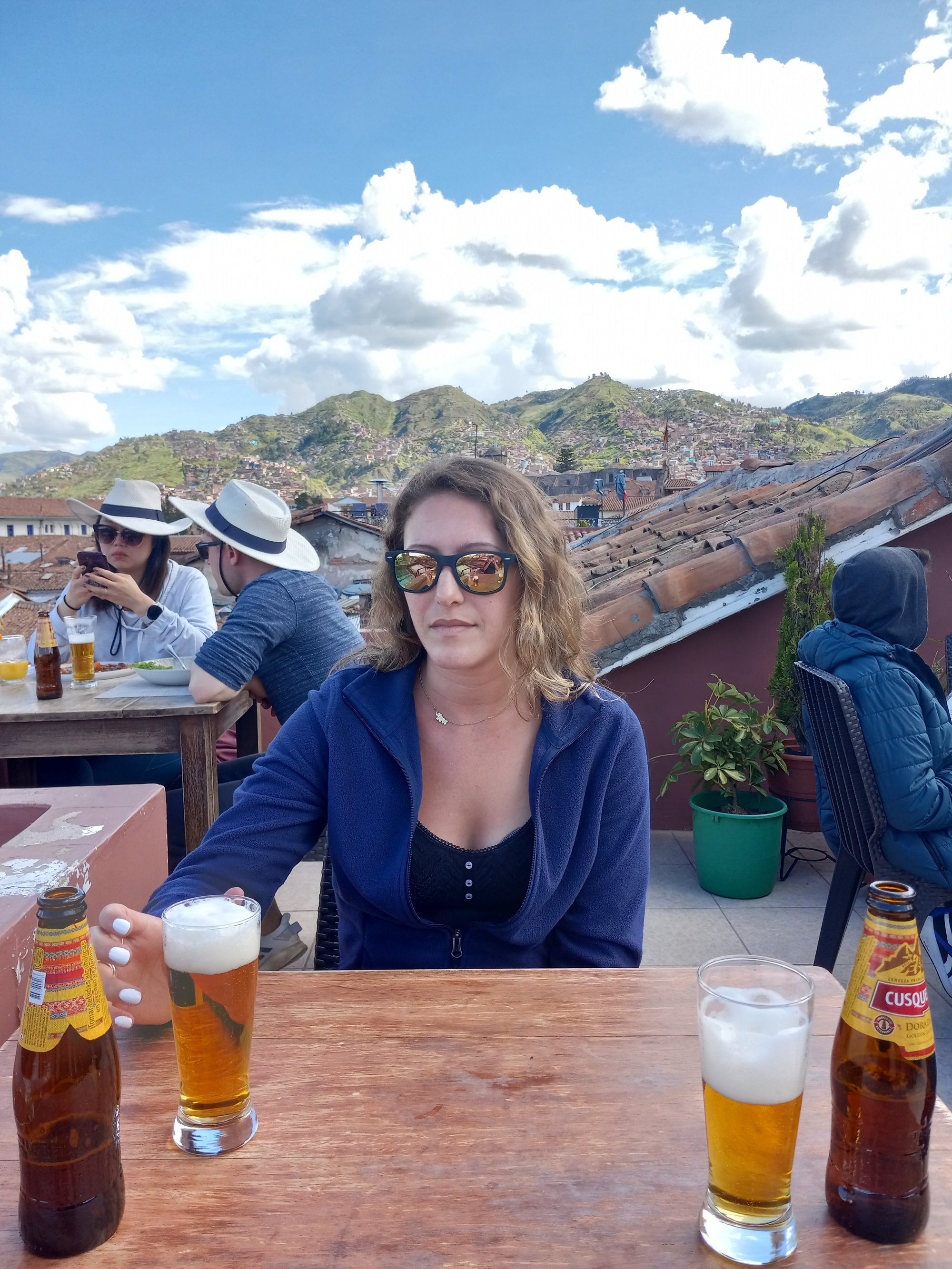
The number of fellow travelers and tourists was just right for me - not too many and not too few. Still, even though it's not quite
tourist season yet, there were far fewer than is typically expected for this time of year. The local merchants and vendors were hit really hard the
last two seasons with the whole Covid thing and they still haven't recovered. I'm hoping this year goes well for them.
Atop the hills surrounding the city are a number of ancient Incan ruins. We took a guided tour which included four of these: Saqsaywaman, Q'engo, Tambomachay,
and Puka Pukara. Saqsaywaman is the "head of the puma". Built primarily as a fortress, it also contained granaries and cisterns for food and water storage,
as well as several temples. There is speculation about exactly what or whom these temples were built to venerate, but at least one is known to have been
dedicated to the sun god, Inti. The terraces of the promontory on which the mighty complex was was built zigzag back and forth on each other like the
body of a giant snake. And the stones used in its construction are among the largest used in any building in pre-Hispanic America. In the fourth picture,
you can see people entering the threshold to what may have been one of the ancient temples. The large stone at the bottom, far left of the threshold area
is famously called the "Serpent Stone" for the wriggly, snake-like depression carved into it (the head is located just off the shoulder of the person
wearing the red shirt).
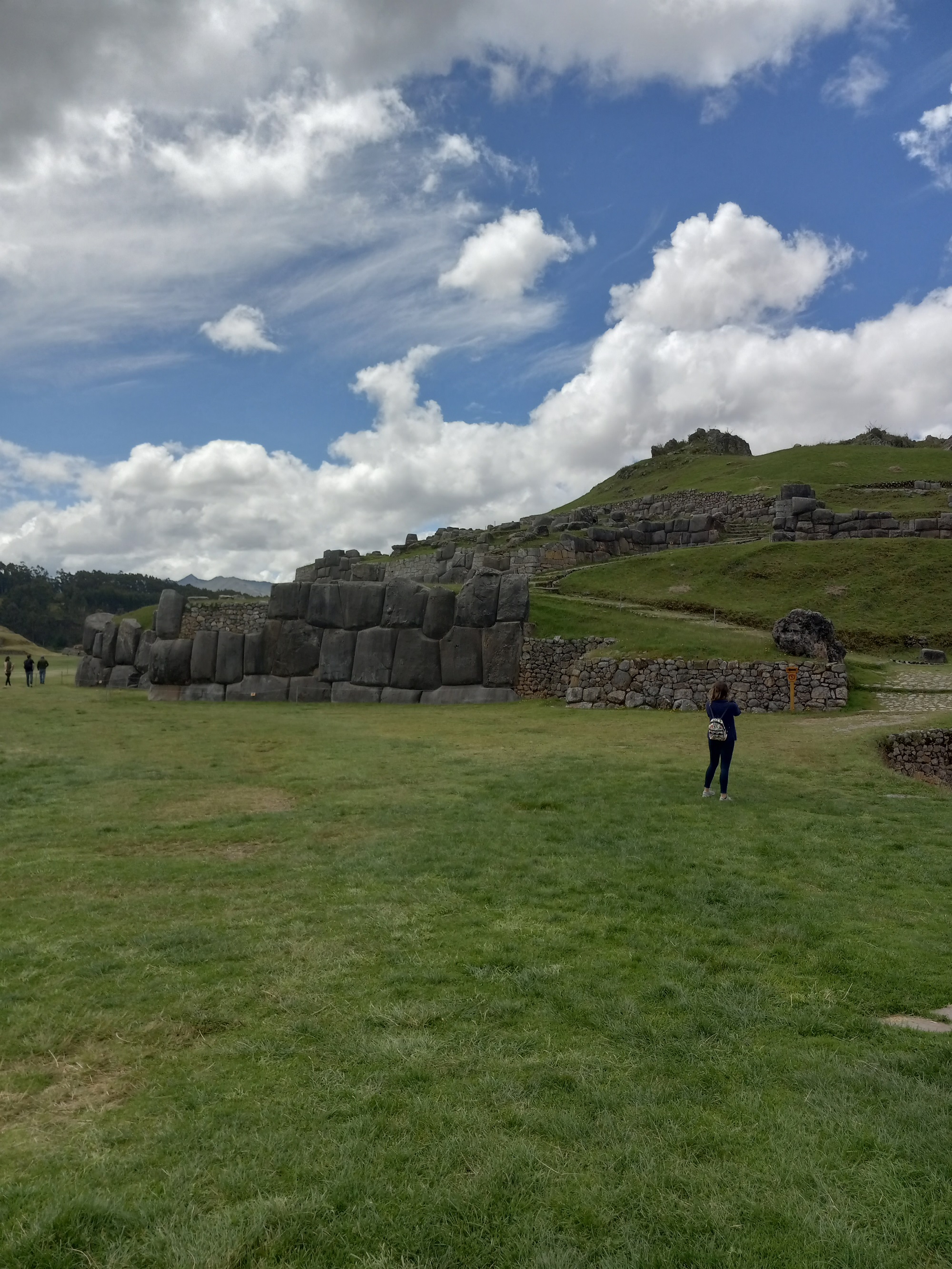
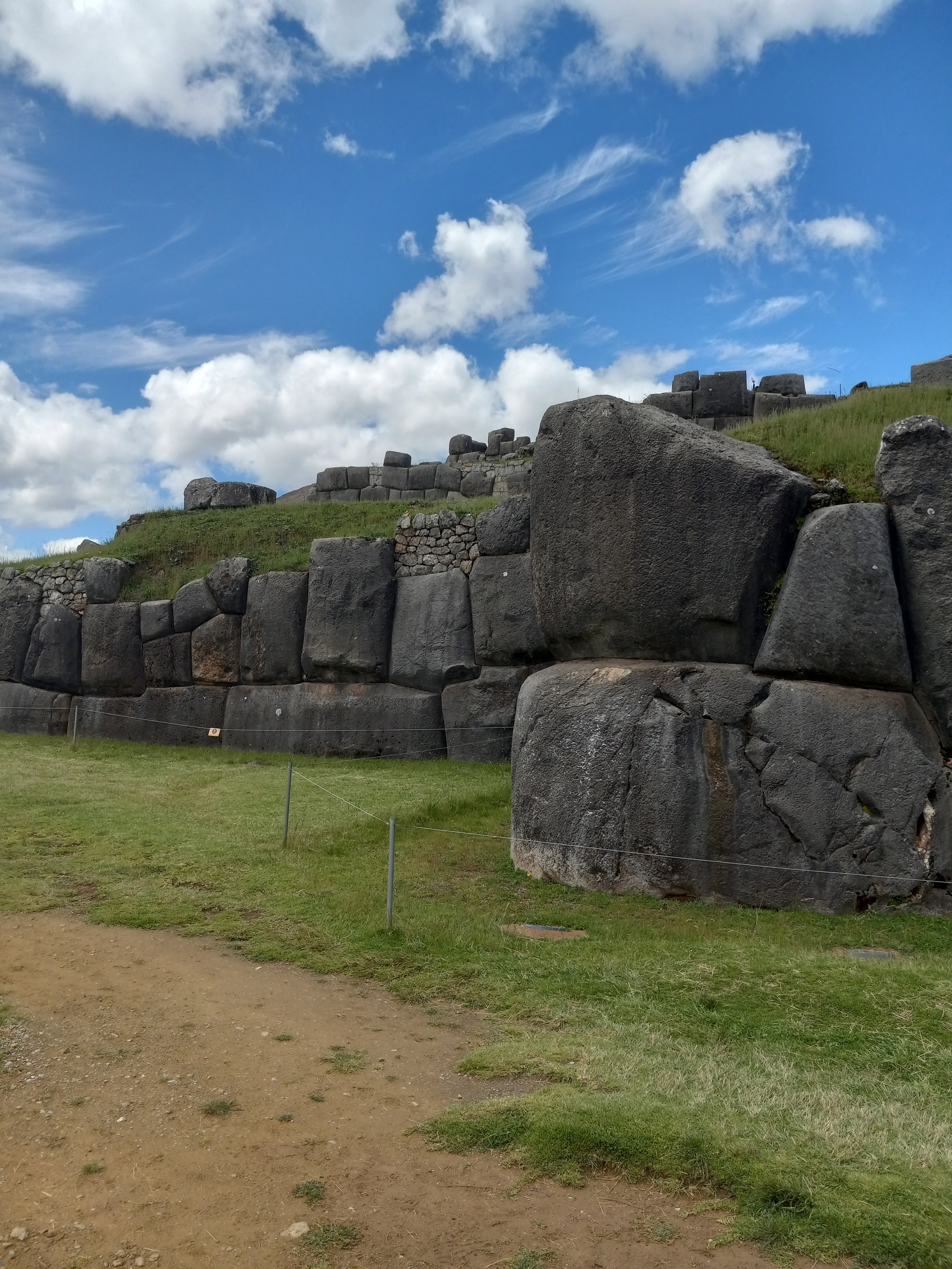


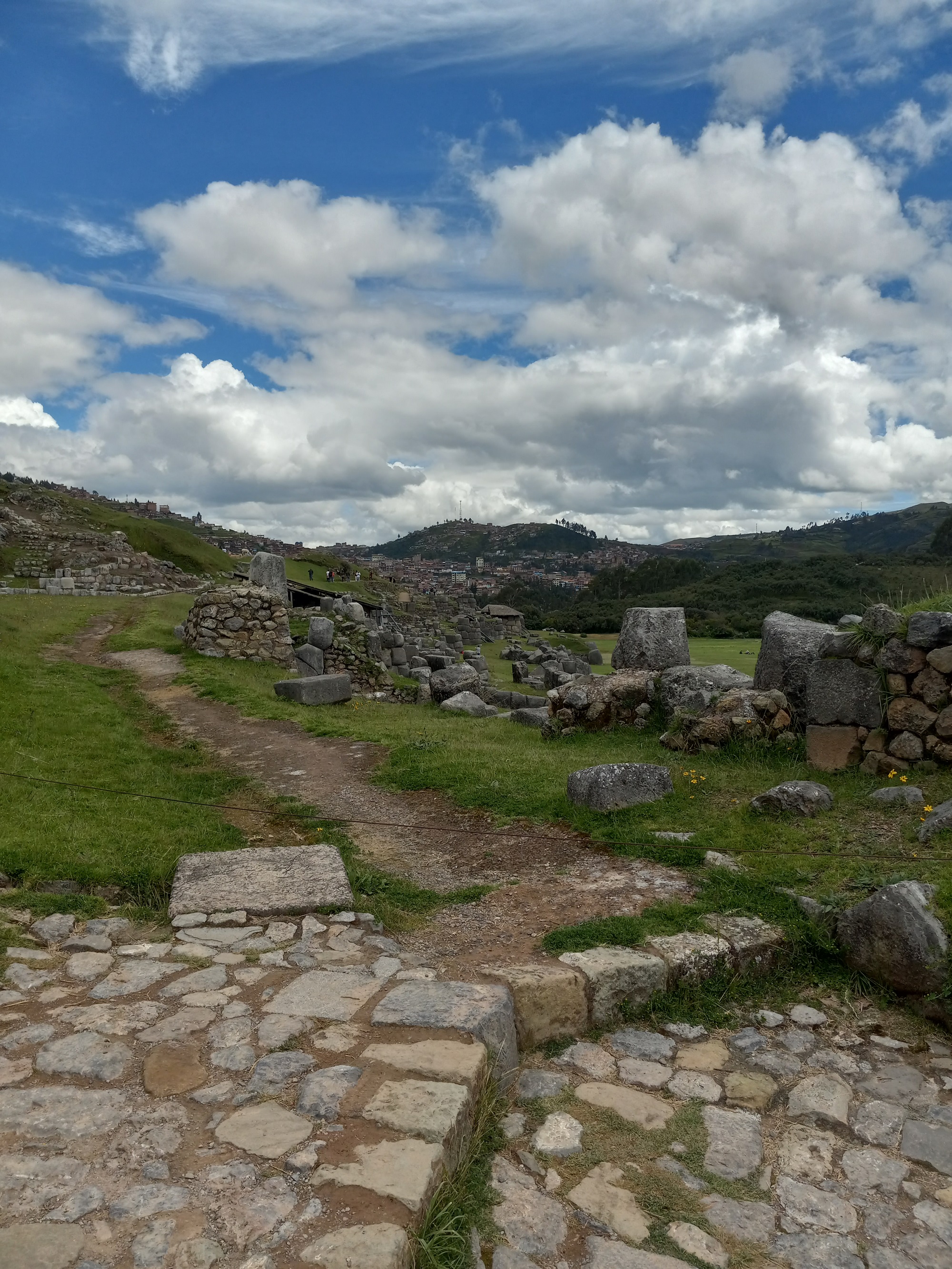
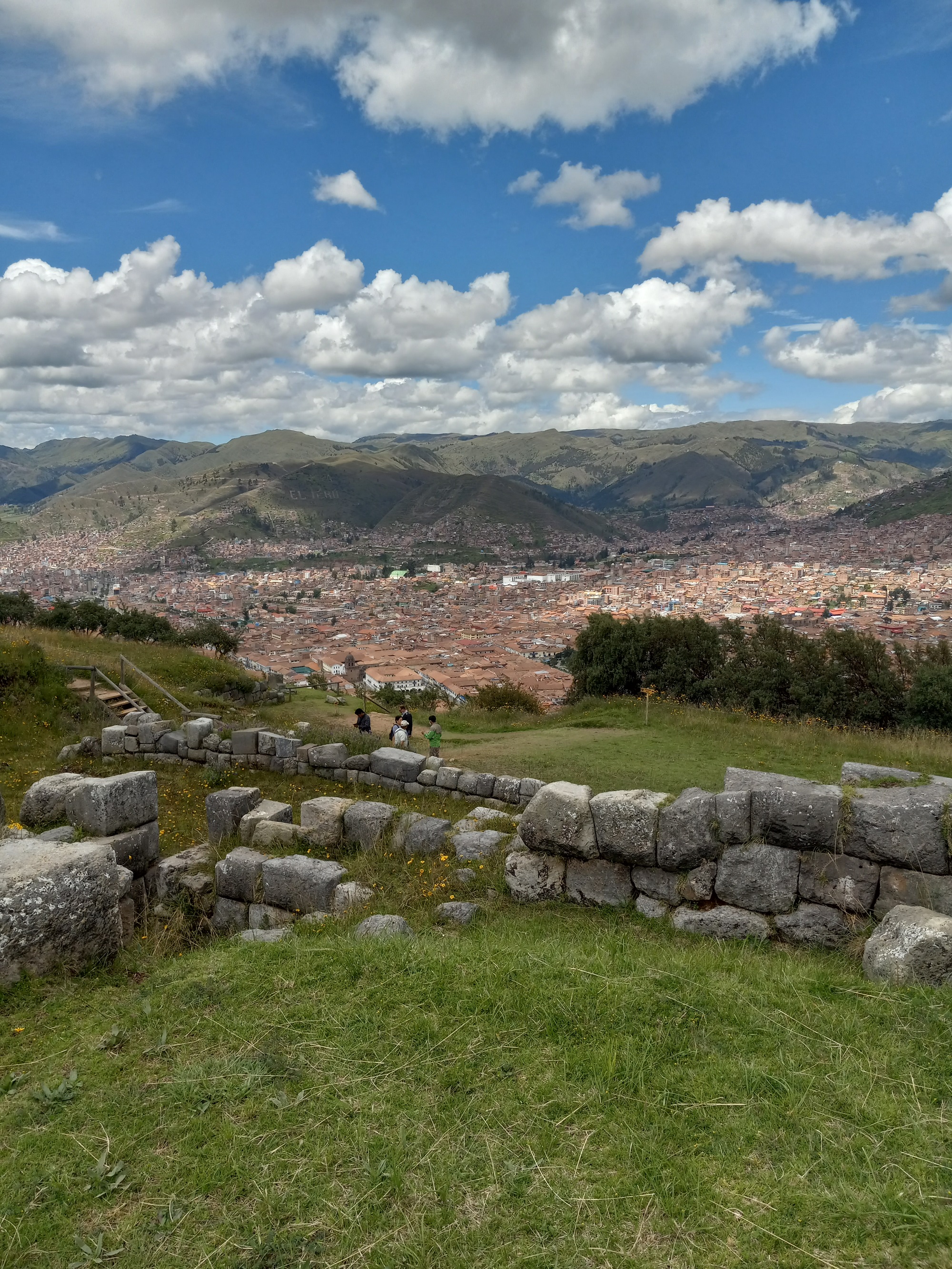
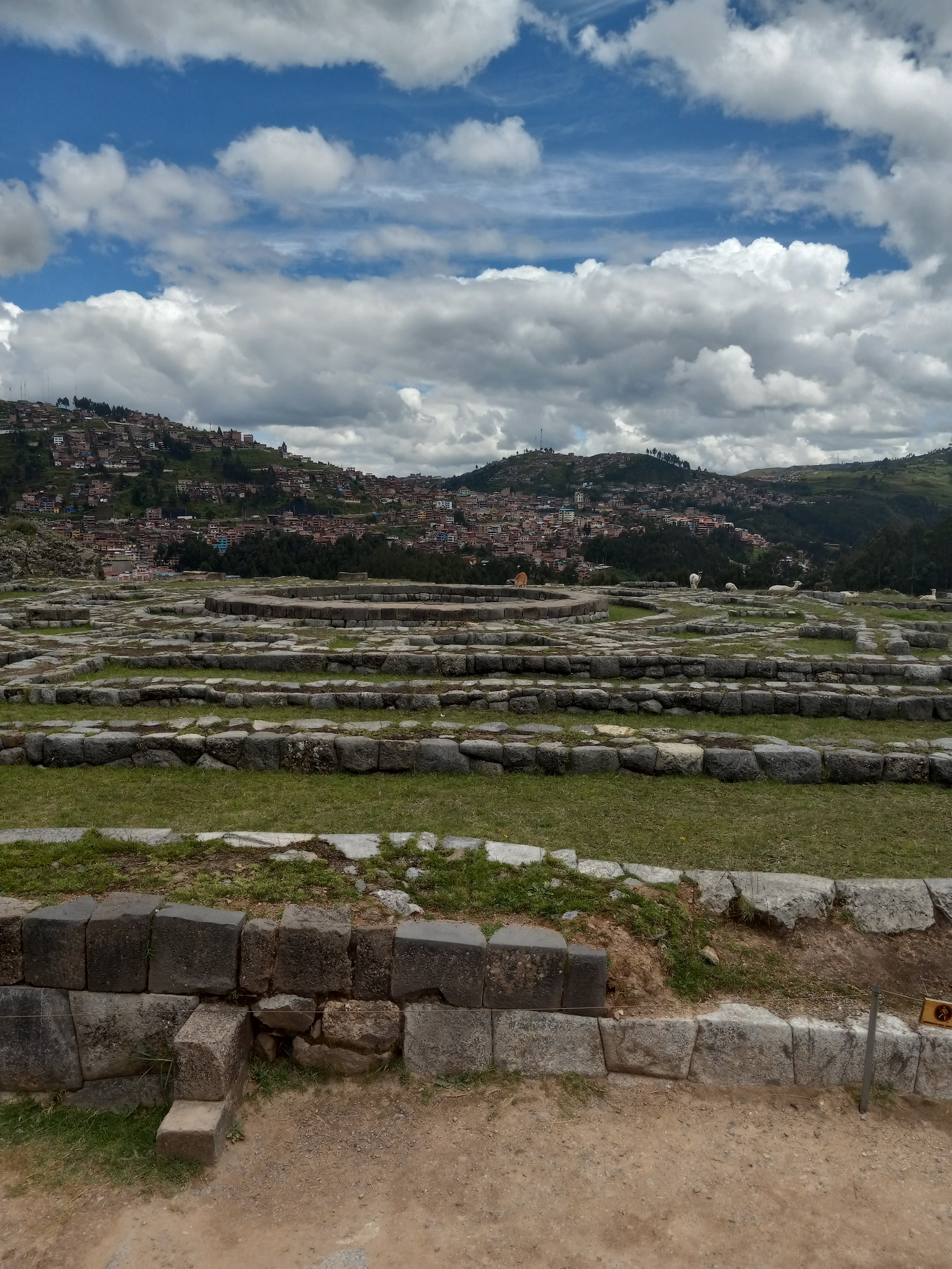
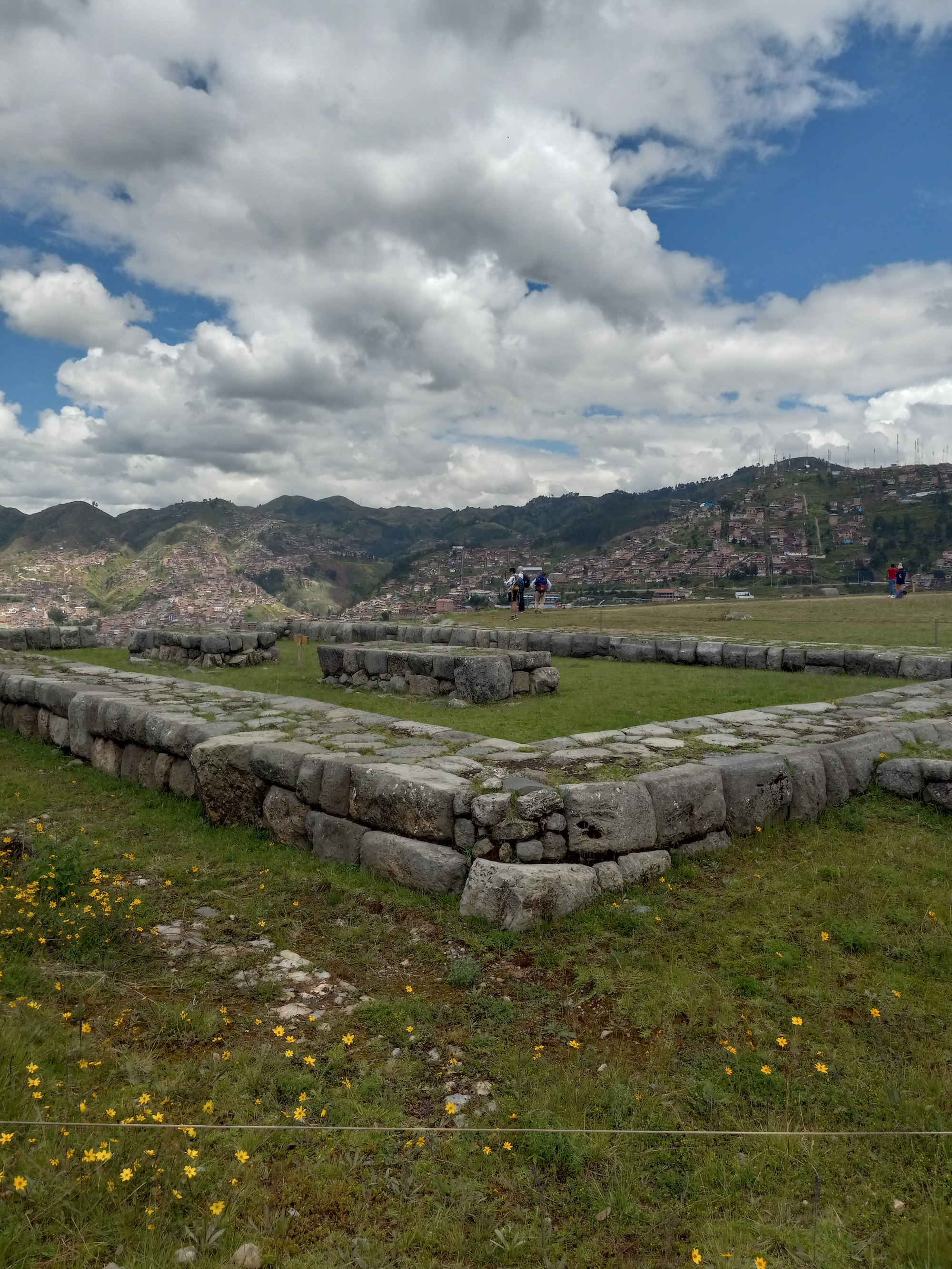

Q'engo is a huaca(holy place), the cave of which may have been used to house the king's mummy during special ceremonies and celebrations:
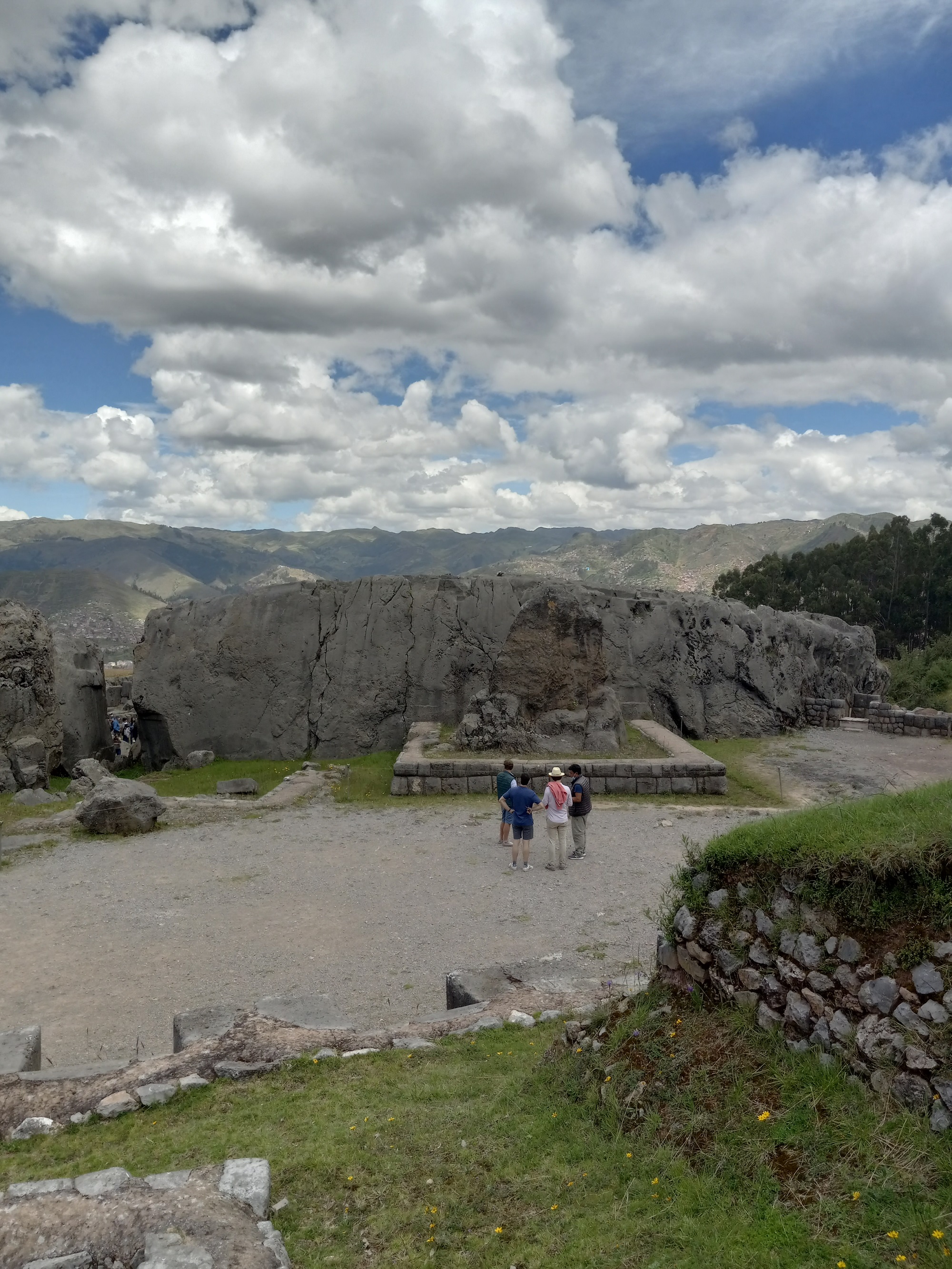
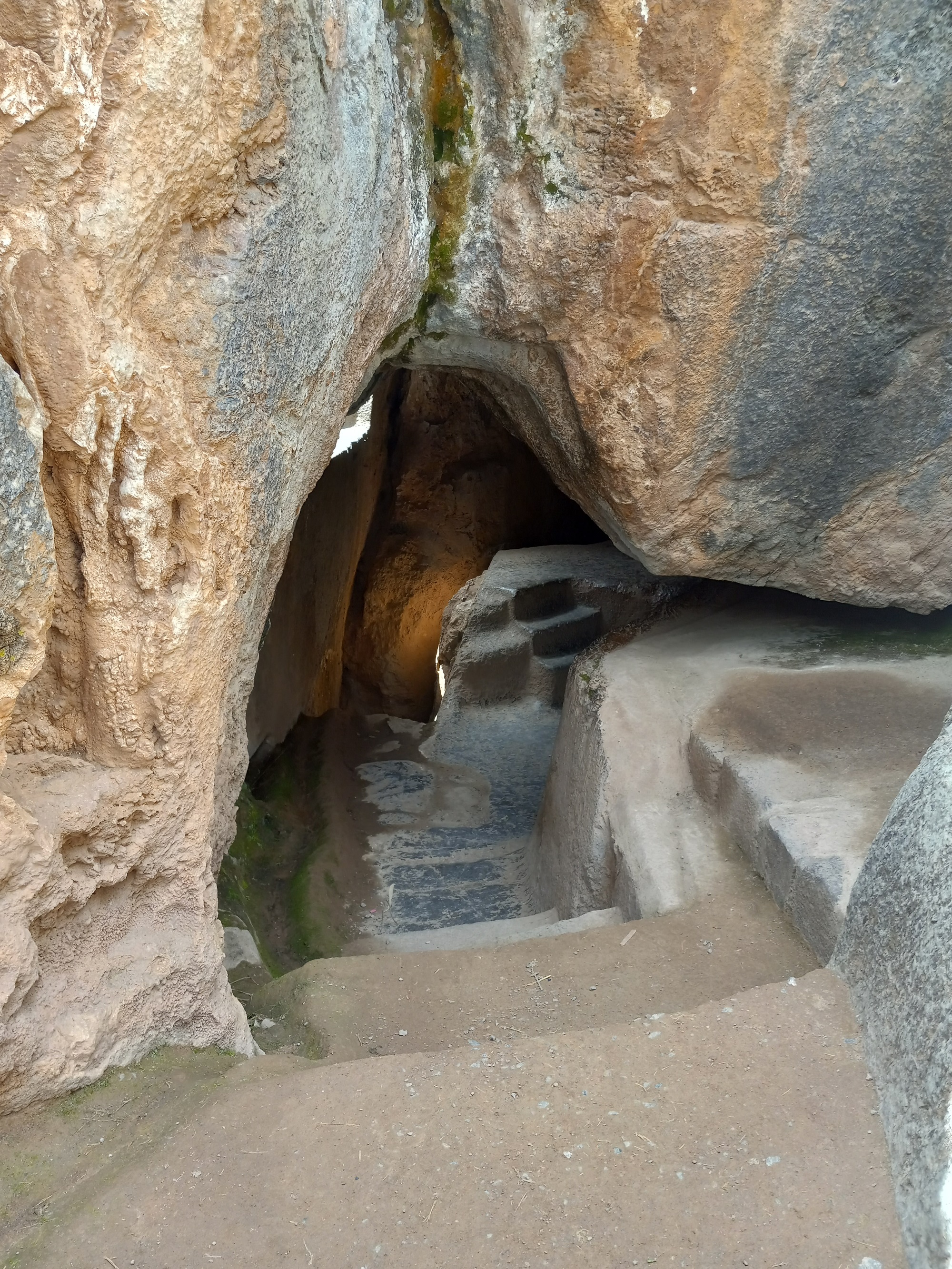
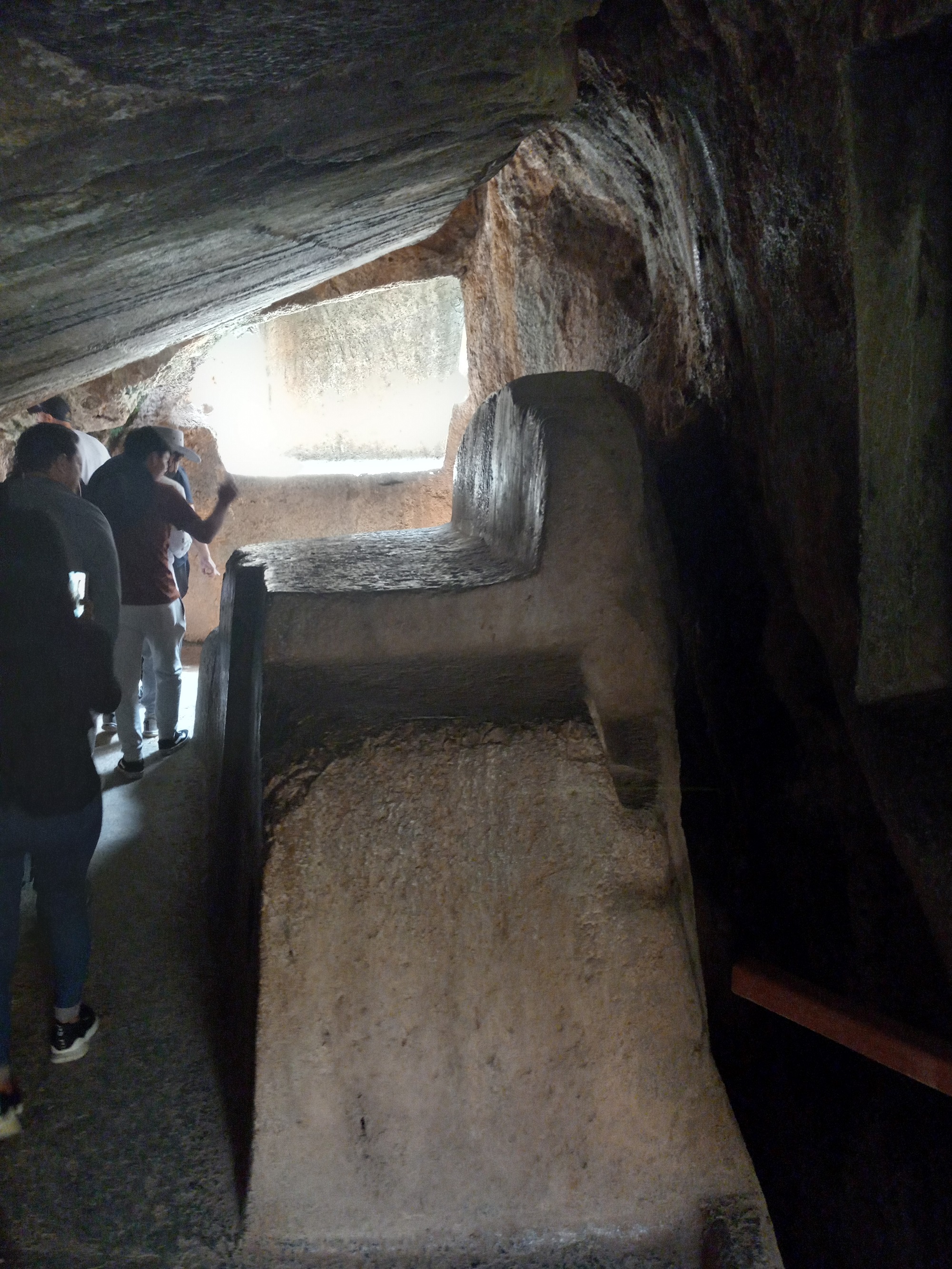
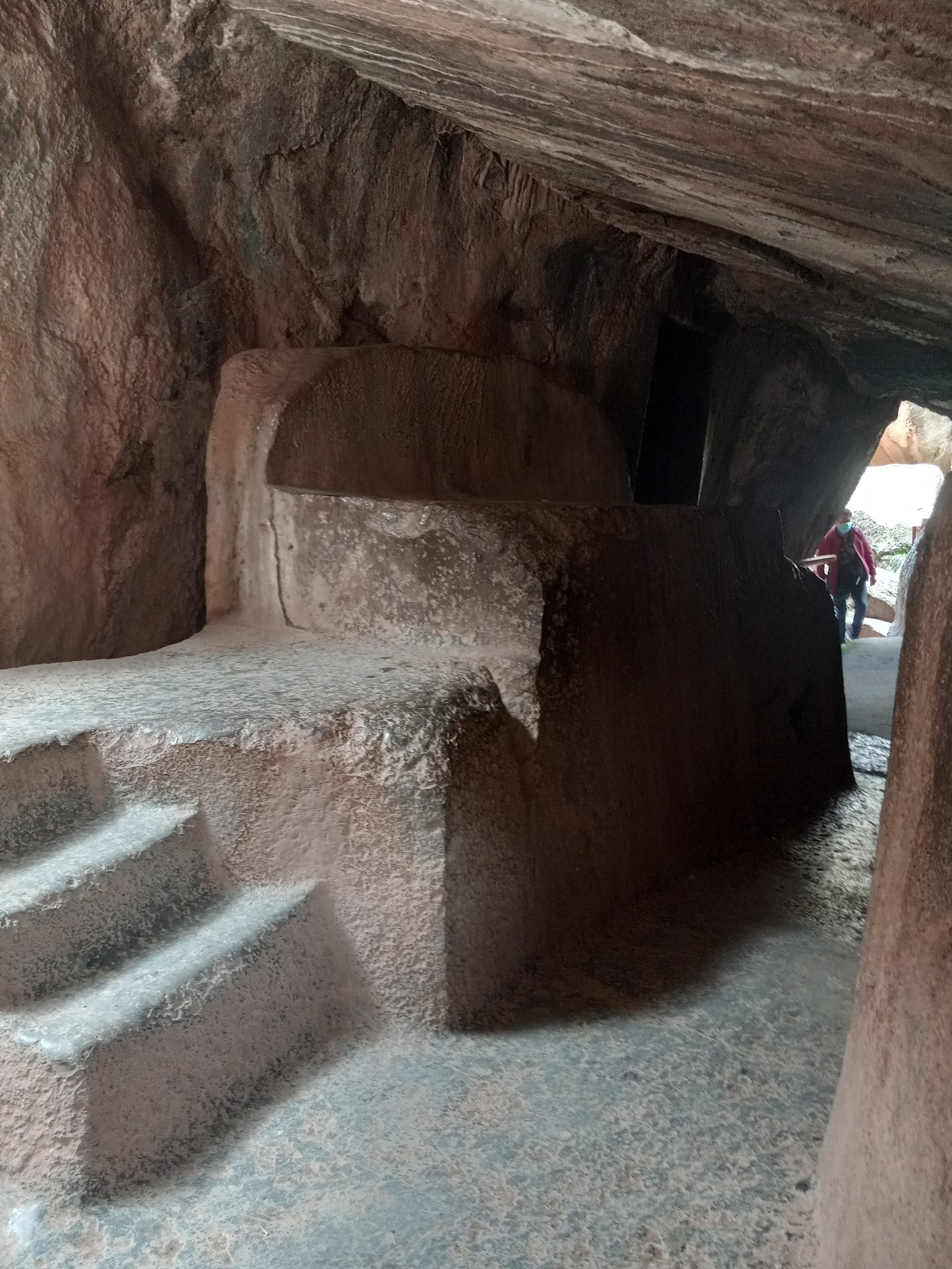
Tambomachay, another sacred site; this one dedicated to water, the source of all life. Stone aquaducts/aquifers bring the water from its source high in the mountains to this sacred place. The water divides into channels, trickles over the carved rock in soft, crystal waterfalls, then slips back into the earth, going down to parts unknown. Apparently, the water flows at a contant rate all year around. Mummies or statues of important administrators or rulers of the four quarters of the Incan Empire would have been set in the rectangular stone recesses during annual celebrations and high ceremonies.
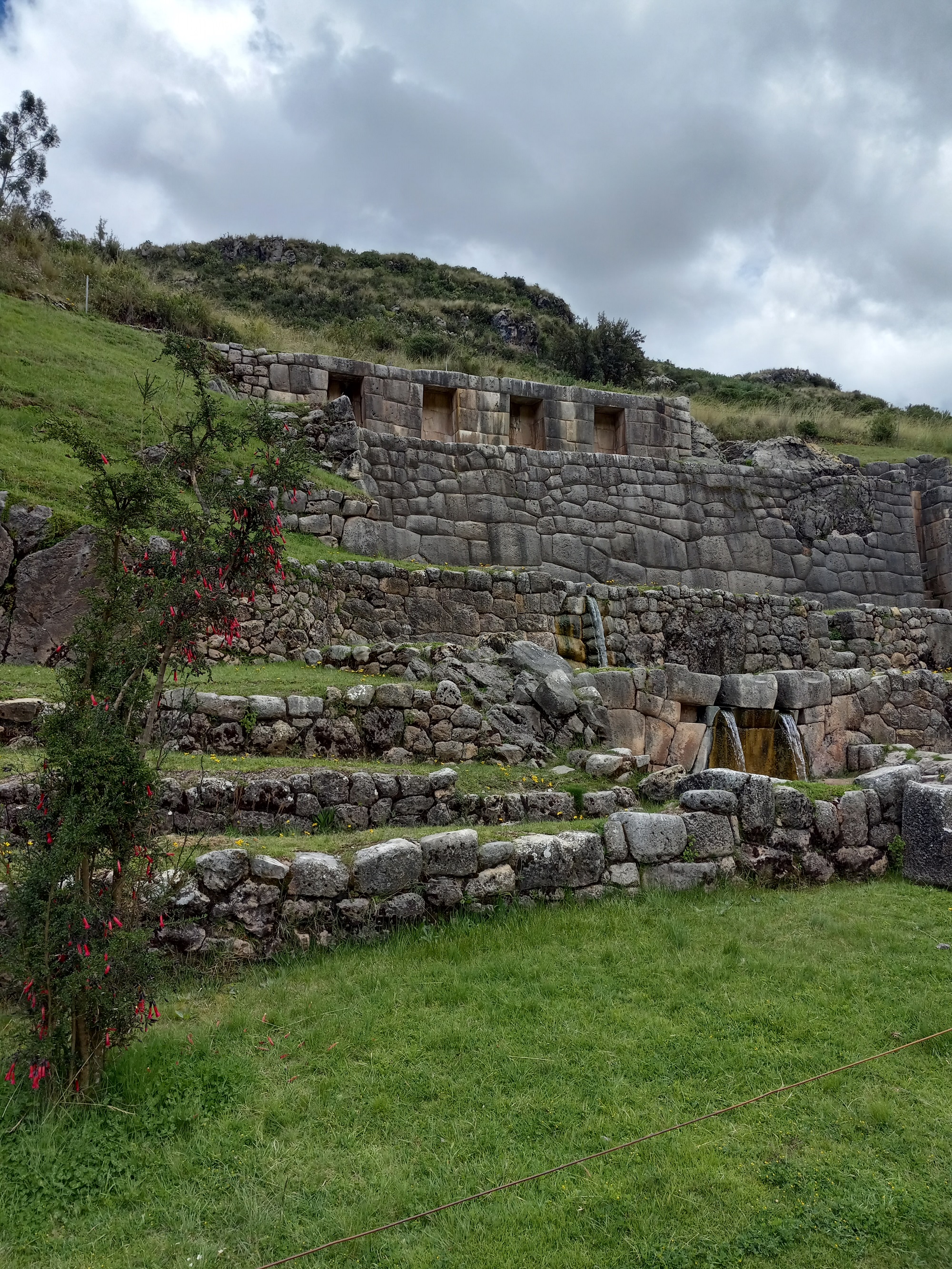




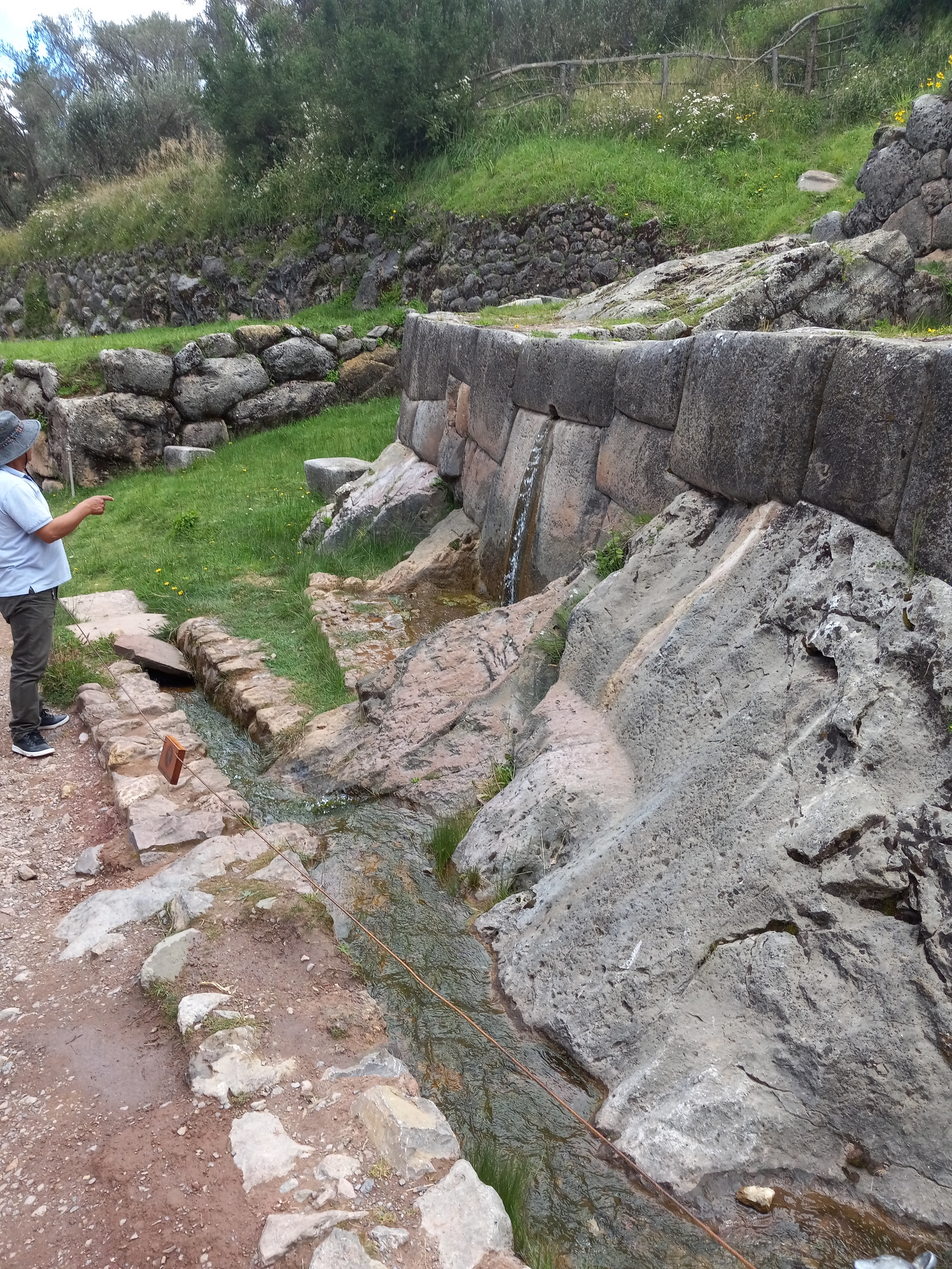
Stone towers, like this one directly across the road from the water temple, are called tambos, and were built all over the land. They were used as relay stations for the chasquis (messengers of the Incan empire). A chasqui would run from one tambo to the next, where a rested chasqui was waiting. In this way, messages could travel very quickly throughout the empire - up to 150 miles in a day.
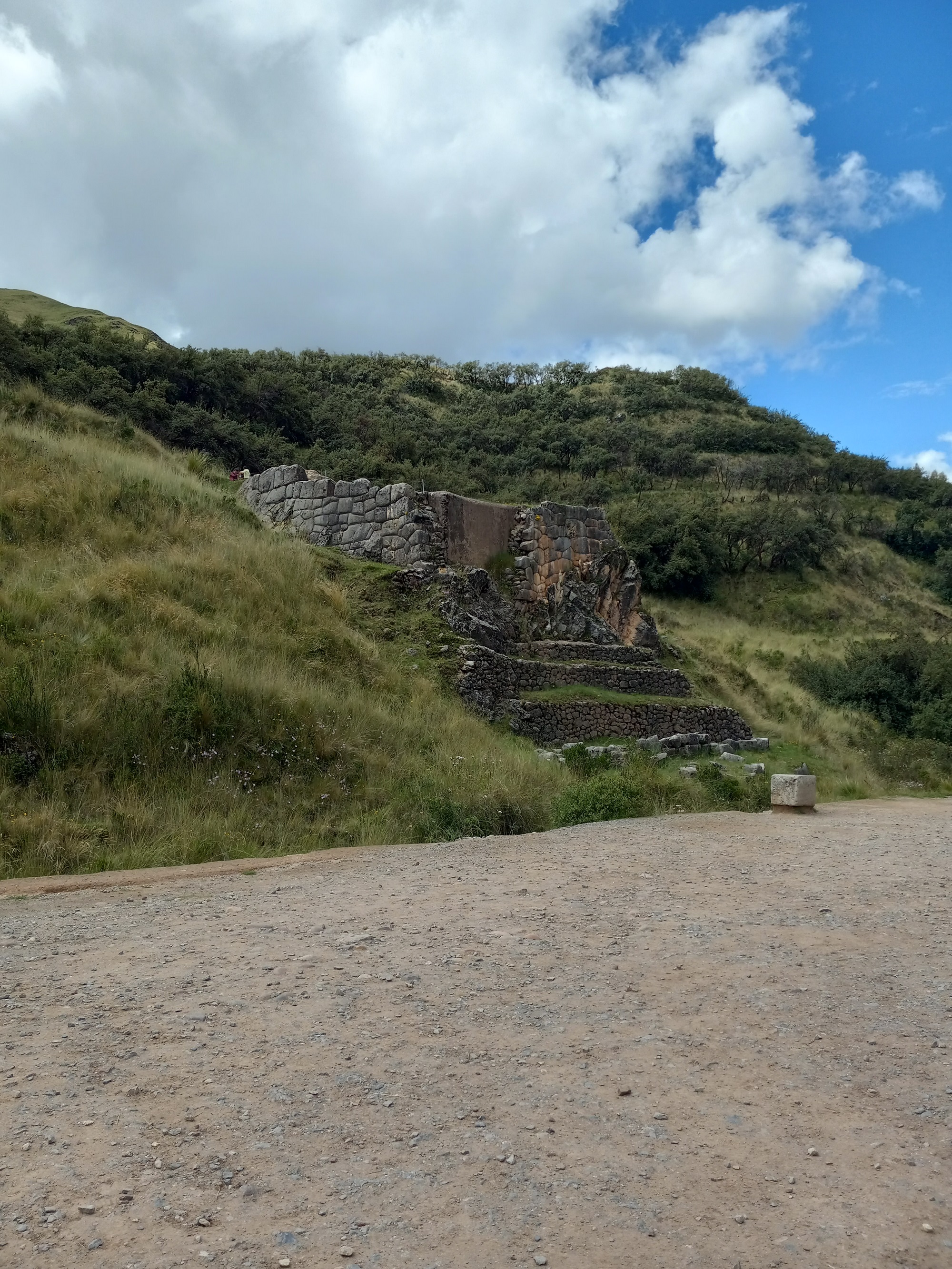
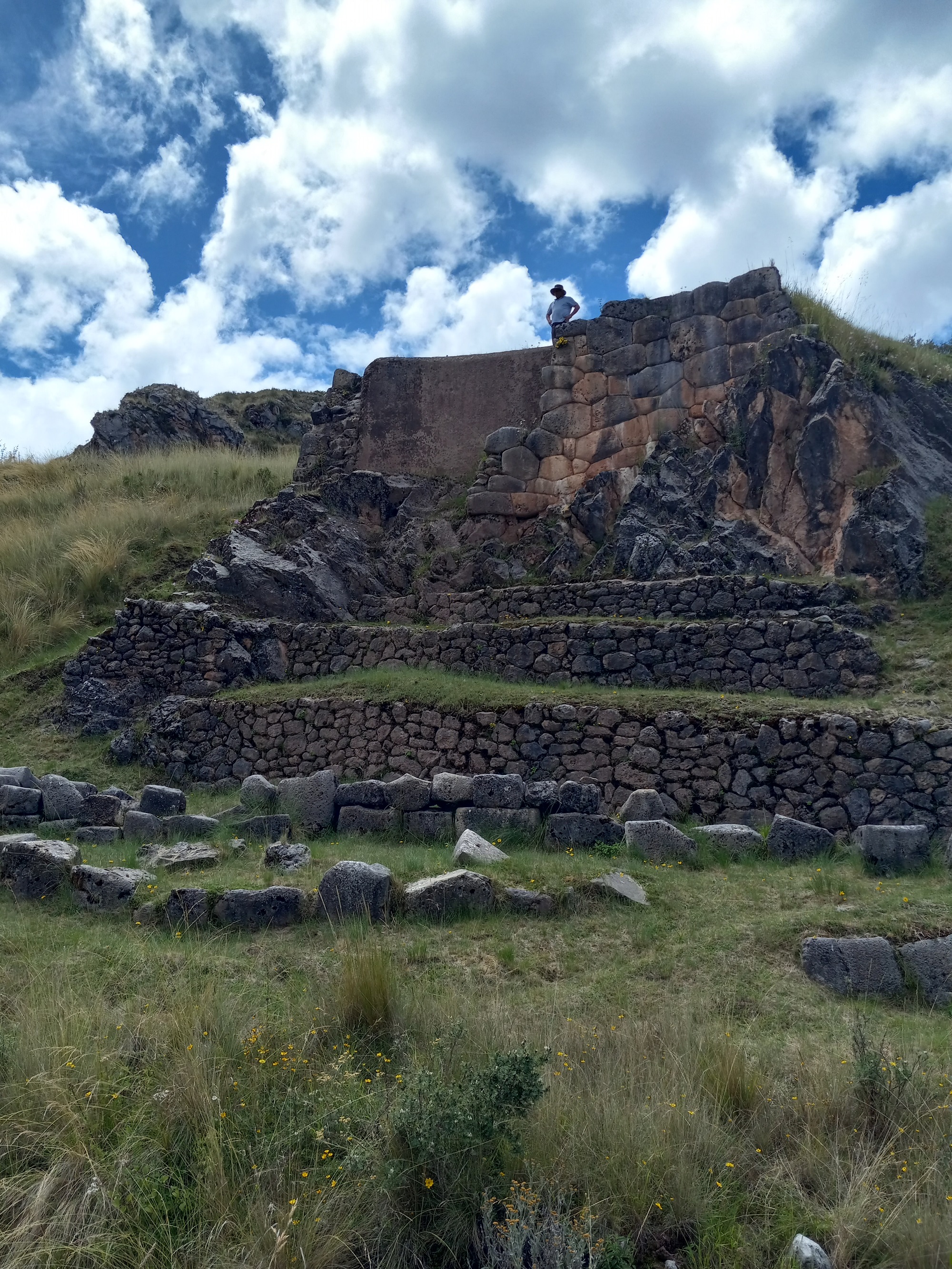
Puka Pukara, the "Red Fortress", overlooks the Cuzco Valley and one of the major roads leading to it. The long valley in the first photo was a prehistoric lake at one time, long before humans came to settle the area:
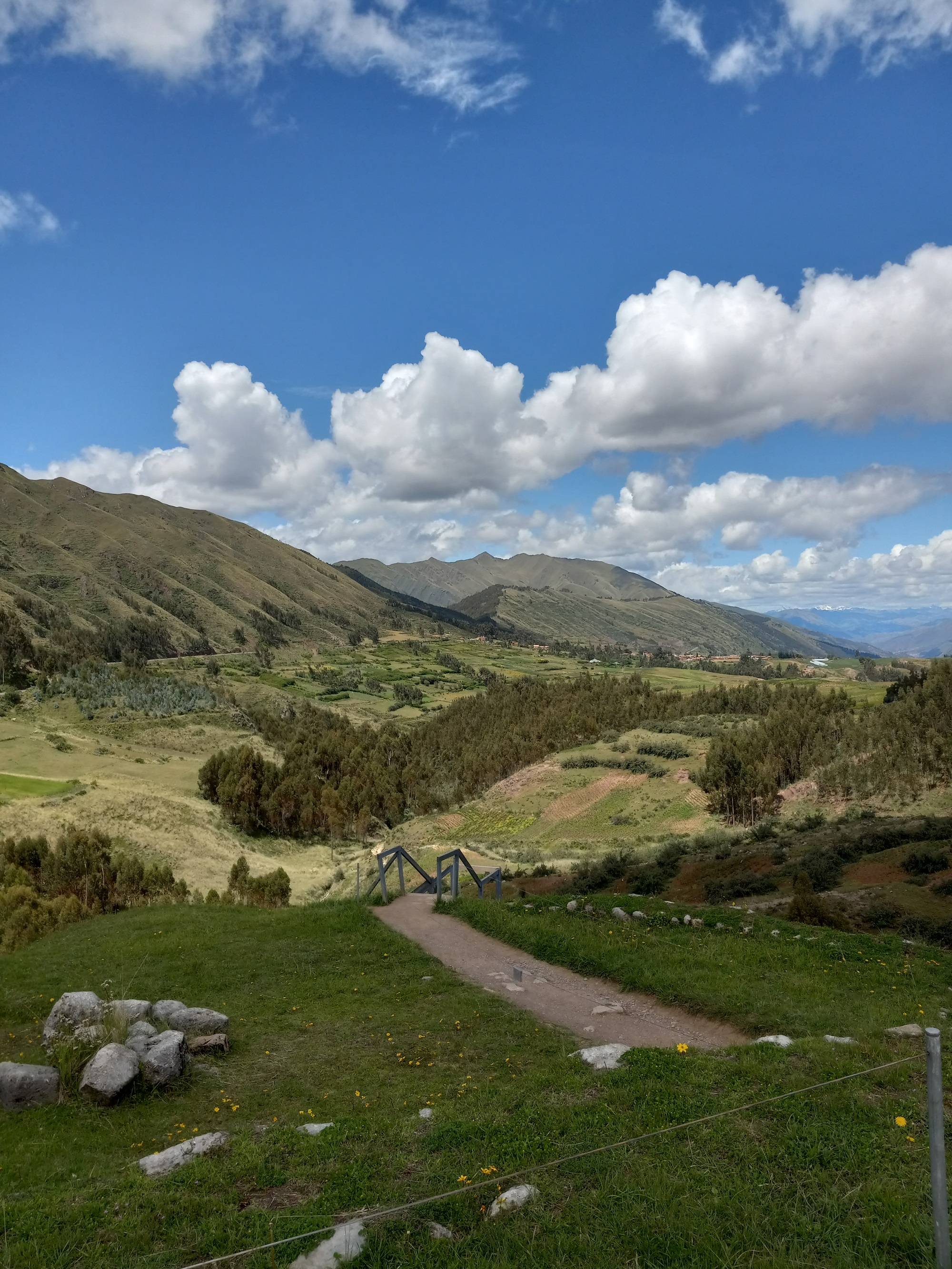
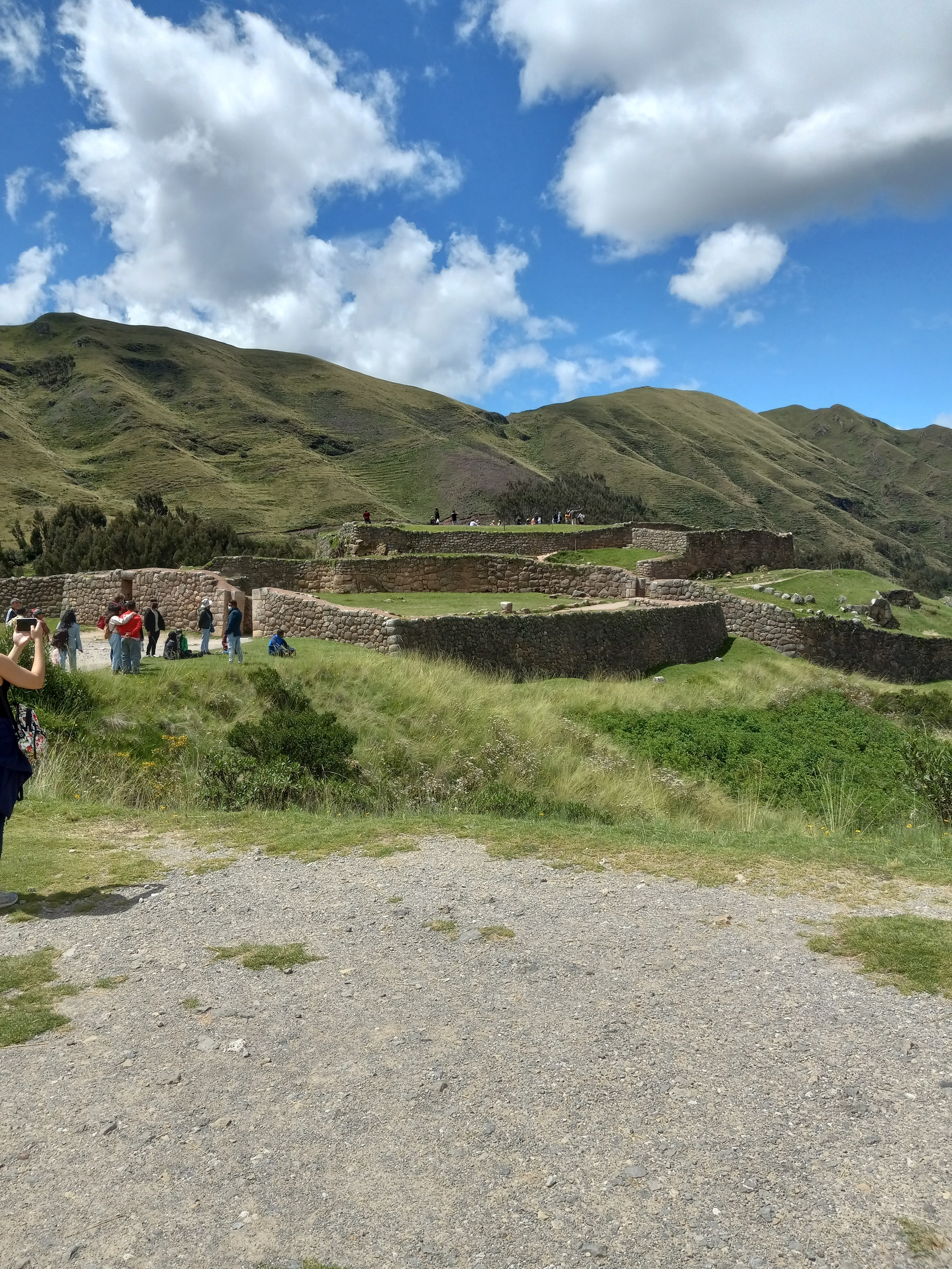

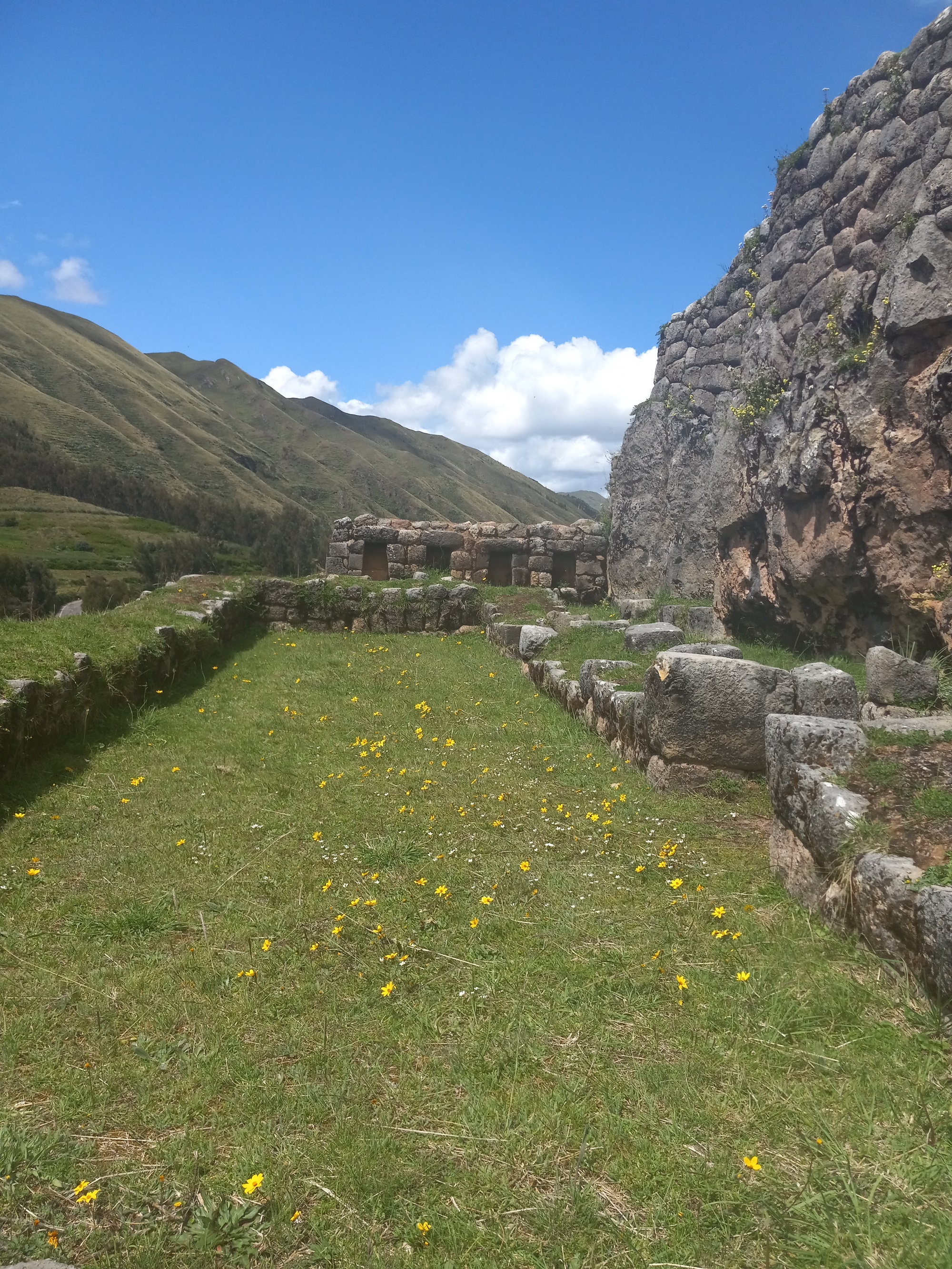

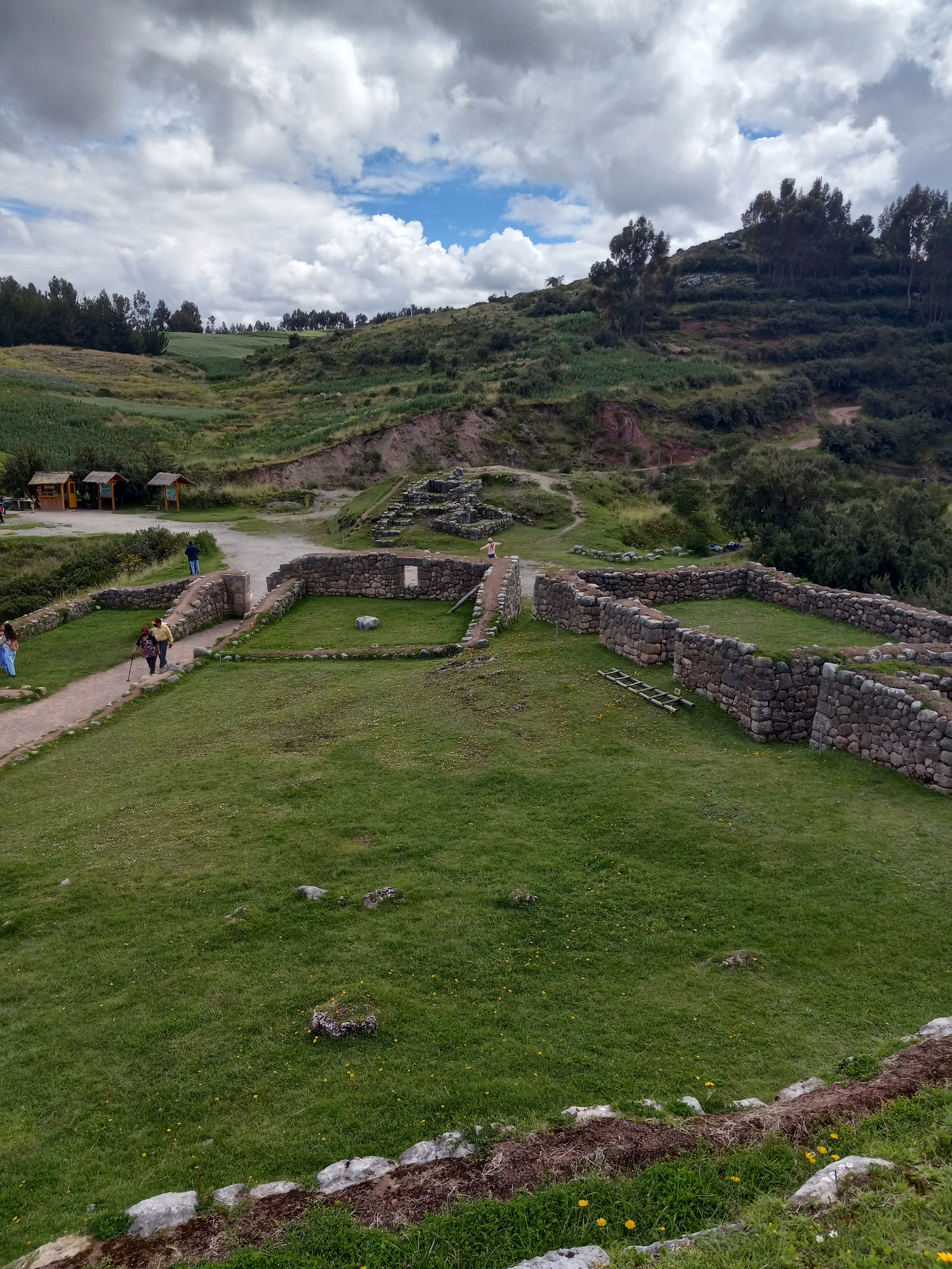
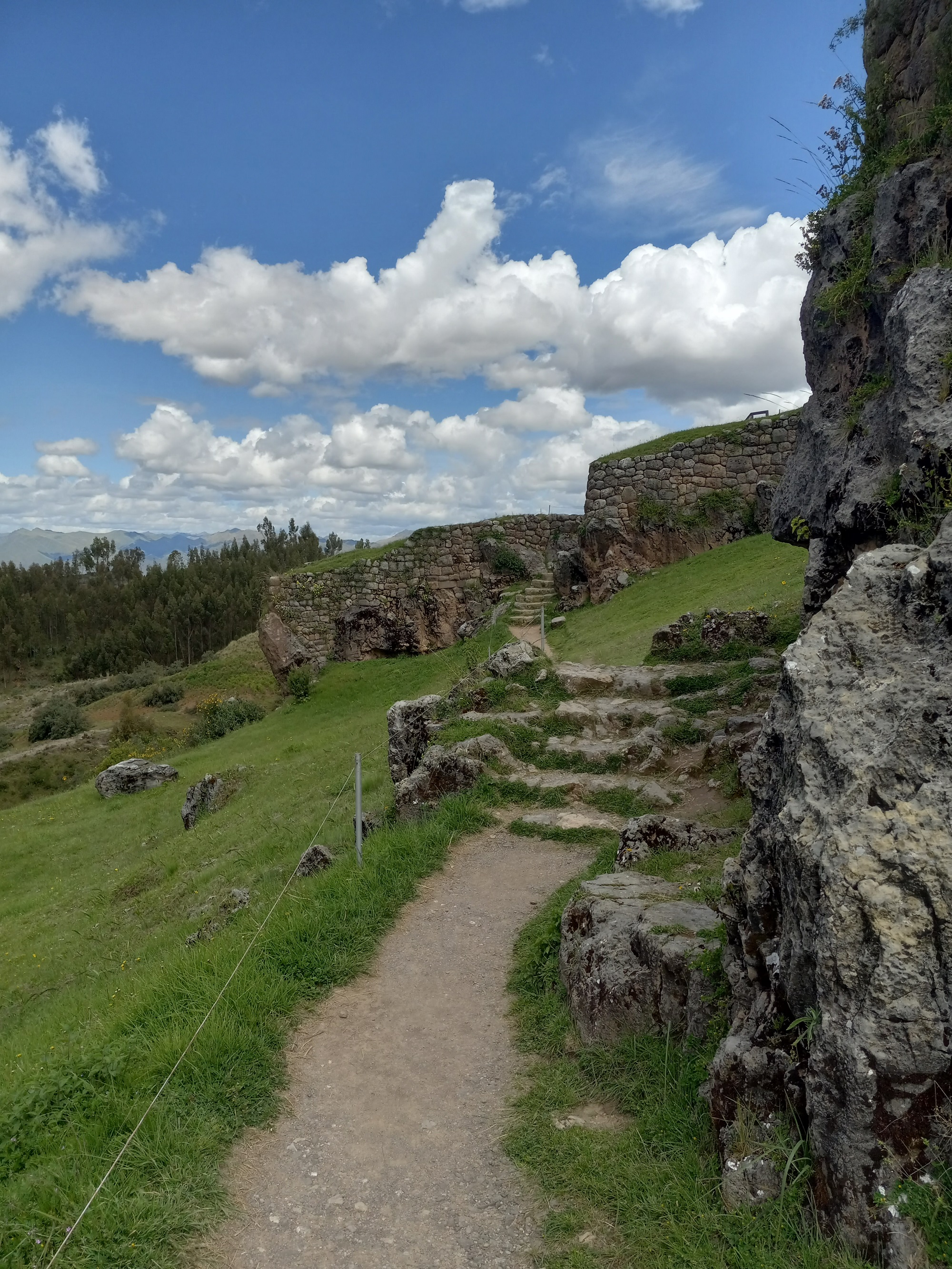
The extent of these underground cave systems is unknown. It is thought that there may be an enormous network of underground caverns and passageways extending as far to the north as Ecuador and south to the Amazon basin. My friend was all set to explore them, but I said, "Nope, not me!" I would never do that. ;)
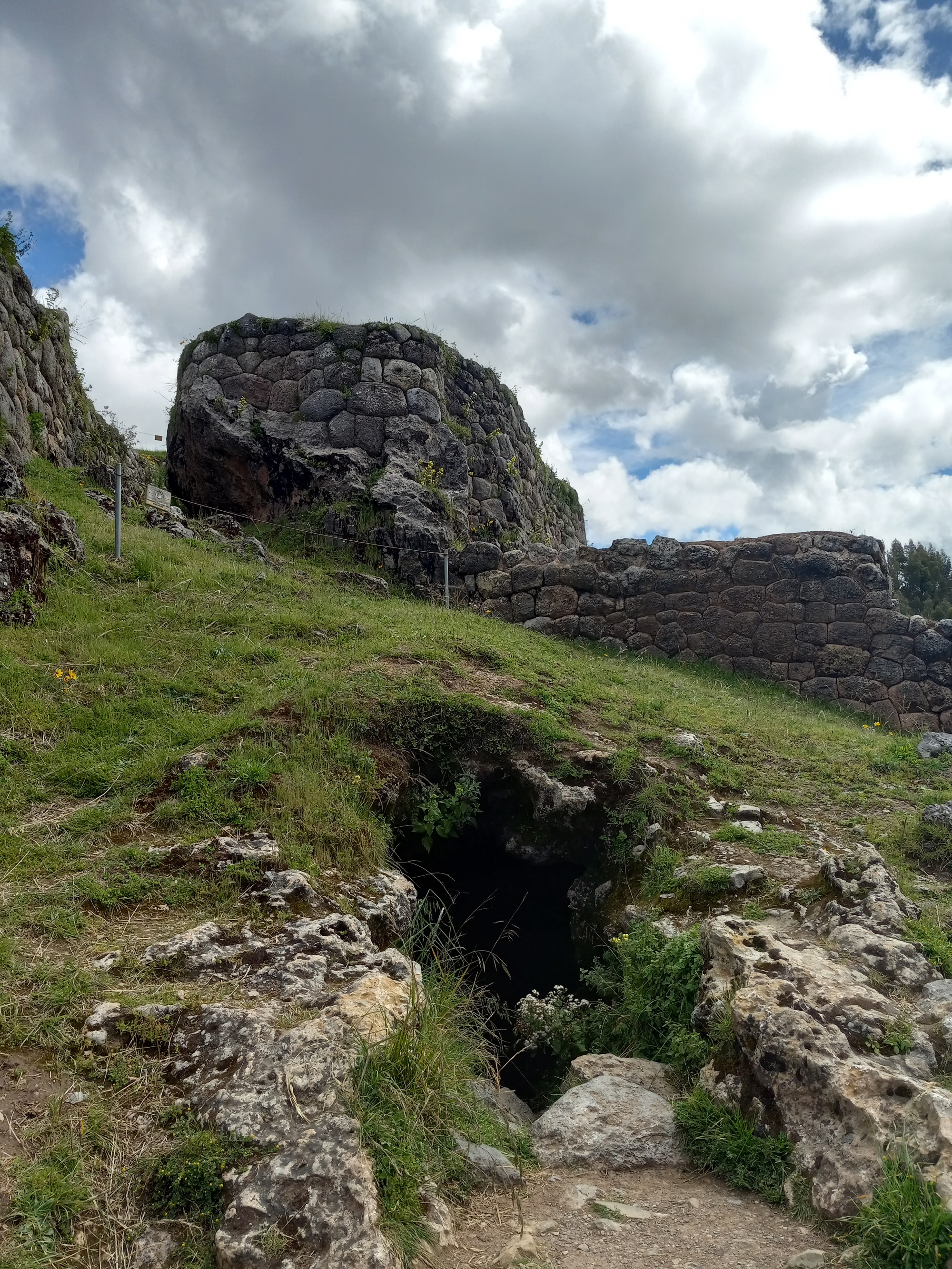

Wednesday morning, we took a cab to Ollantaytambo, our next stop along the Inca trail. Our driver was really cool. He had his phone set up to translate Spanish, by voice, into English so he could point out and explain cool sites or ask us where we wanted to go. He also played us some cool Quechua music on the radio - lots of pan flute - the kind of music that would be perfect for shamanic journeying. We asked him to come back on Friday and pick us up for the ride back to Cuzco. He did. :) And, now, let's carry on . . .
OLLANTAYTAMBO
Ollantaytambo is an hour and a half from Cuzco, about halfway to Machu Picchu, and sits at an elevation of 9160 feet. We arrived around noon, I believe, and had enough time to check-in, have an amazing lunch, and explore the major ruins the town is built around before they closed for the evening. This is a small, quiet, lovely little town built around the strategic fortress/temple of Ollantaytambo and the accompaning storehouses constructed along the mountainsides for easy storage and transport of grain and other foodstuffs. The fortress was the site of a great Incan victory against the Spanish soldiers of Pizarro in 1536. It fell(or was abandoned) the following year as the Inca retreated to their final refuge of Willkapampa deep in the forest. The foundations, cobblestone streets, and system of aquaducts date back to this time.
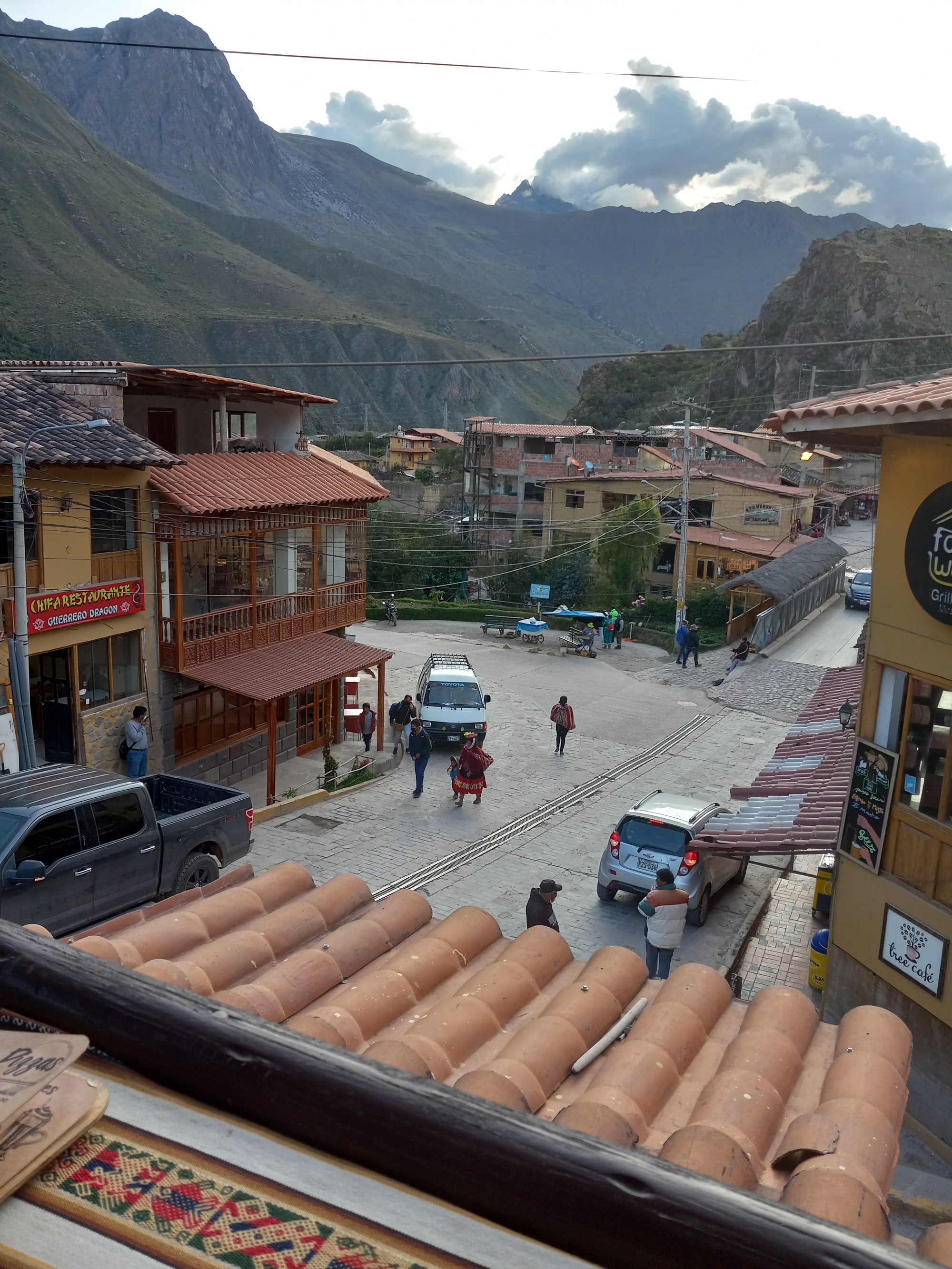
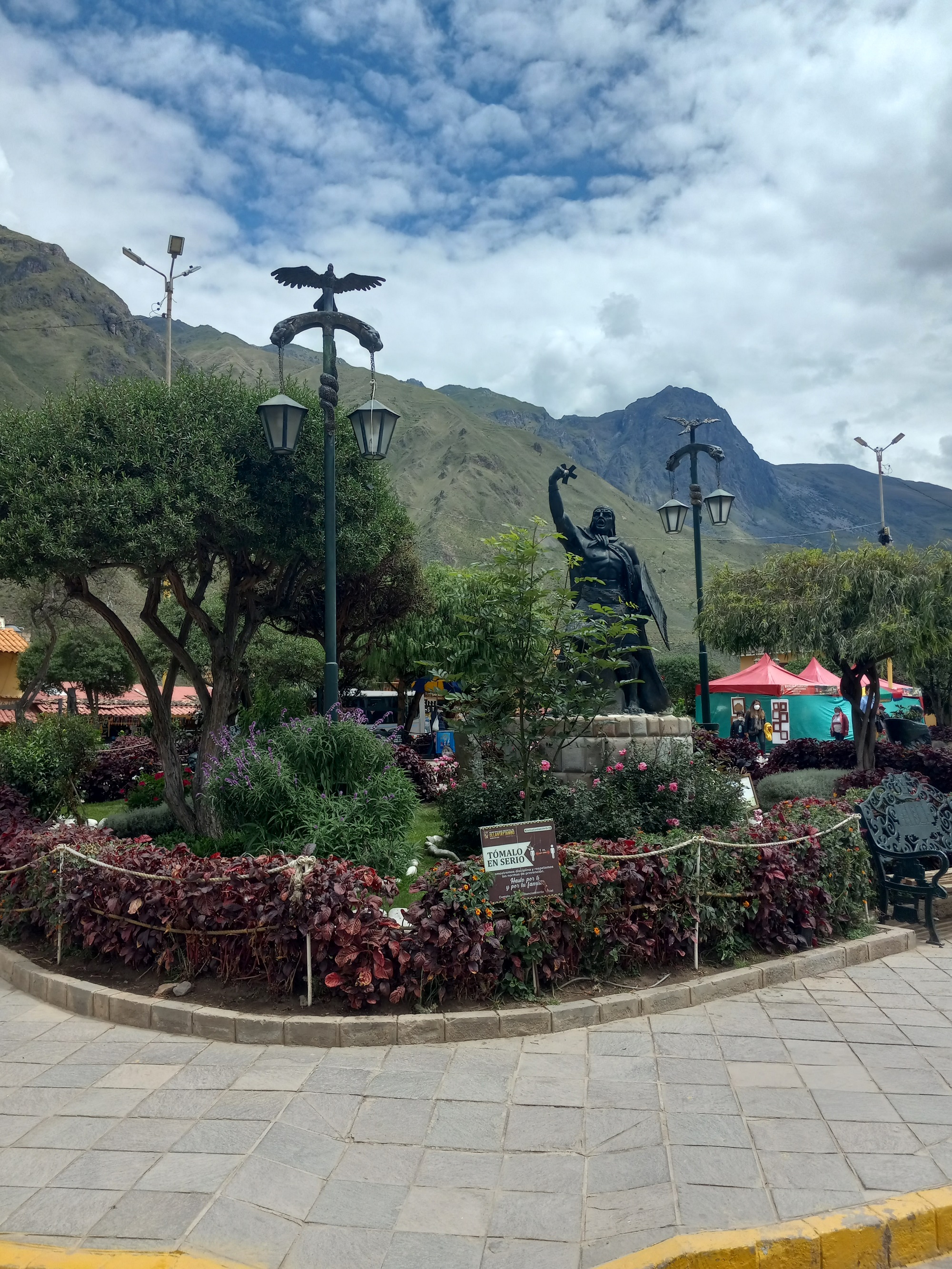
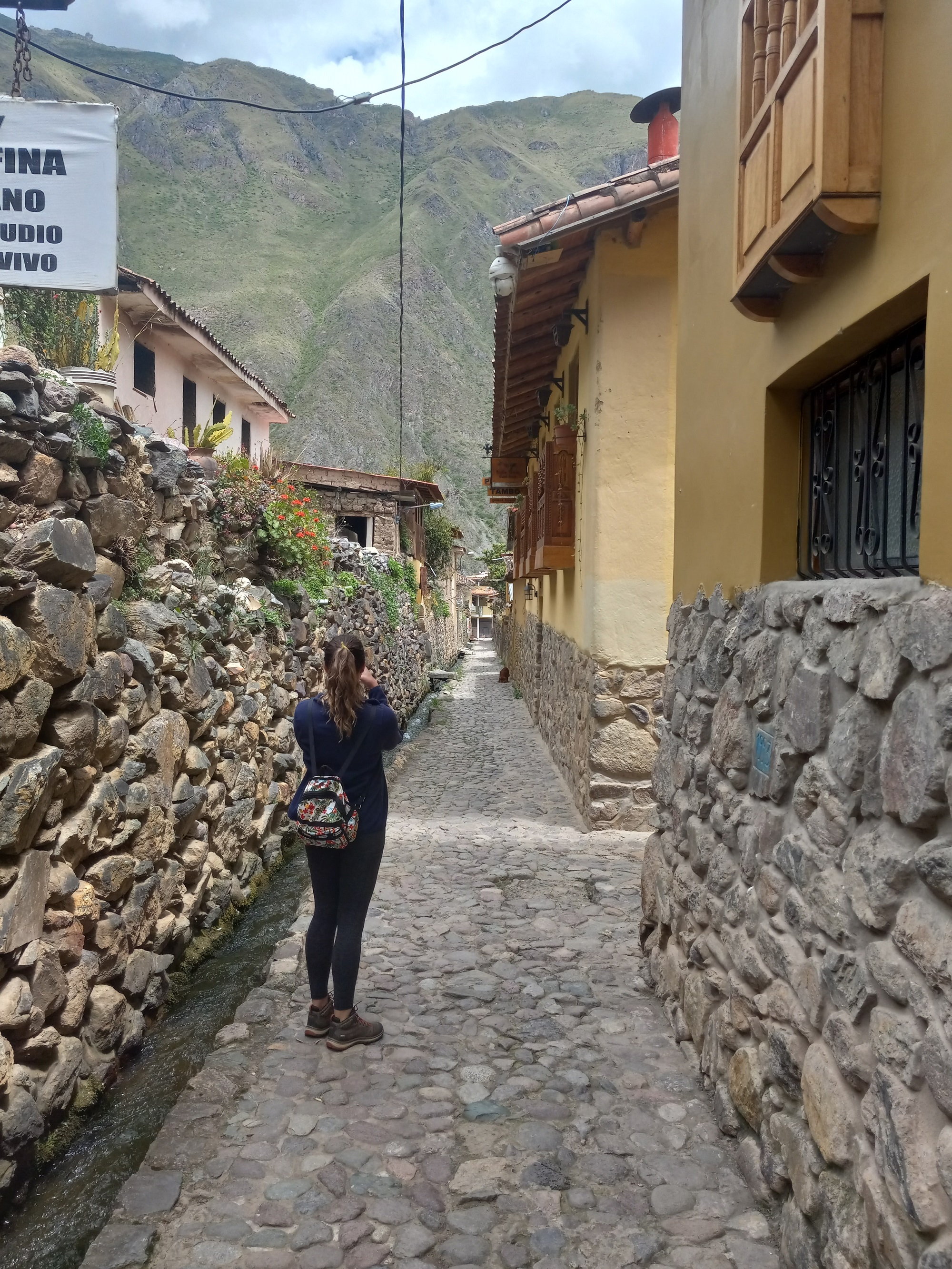


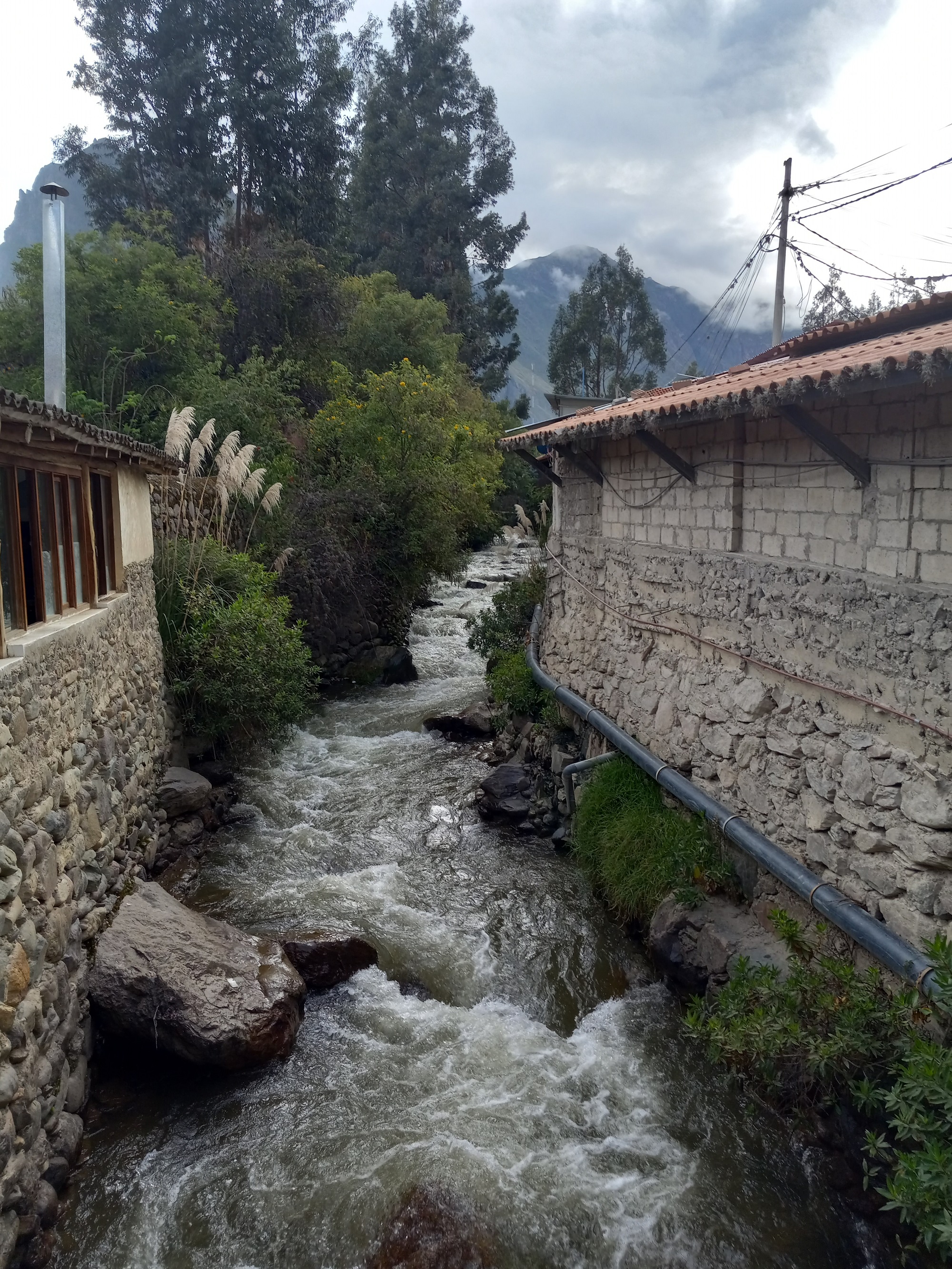
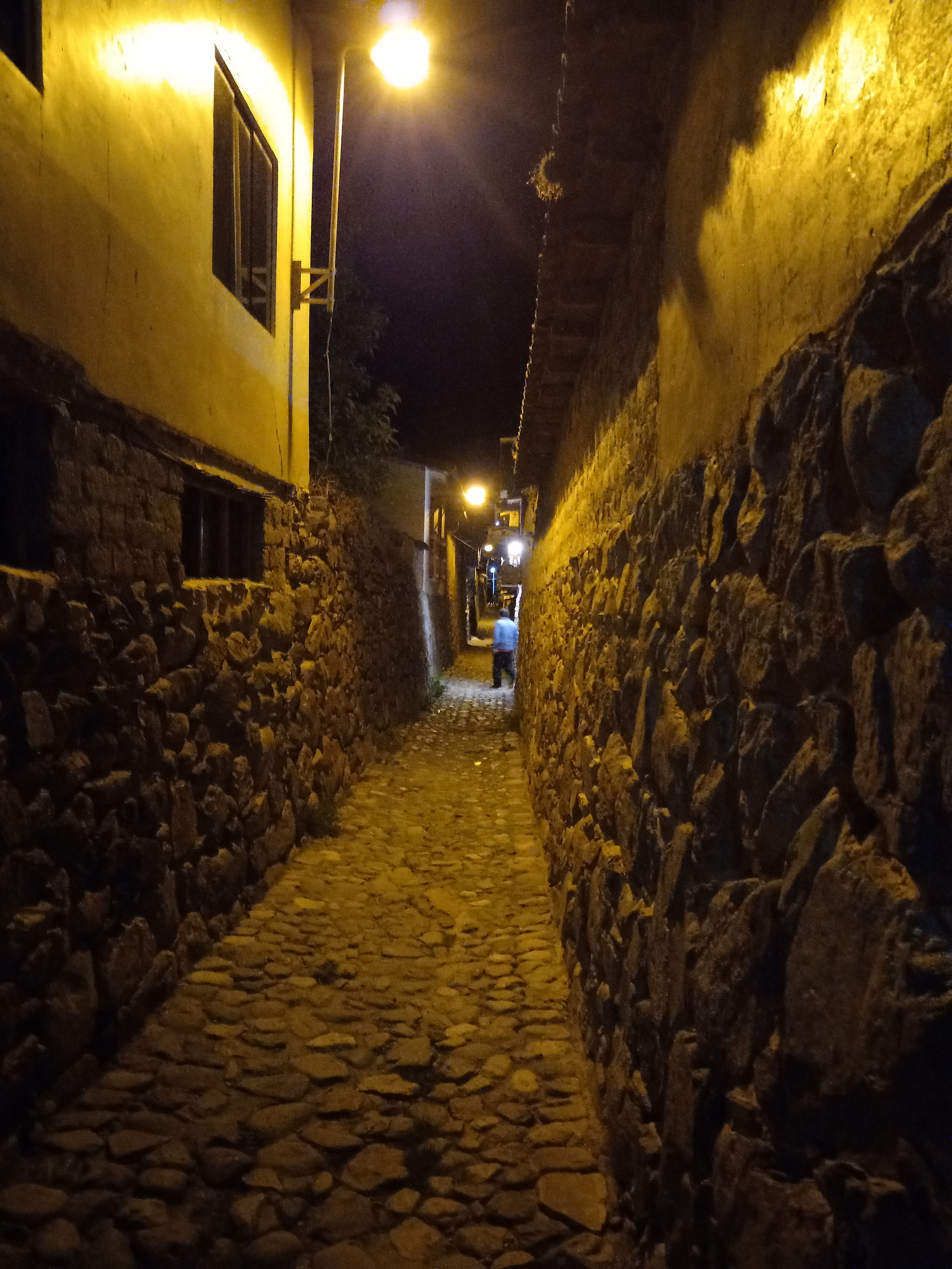


We stayed at the cozy Kamma Guest House. . .
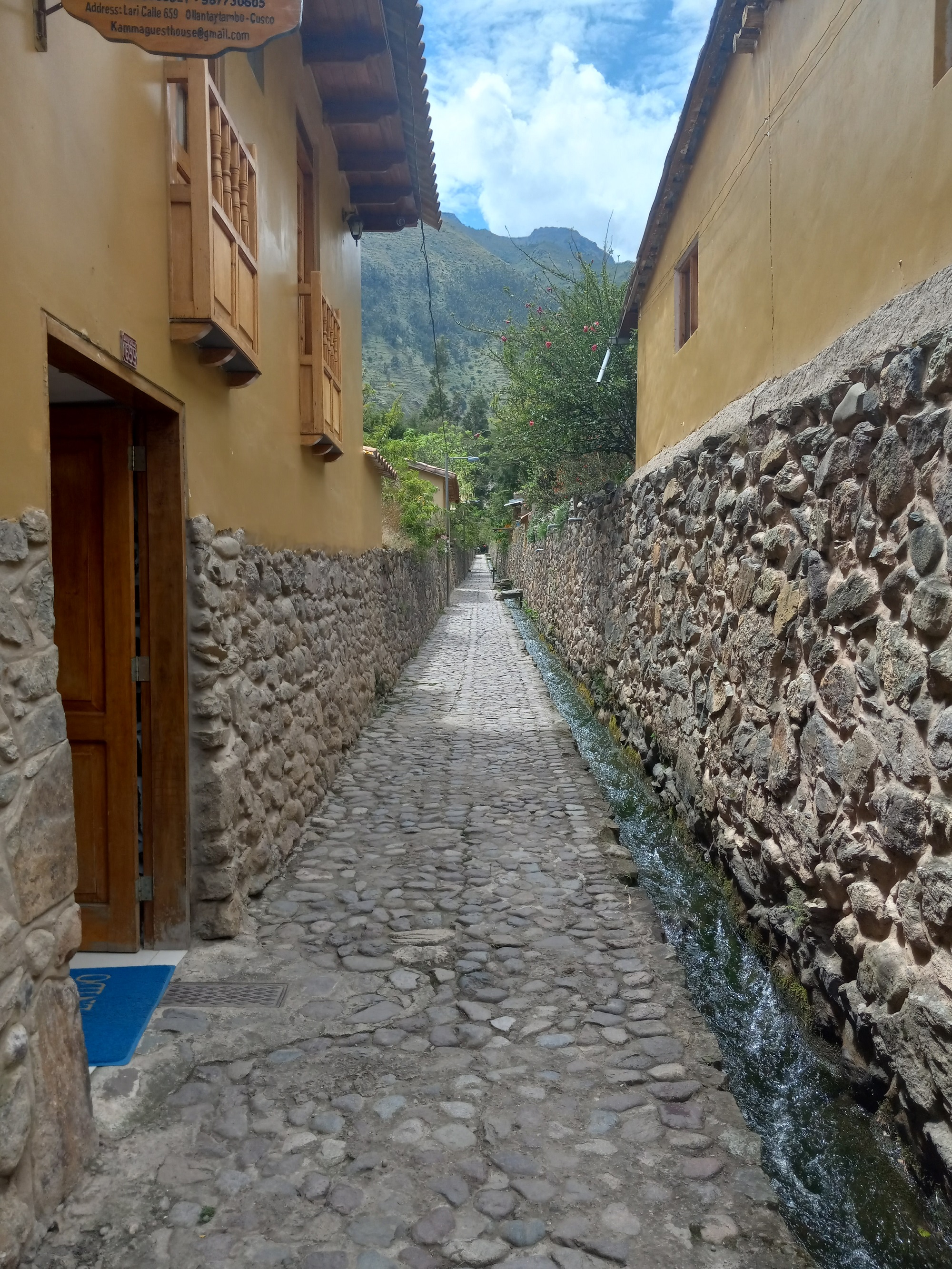
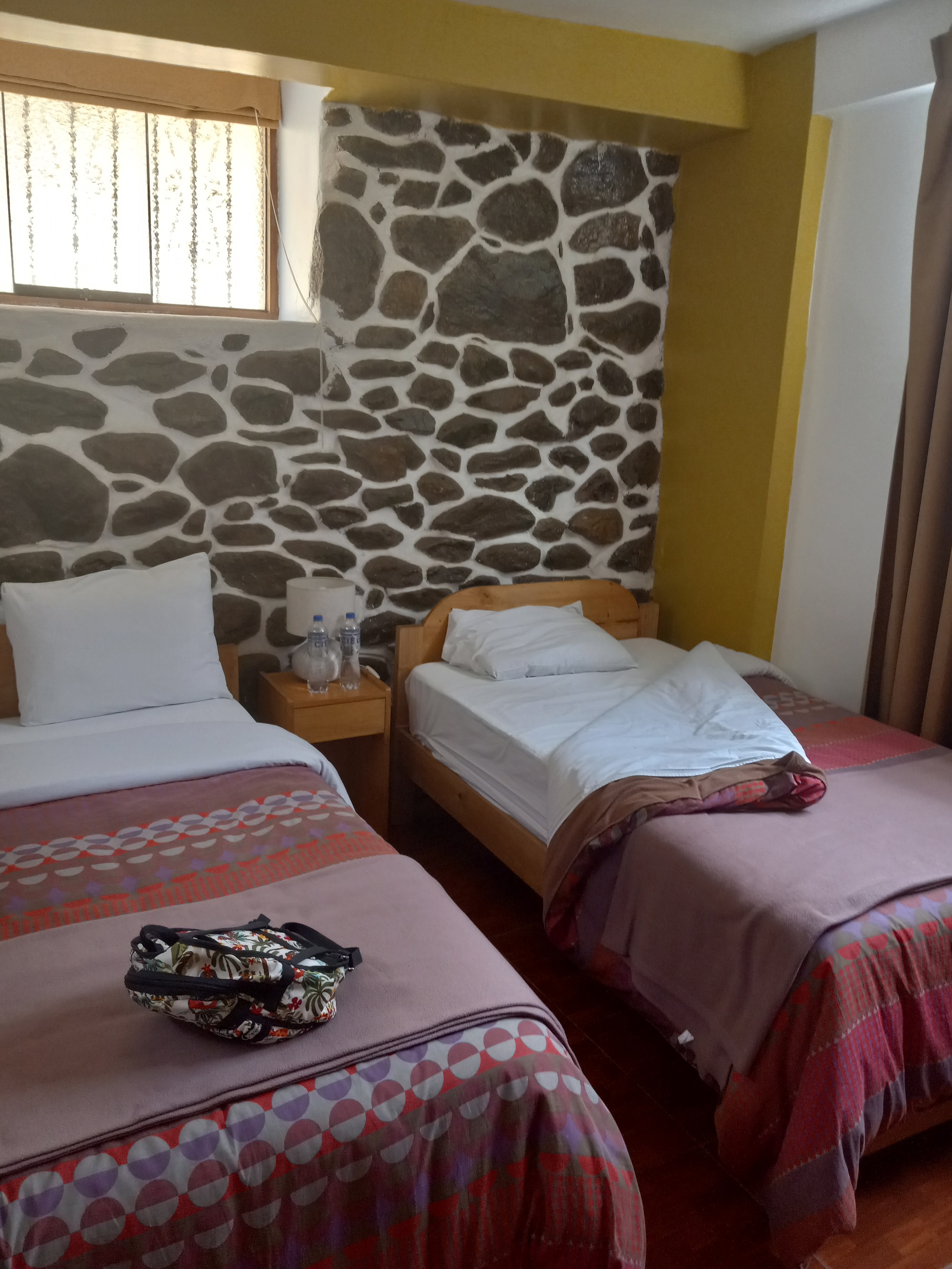

Our host was wonderful. Each morning, she would get up around dawn and go upstairs to the rooftop kitchen to cook breakfast for the guests.
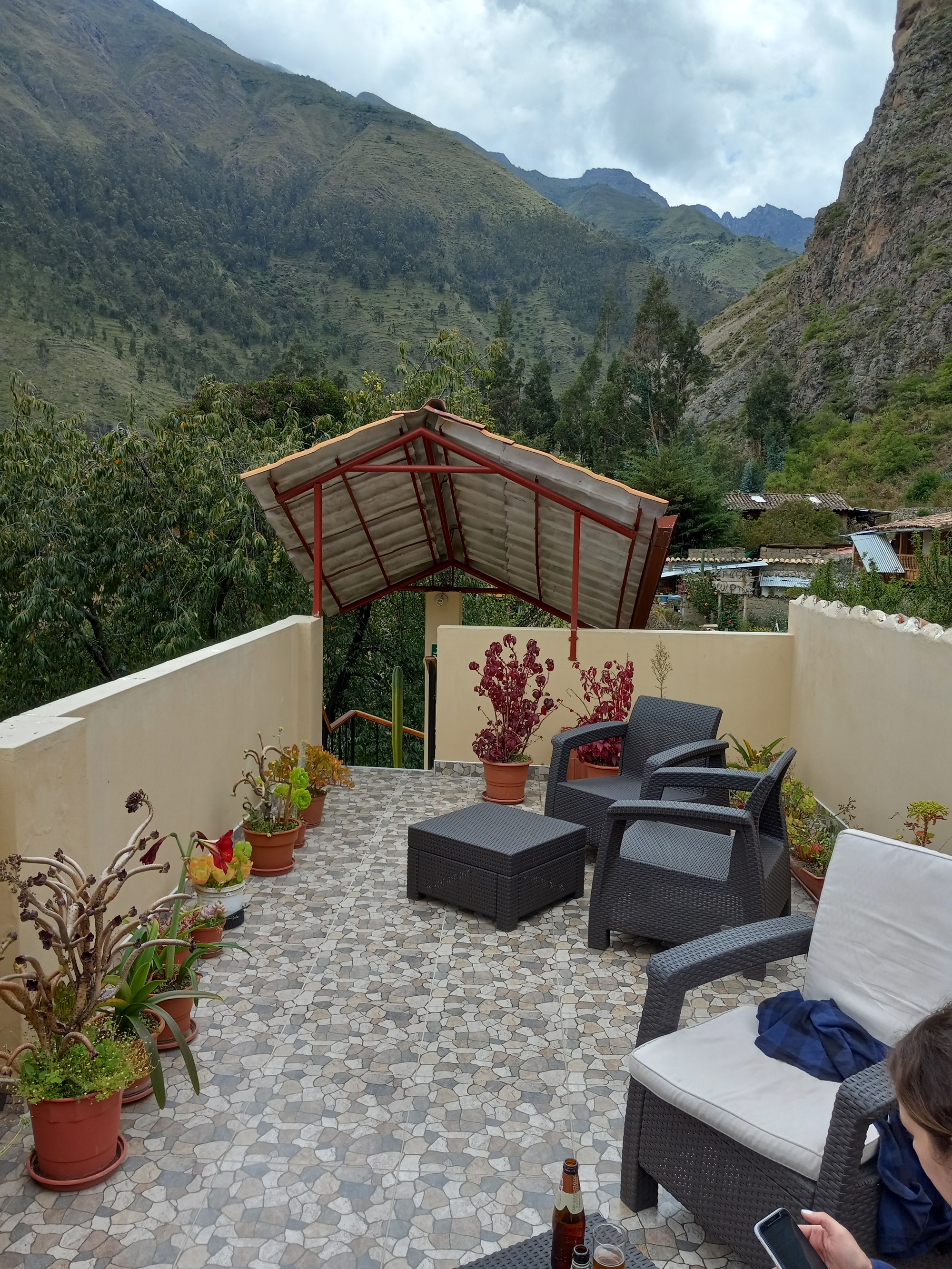
From the roof, you can see the fortress/temple on one side of town, and the archaeological site of Pinkuylluna on the other. The entrance to the archaeological site was just across the cobblestone alley from the place we were staying.
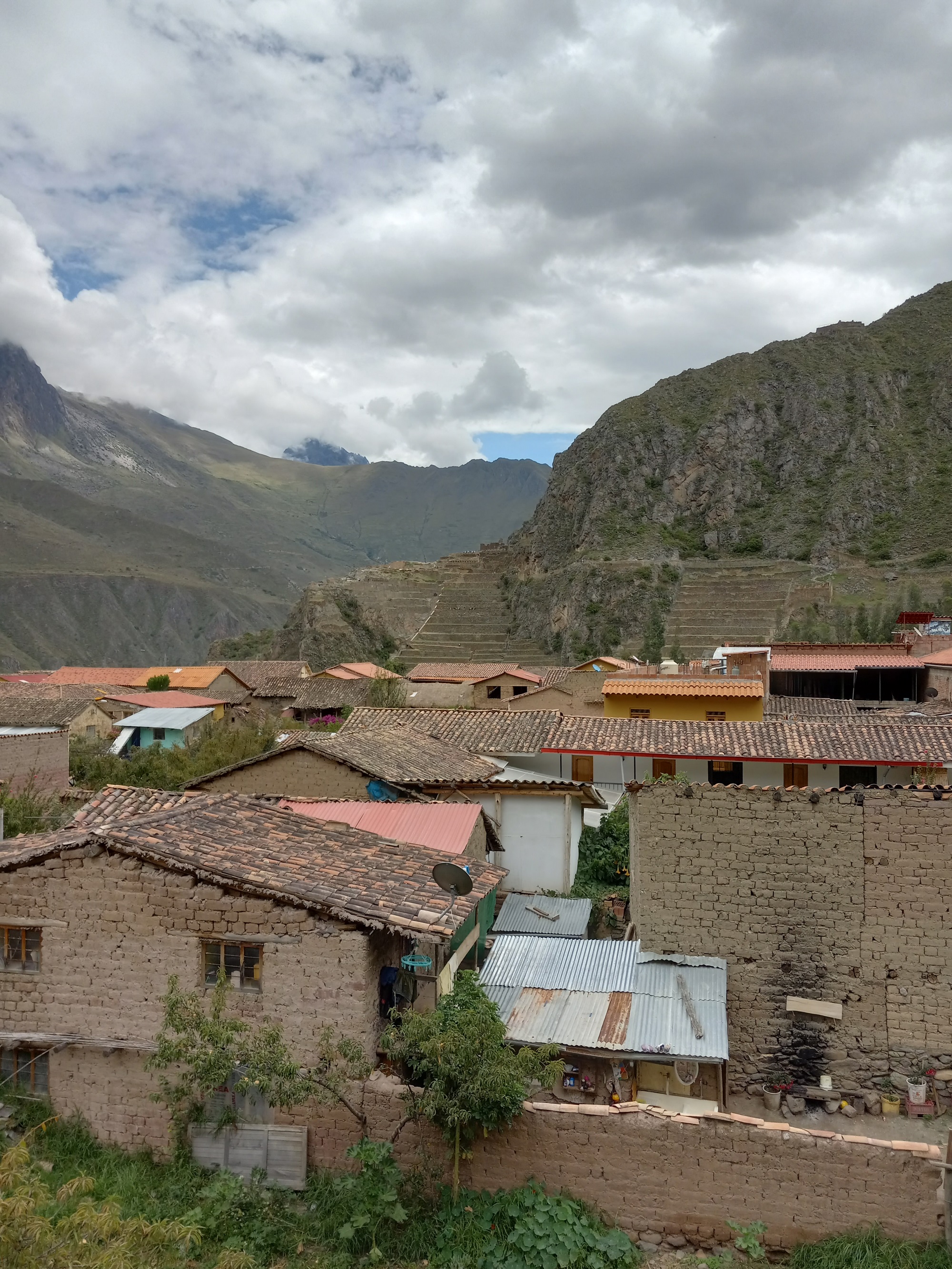
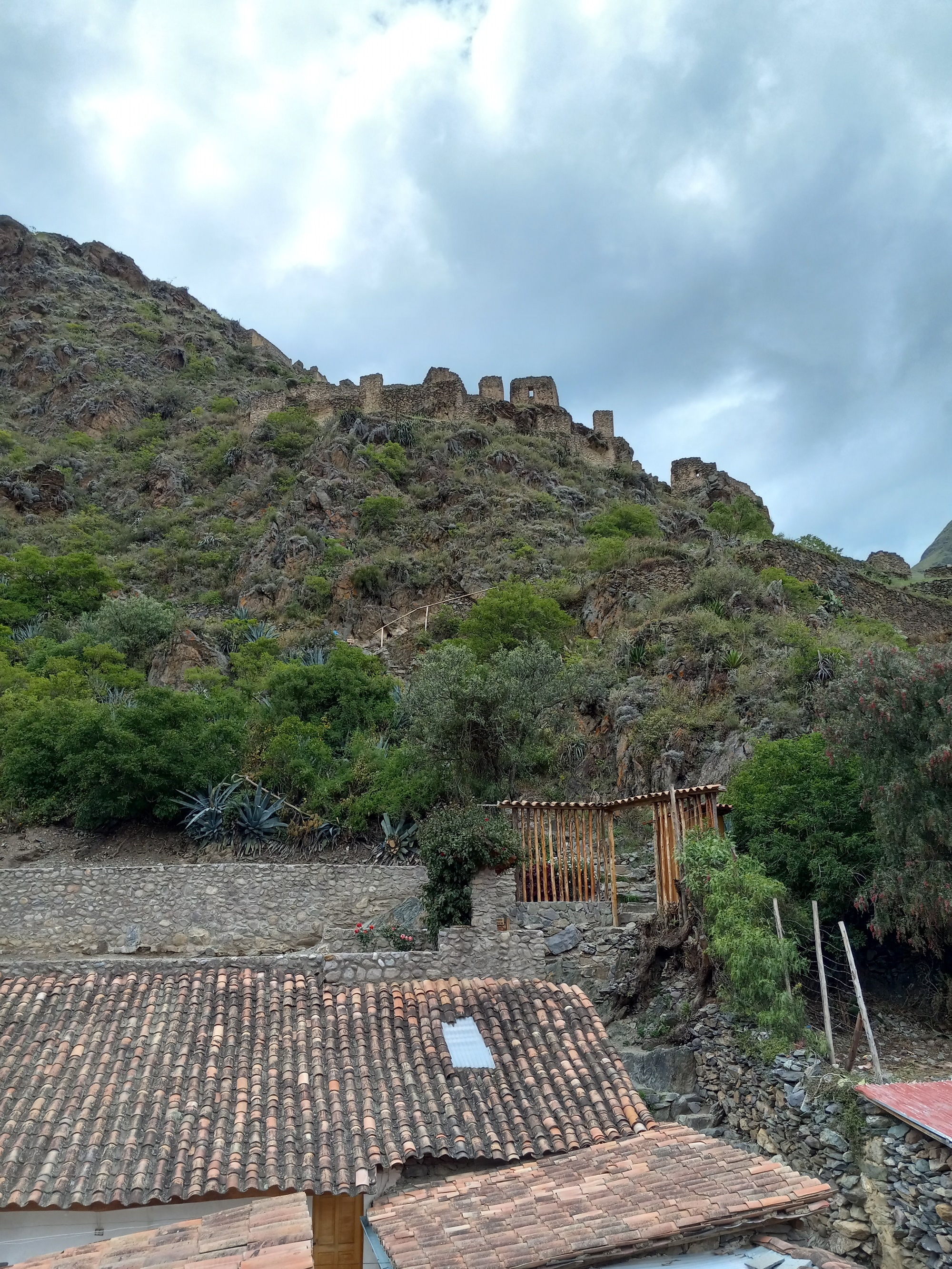
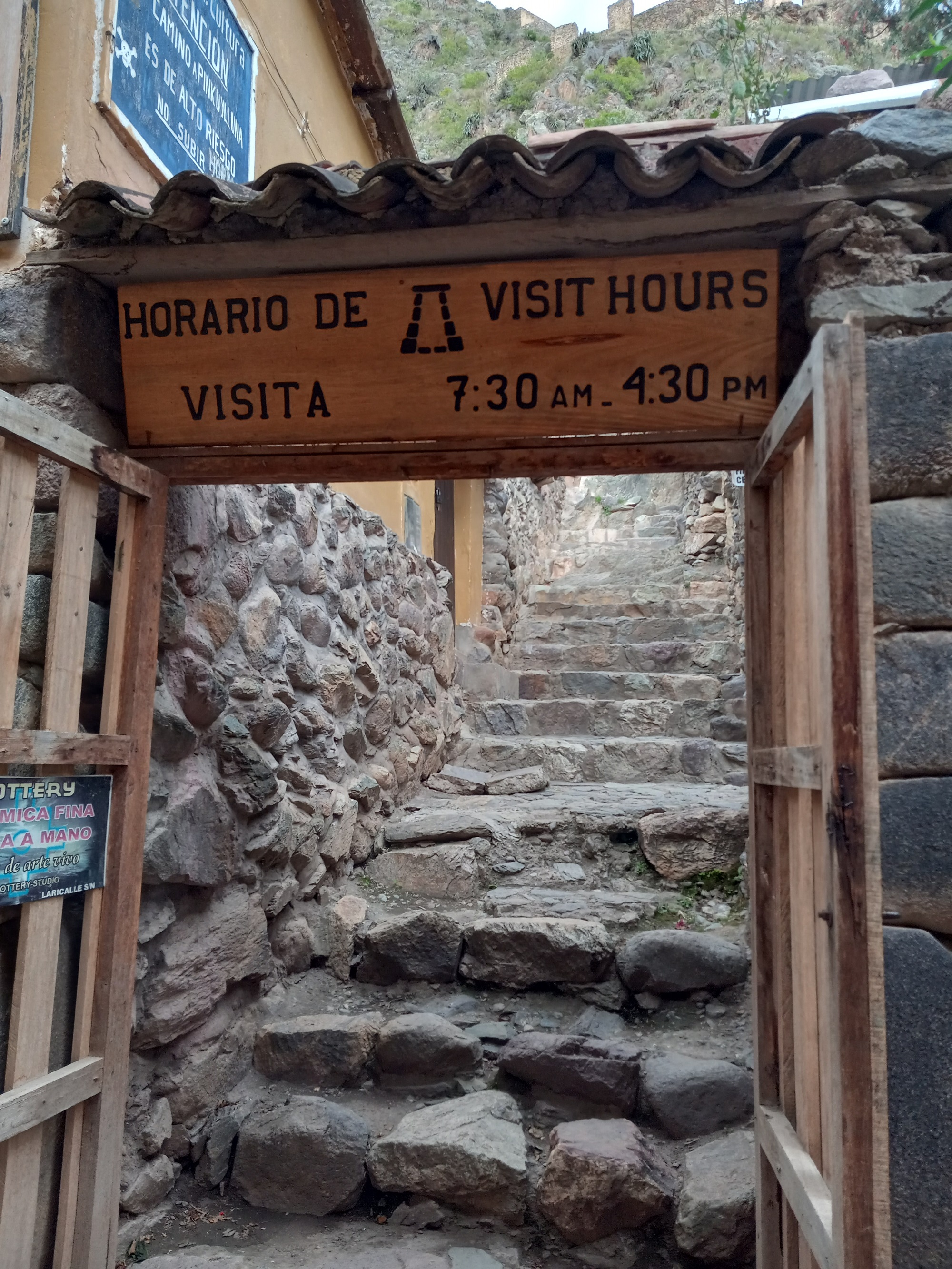
The food in this town, as in all the others, was amazing, like this meal of beef, alpaca, and lamb at Apu Veronica. Also notice the giant passionfruit drink in front of Mariza. Passionfruit rules in Peru. It is delicious. And. It. Is. Everywhere. :)
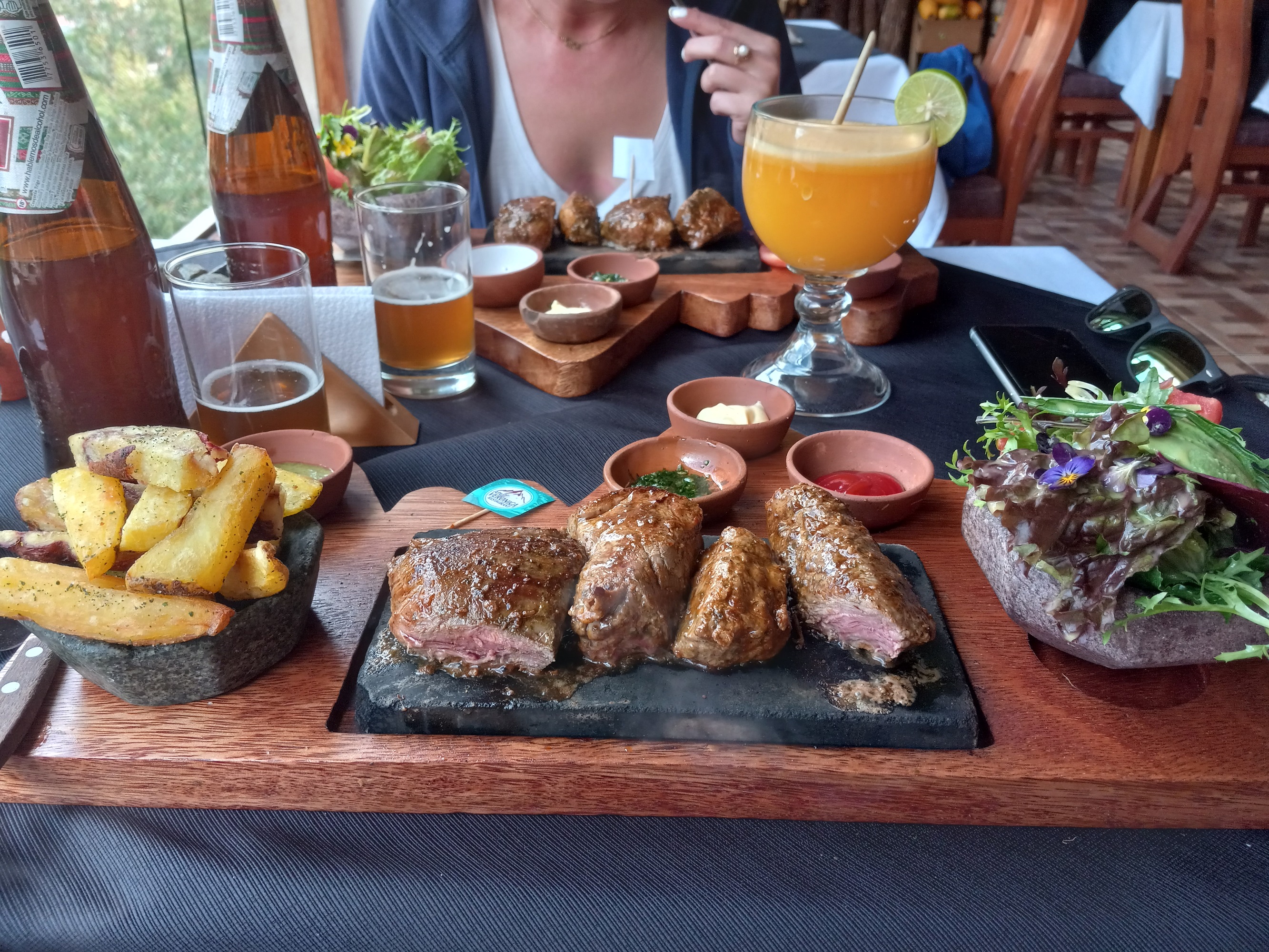
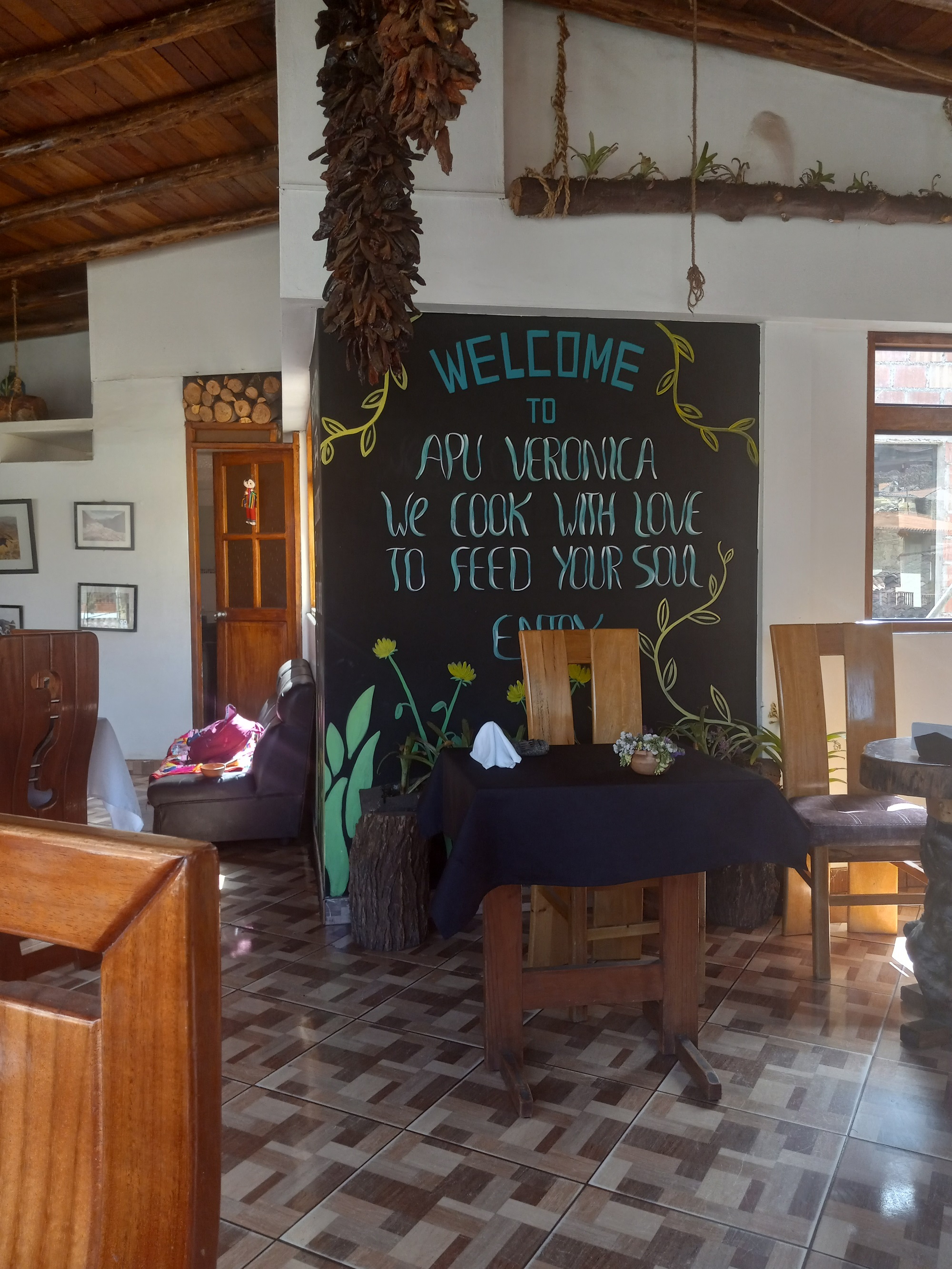
After lunch, we went to the main site of Ollantaytambo.
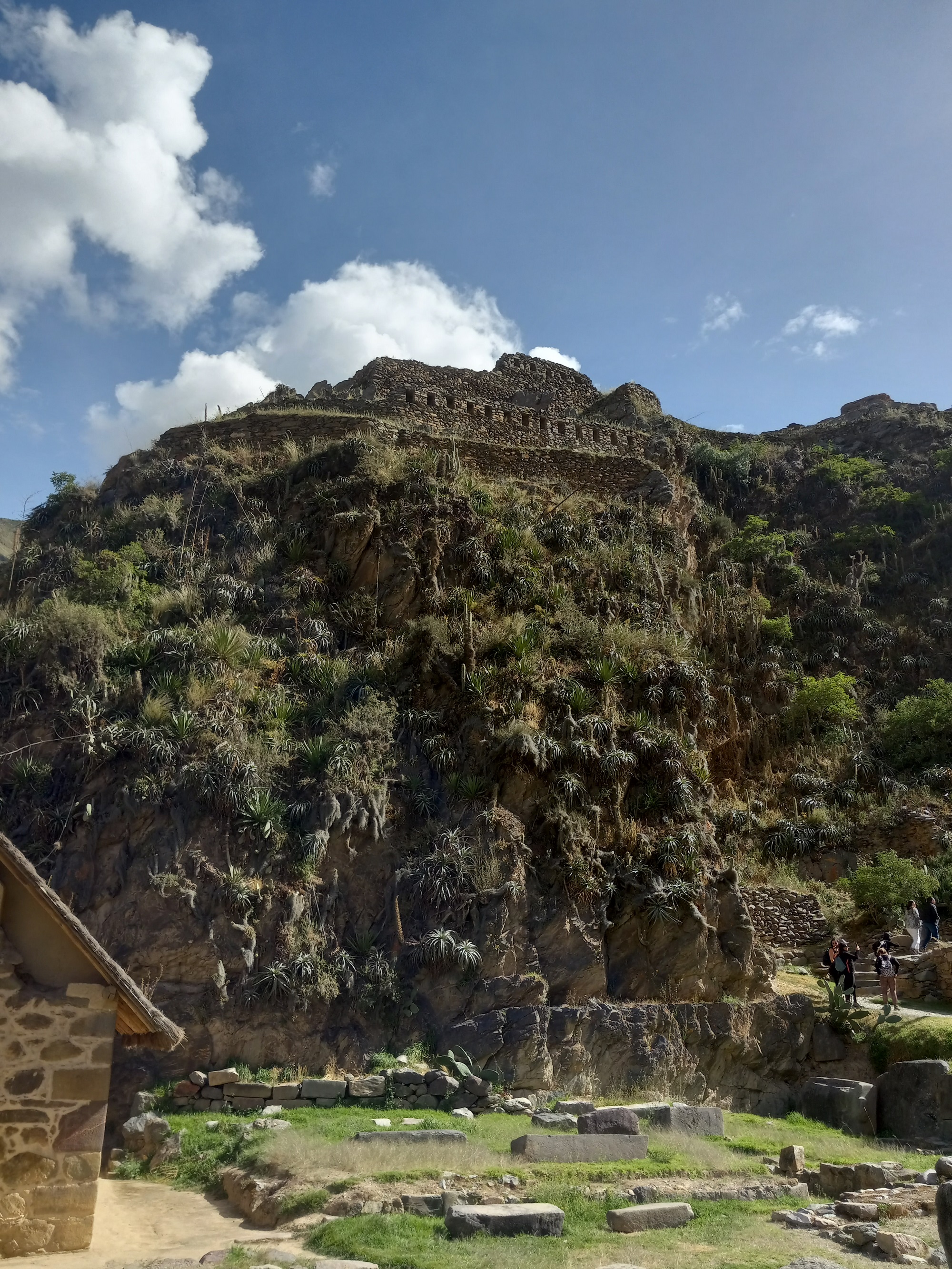

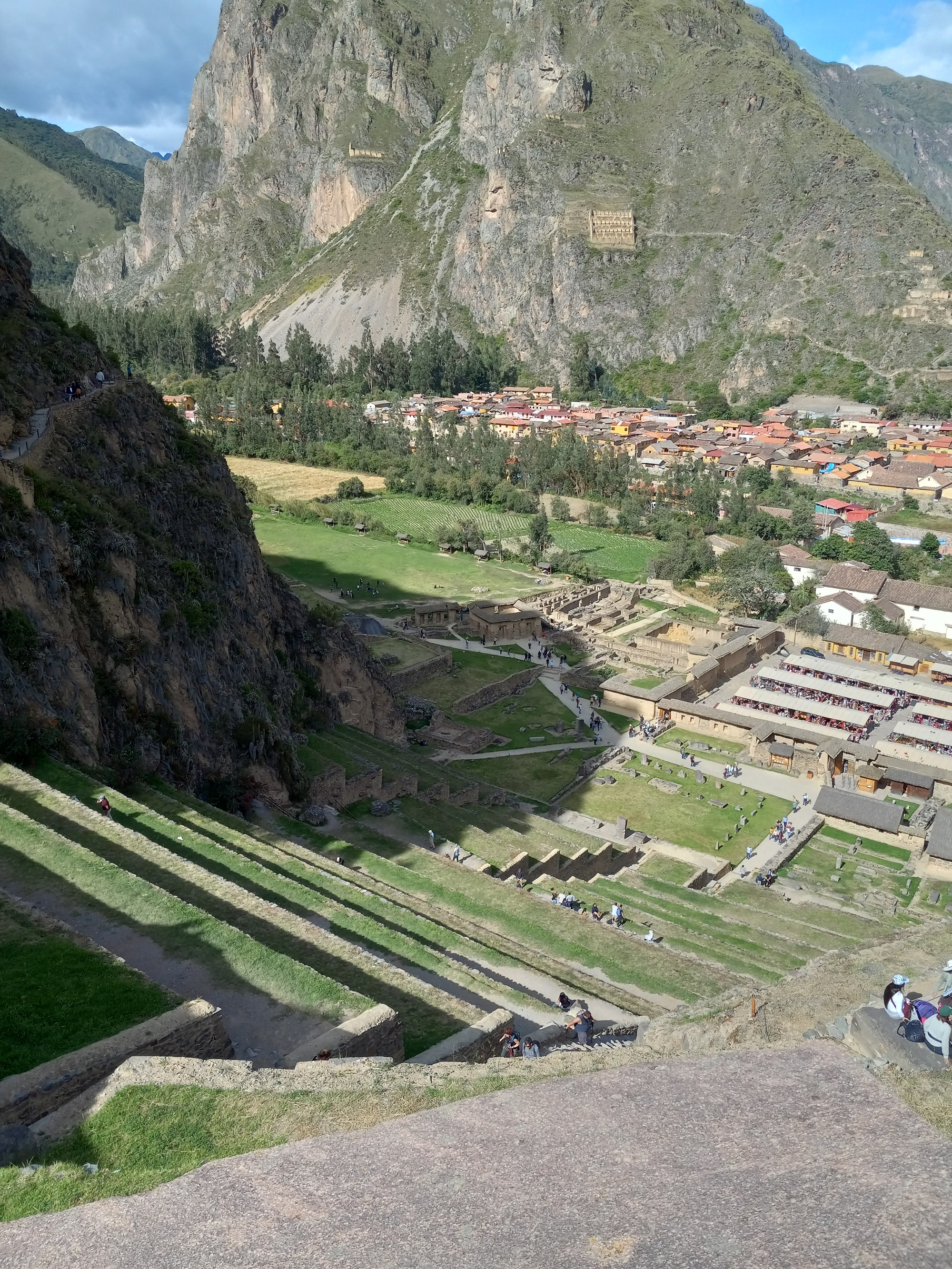
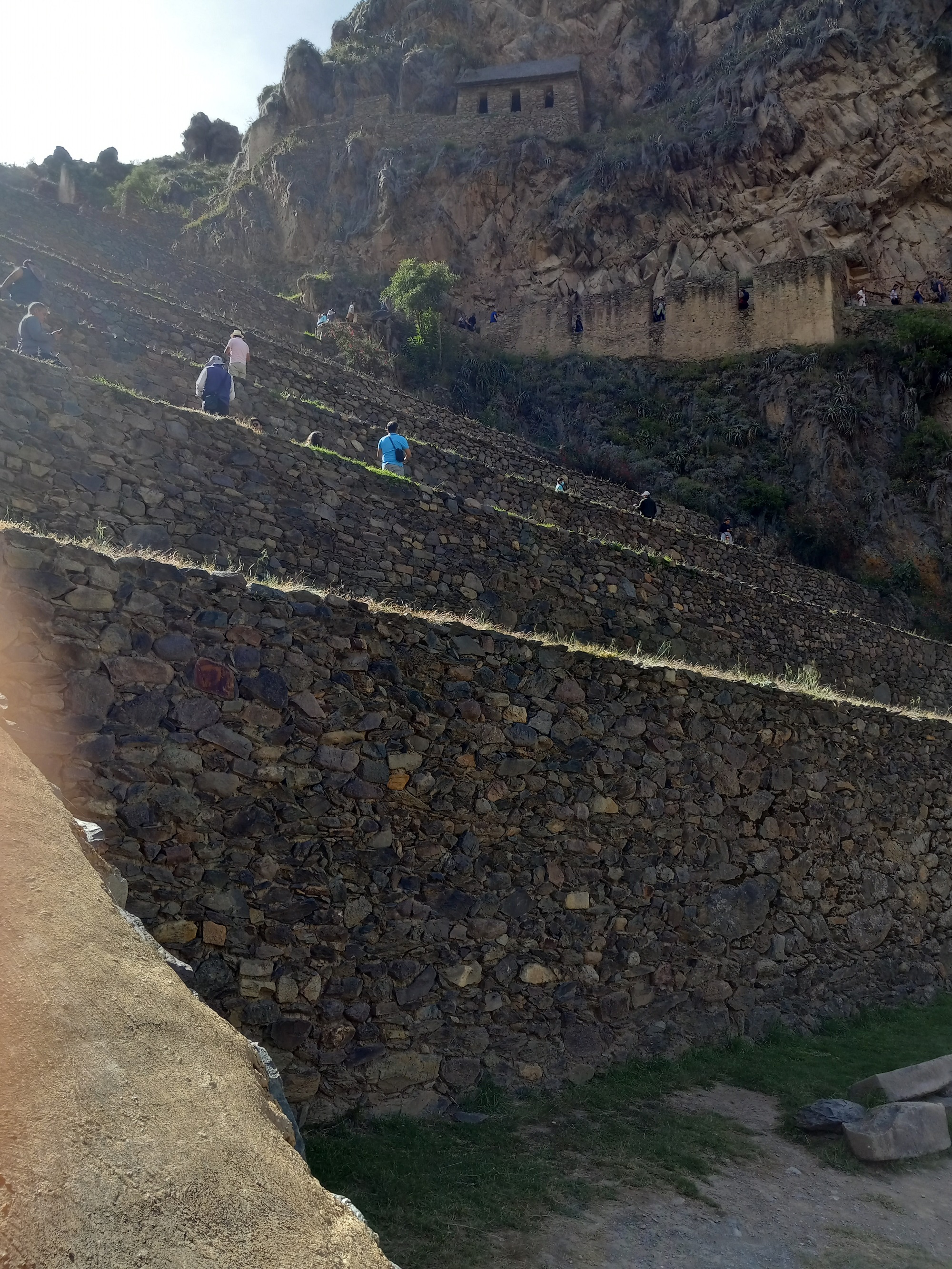
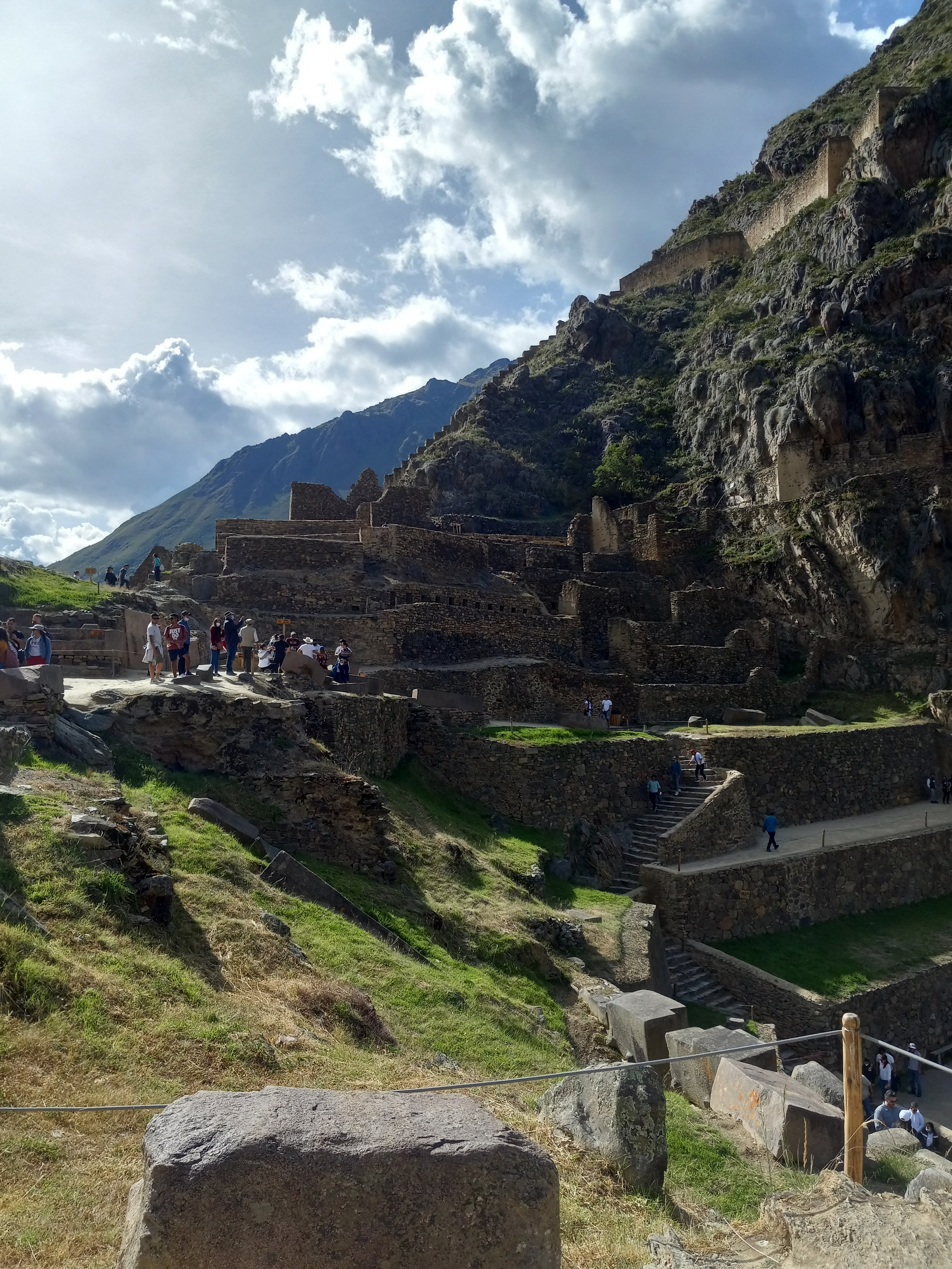

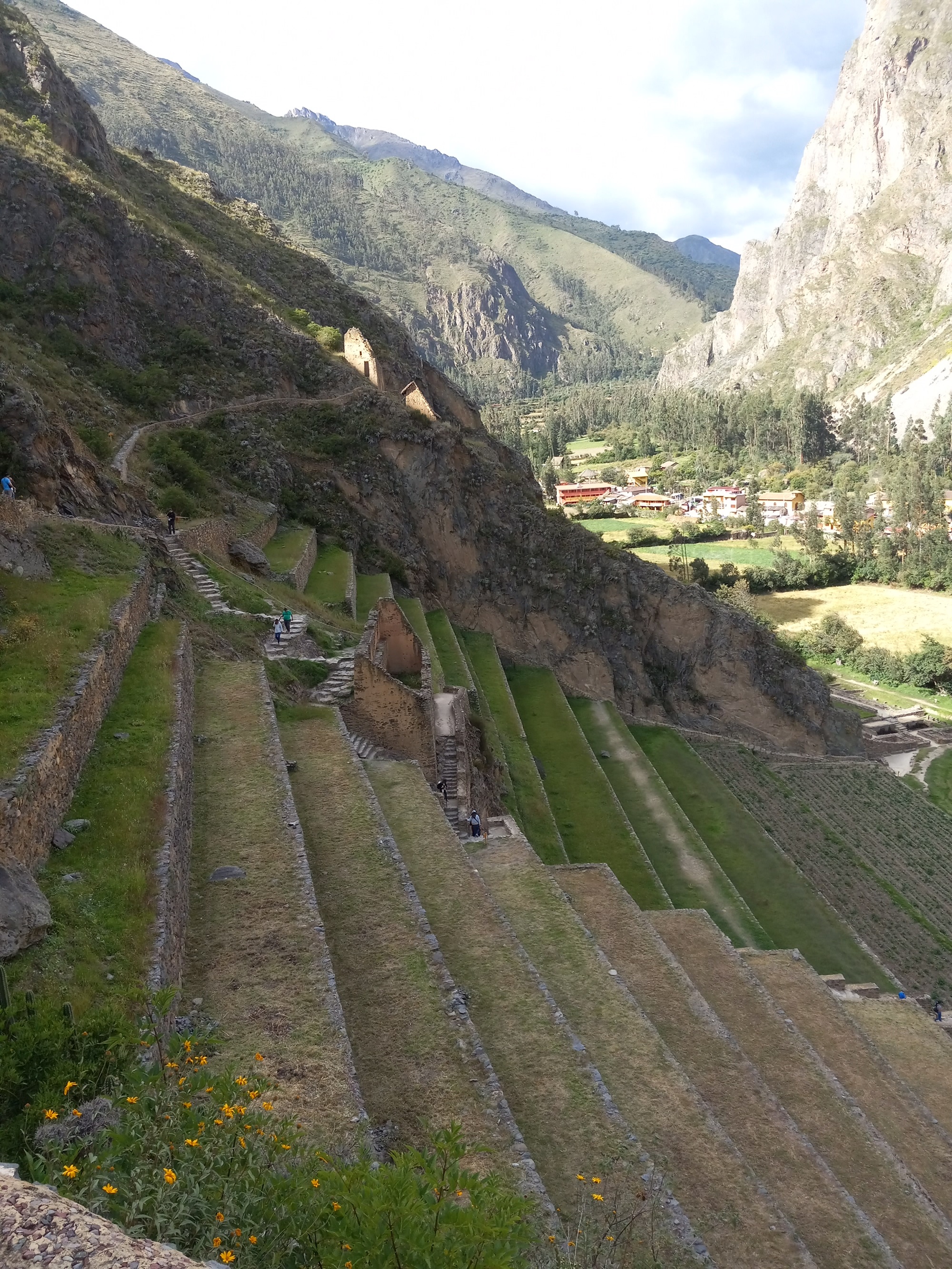
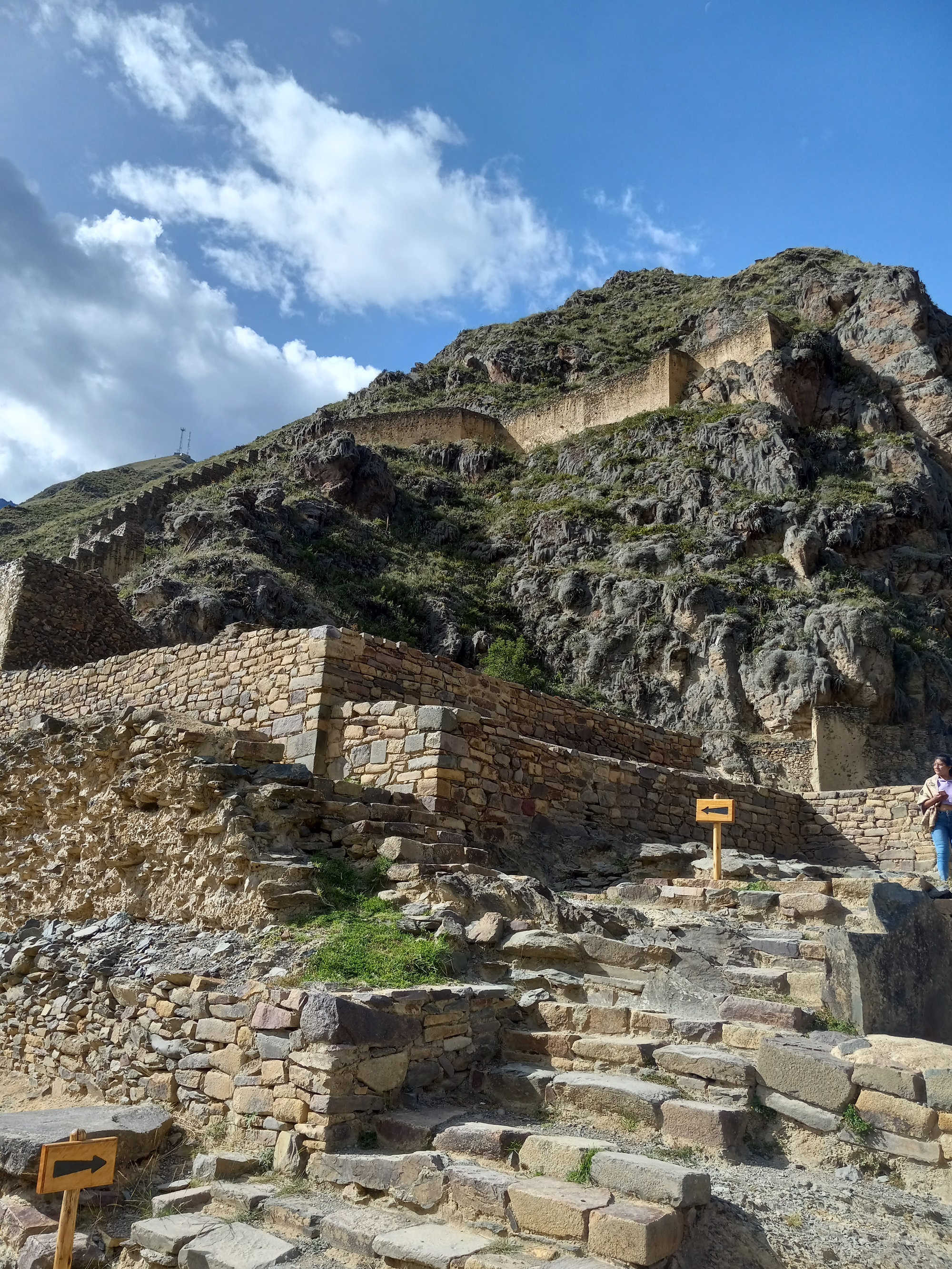
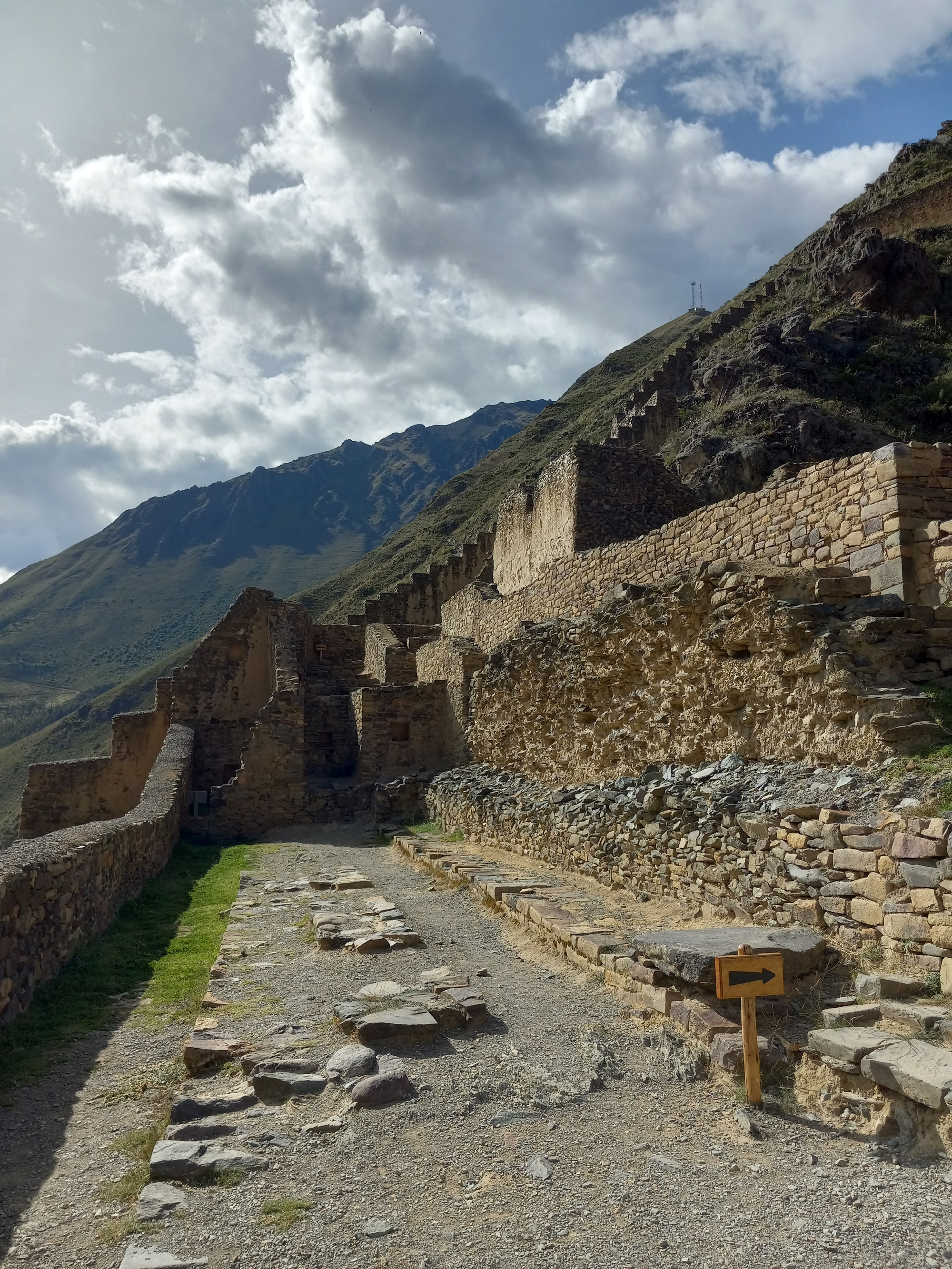

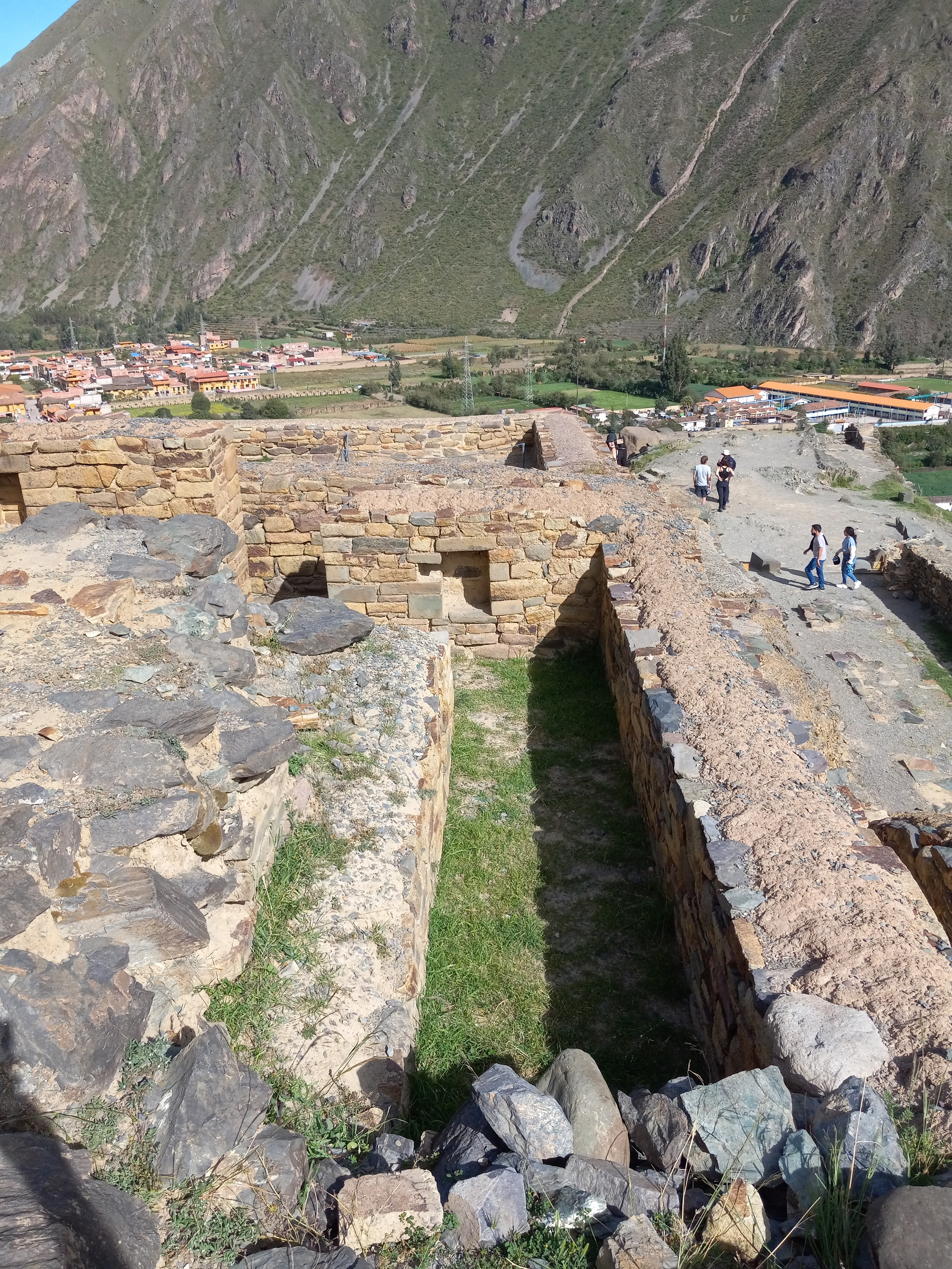

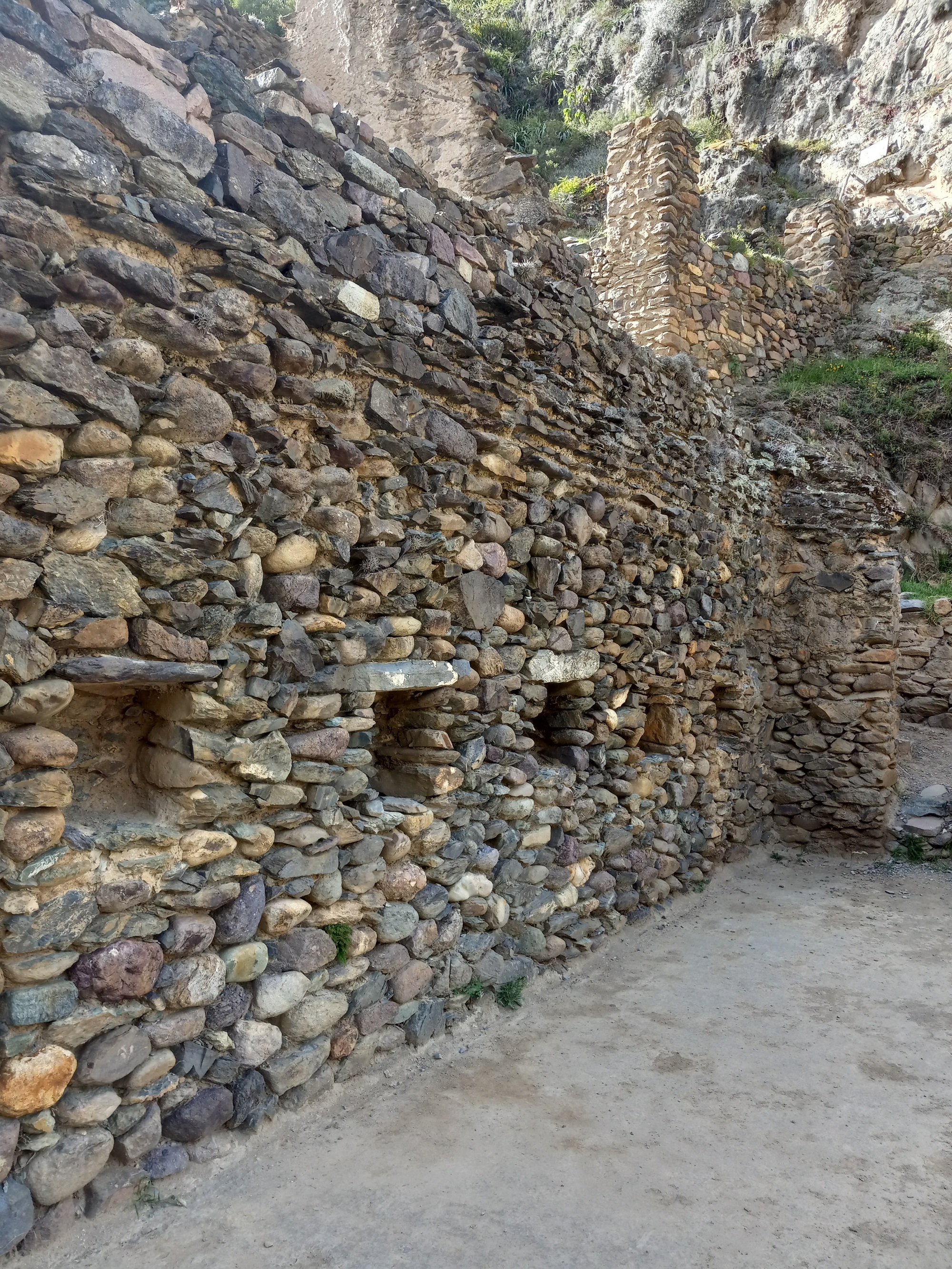
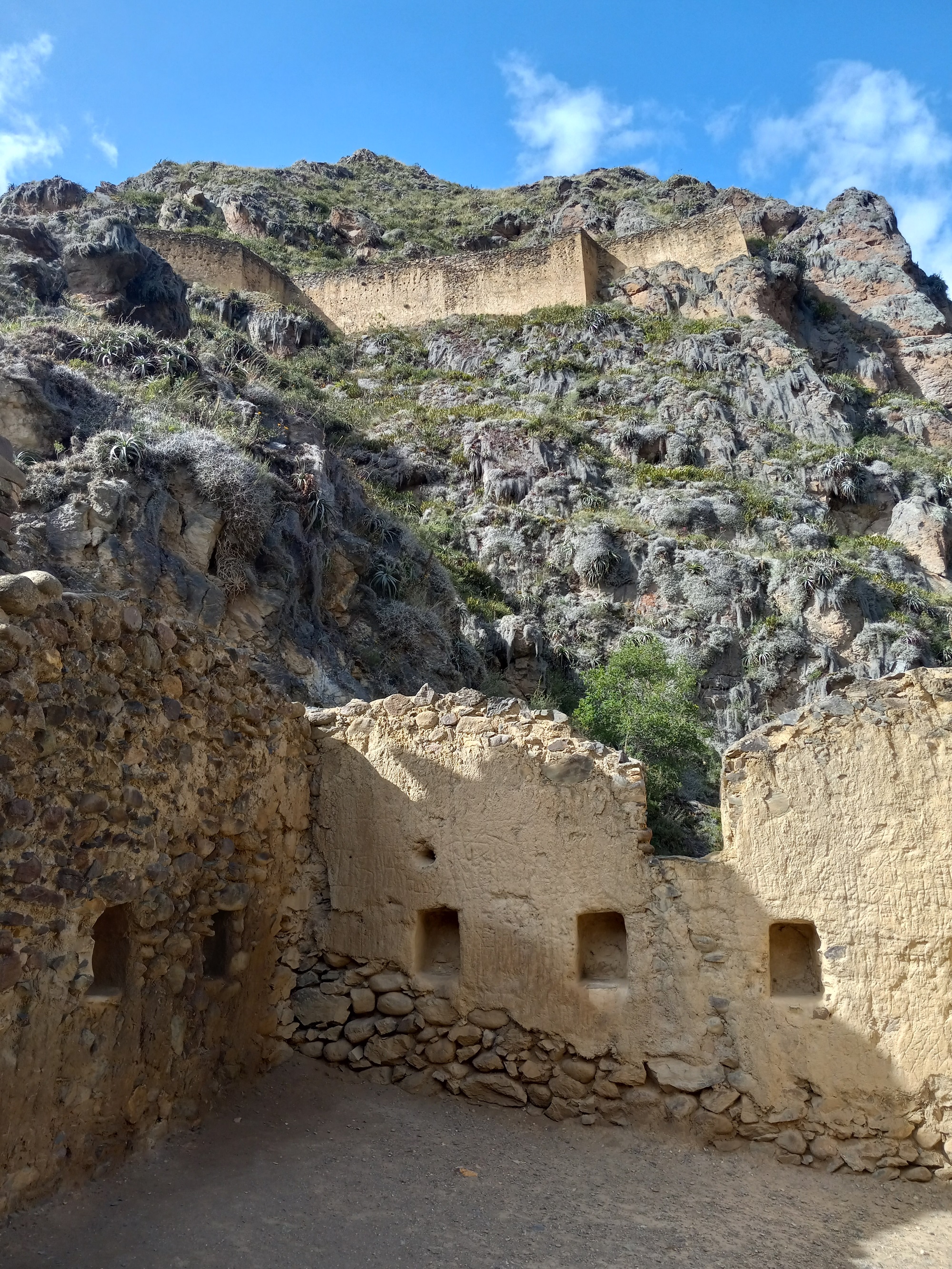
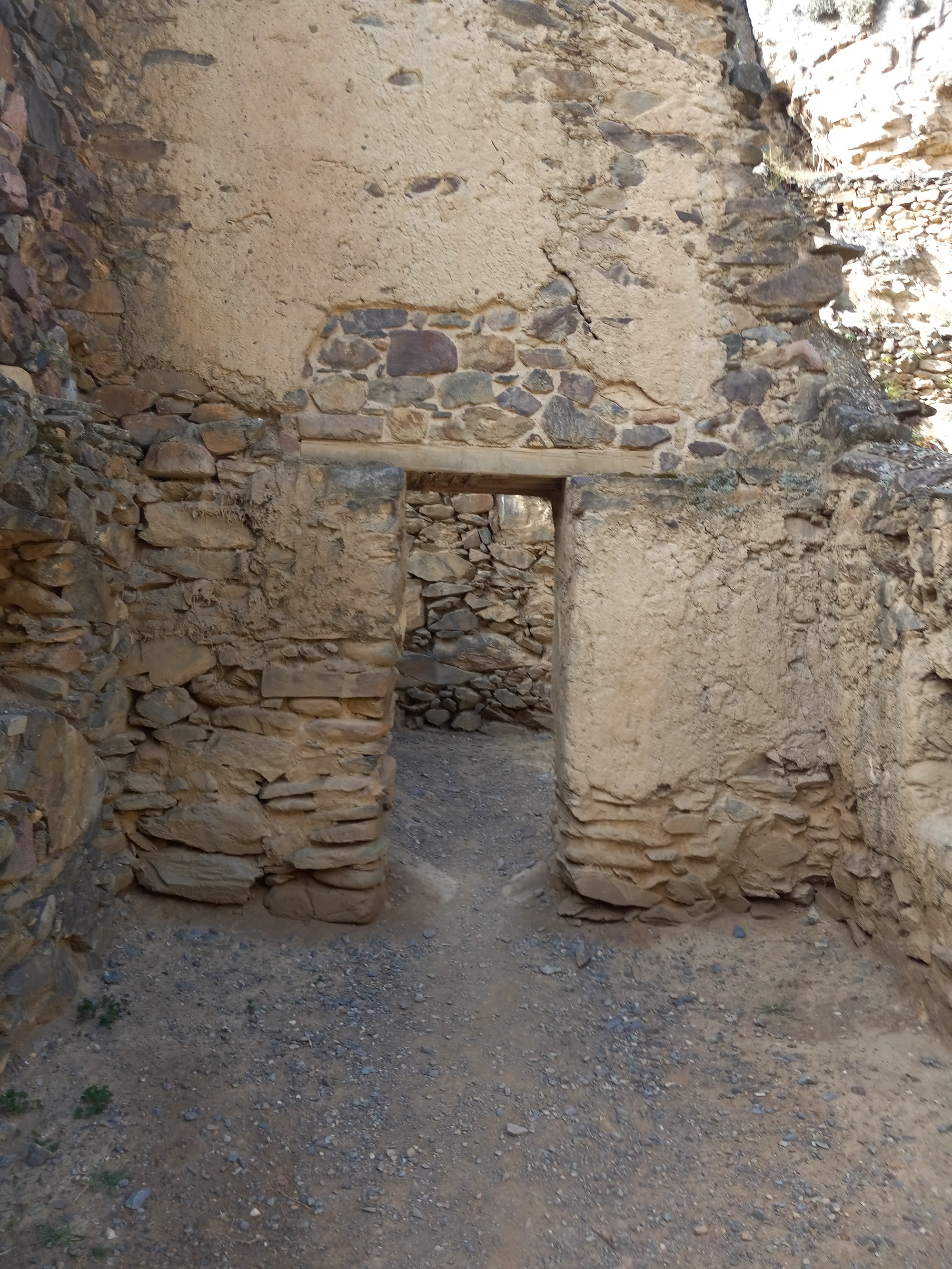
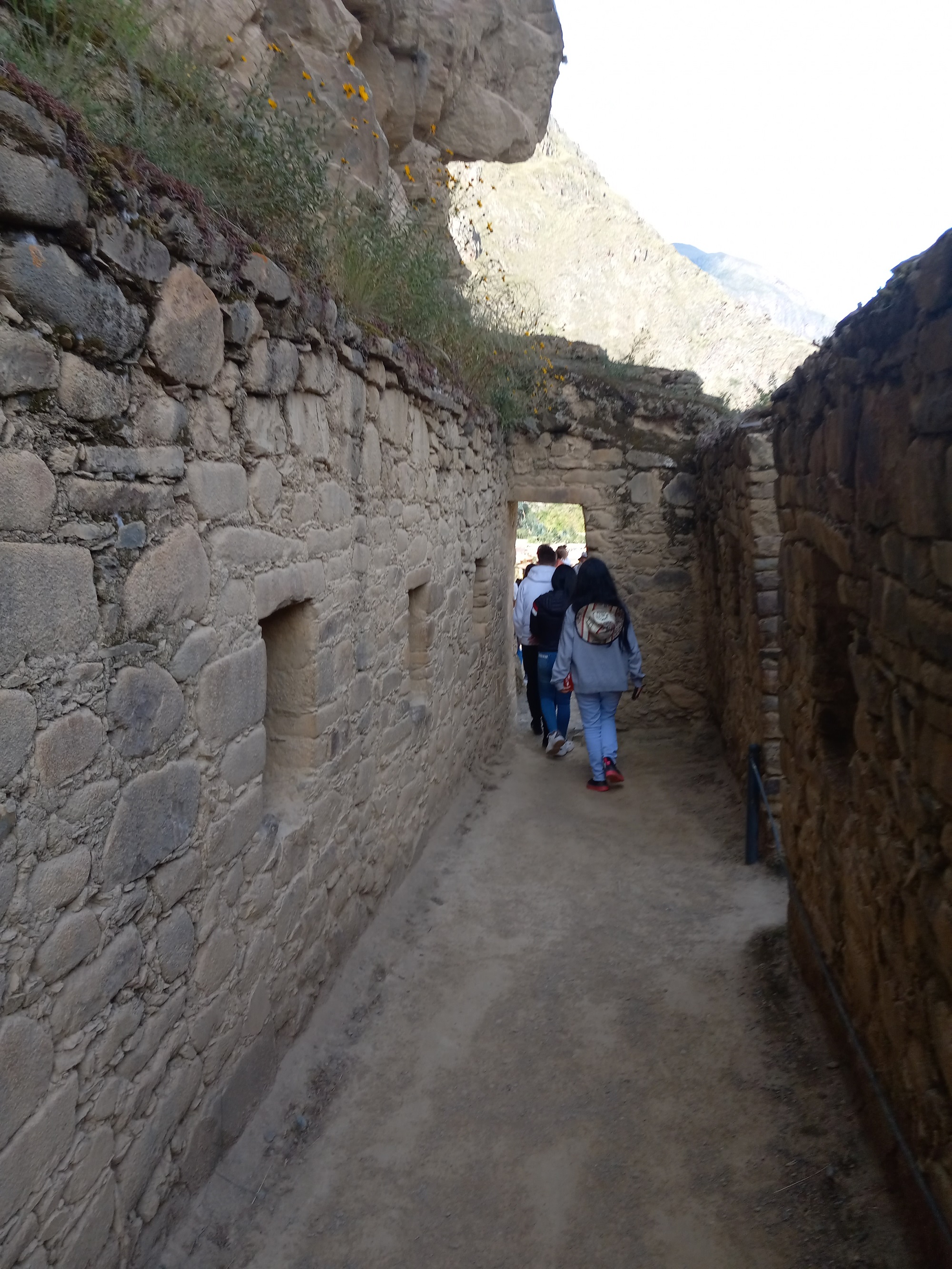
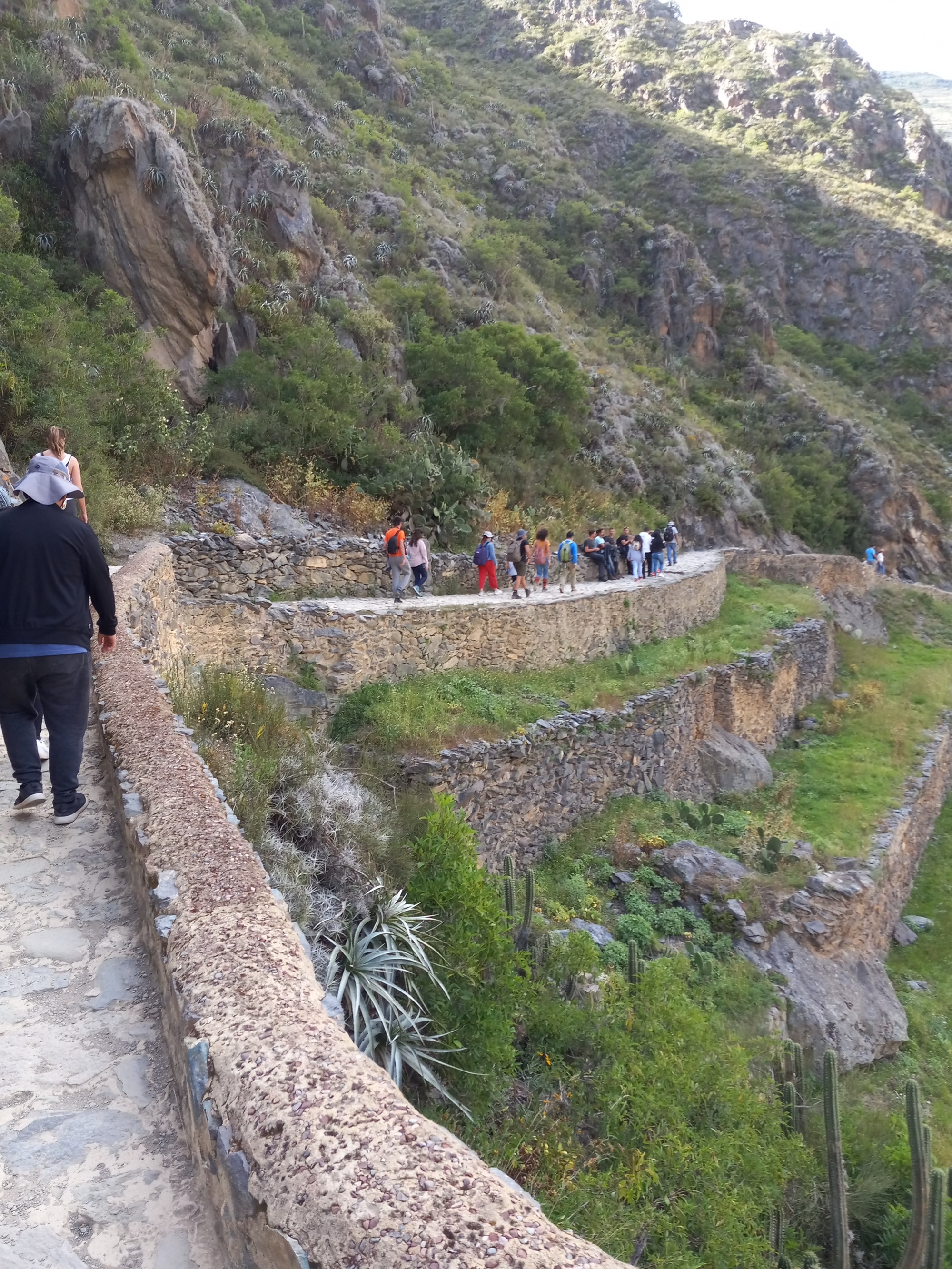
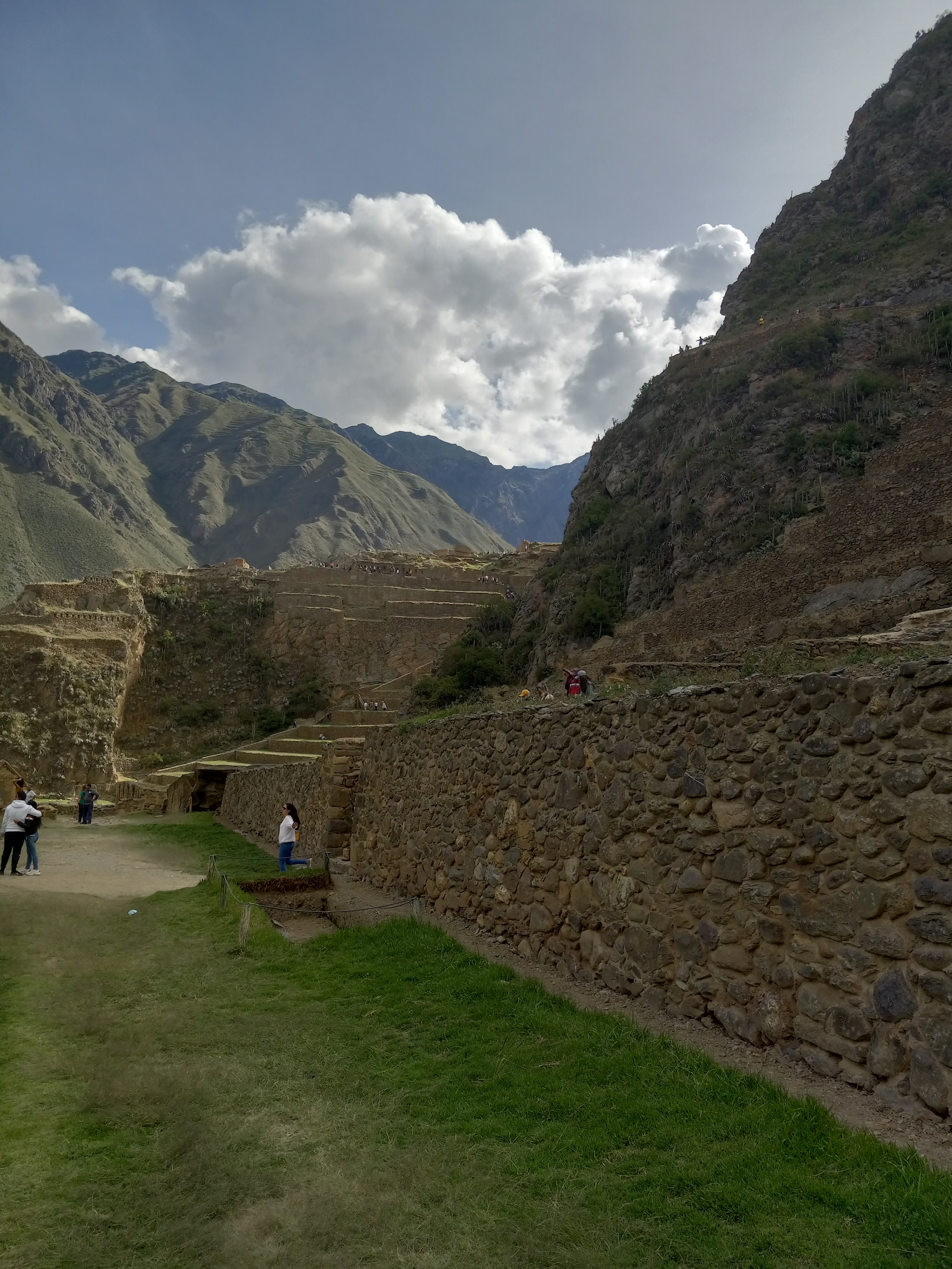
Here is the Templo del Aguas . . .
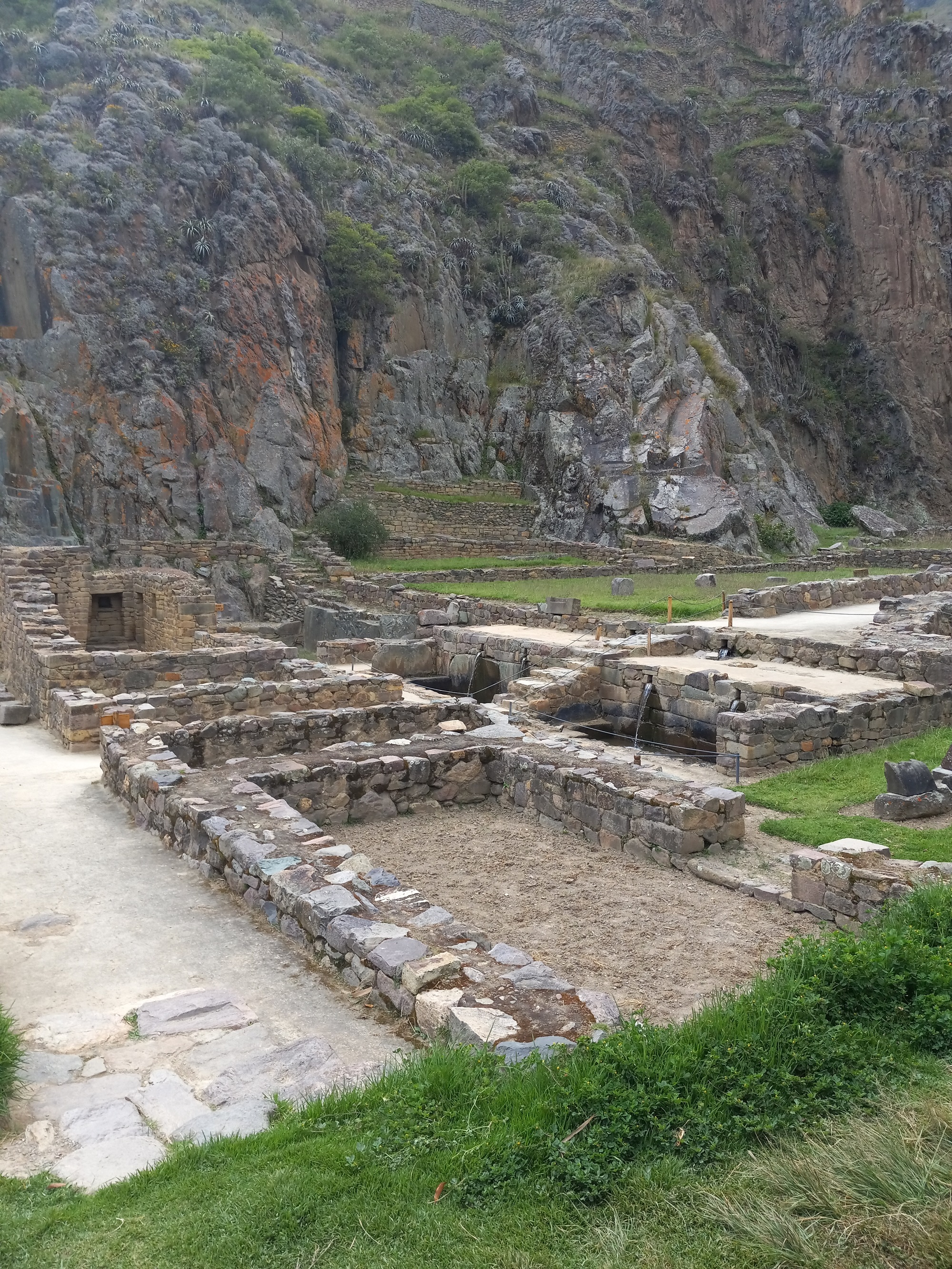


. . .and more. Water is a sacred element in Incan culture.

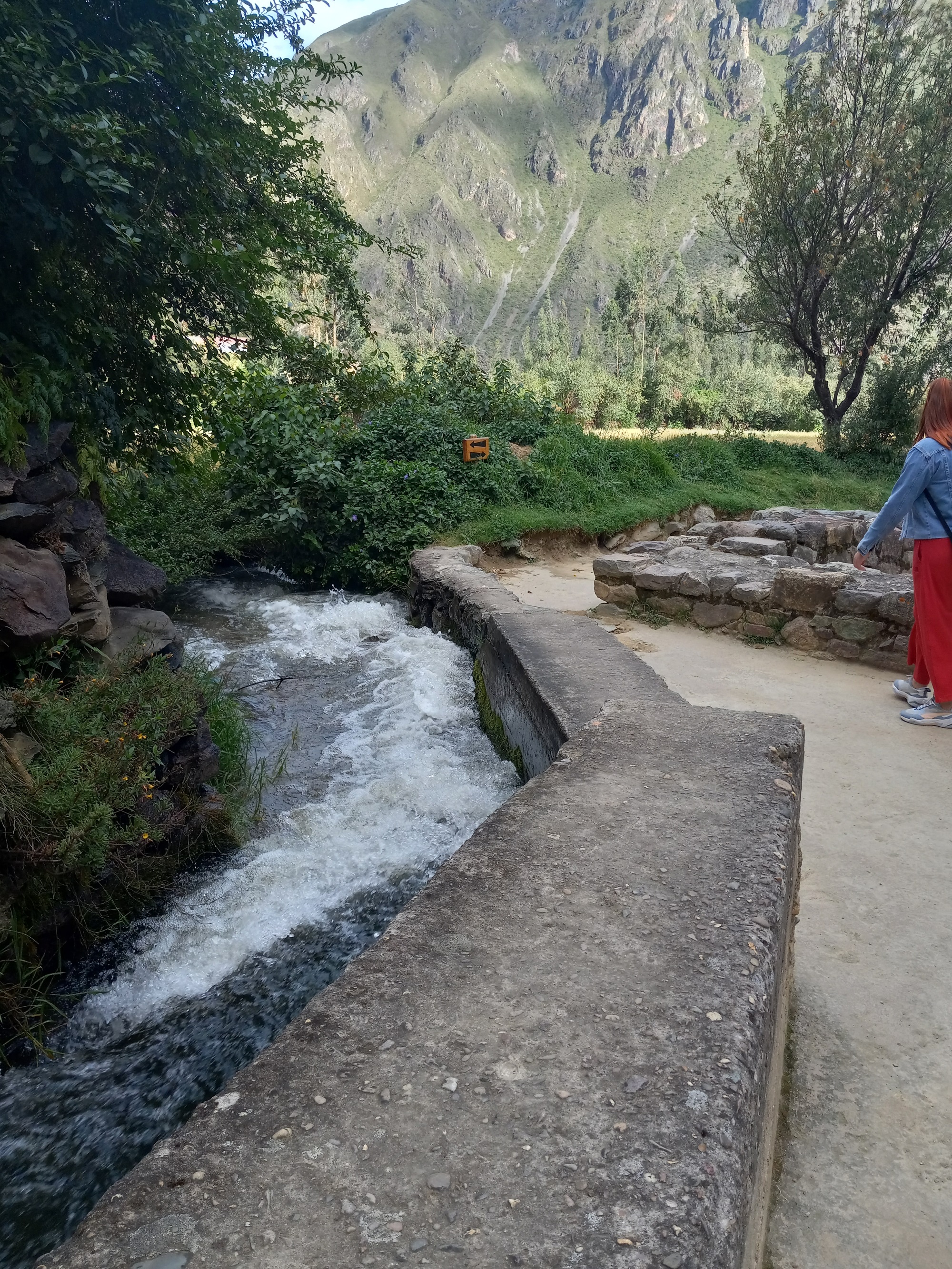
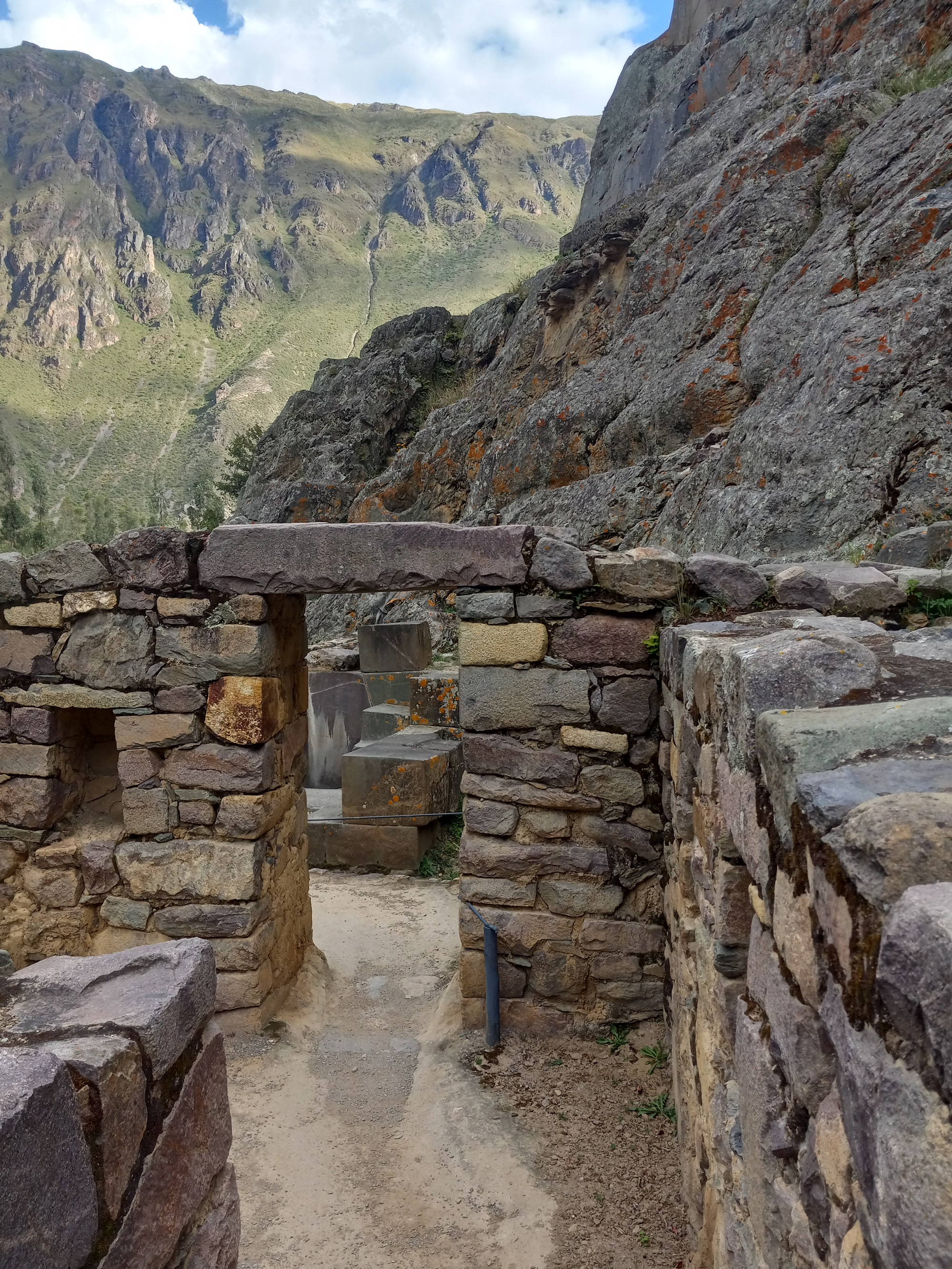


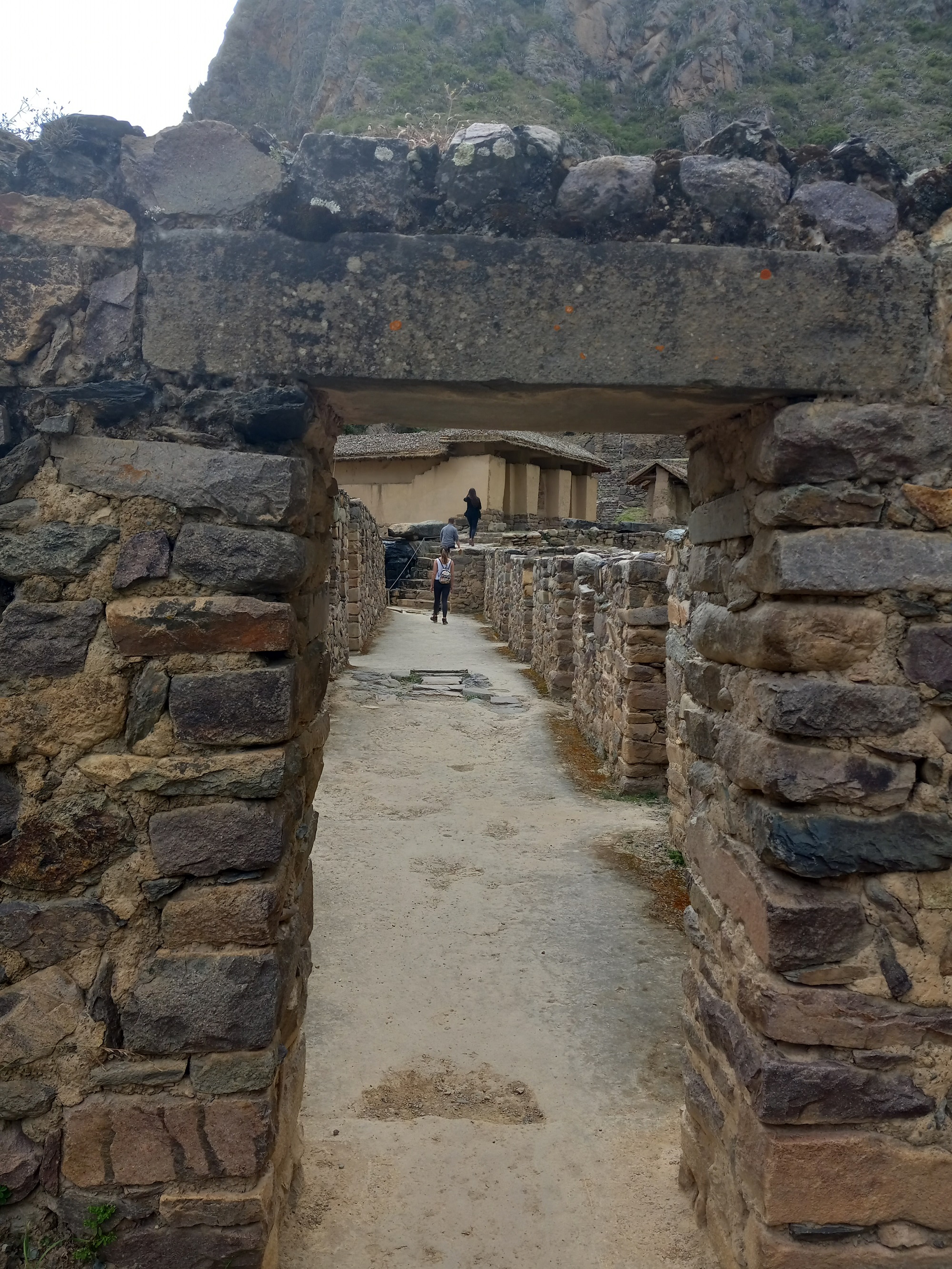
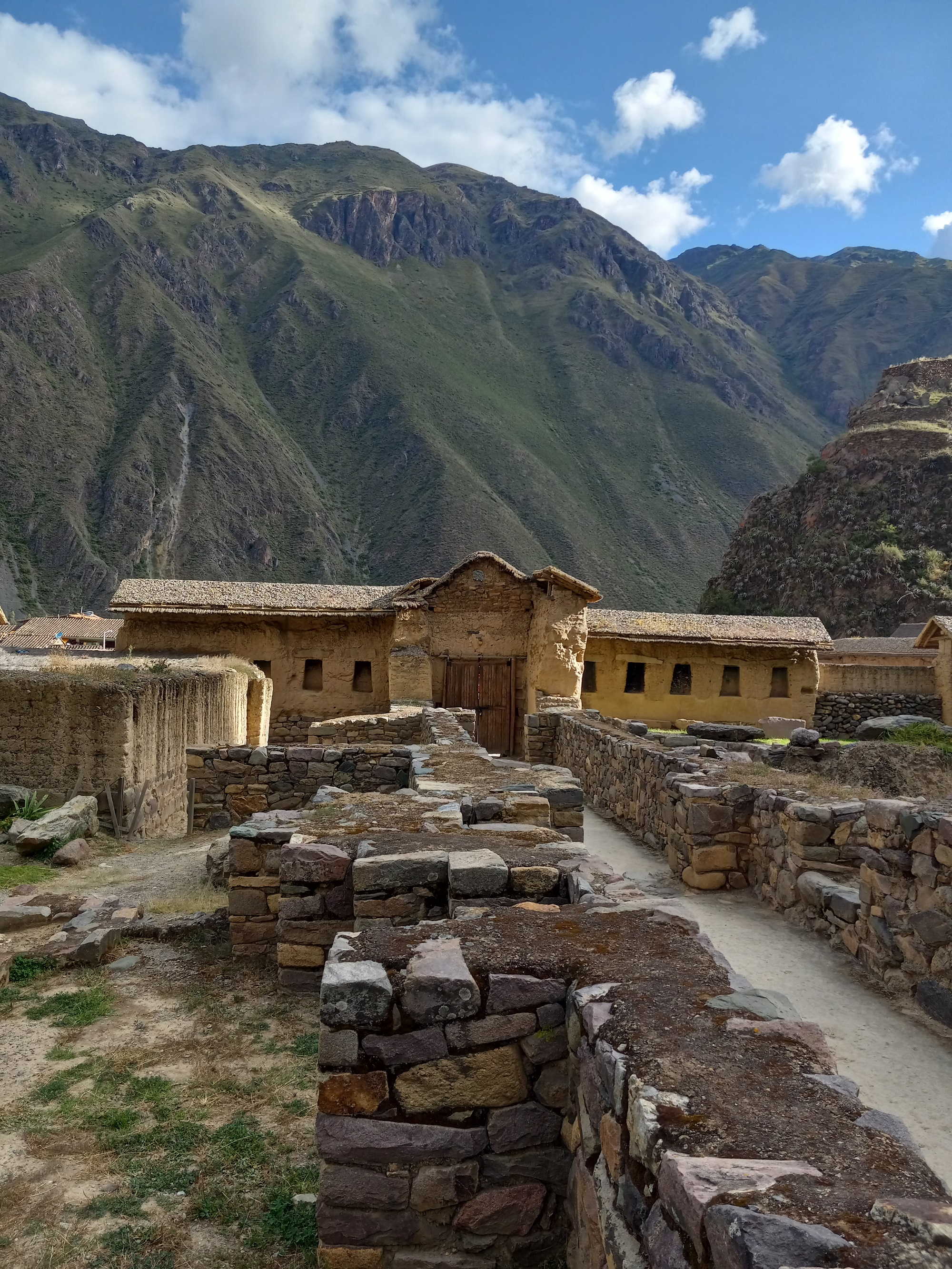

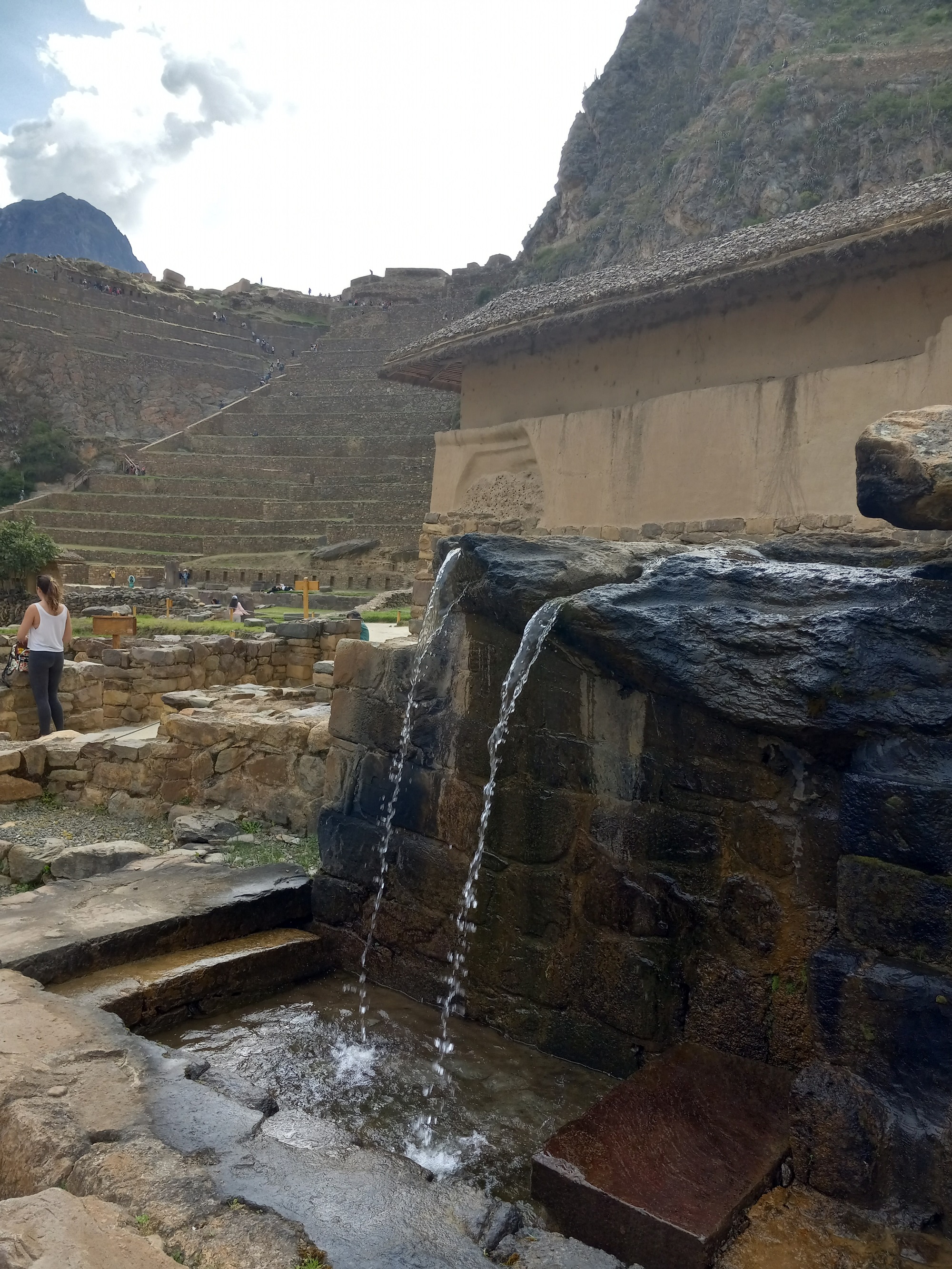
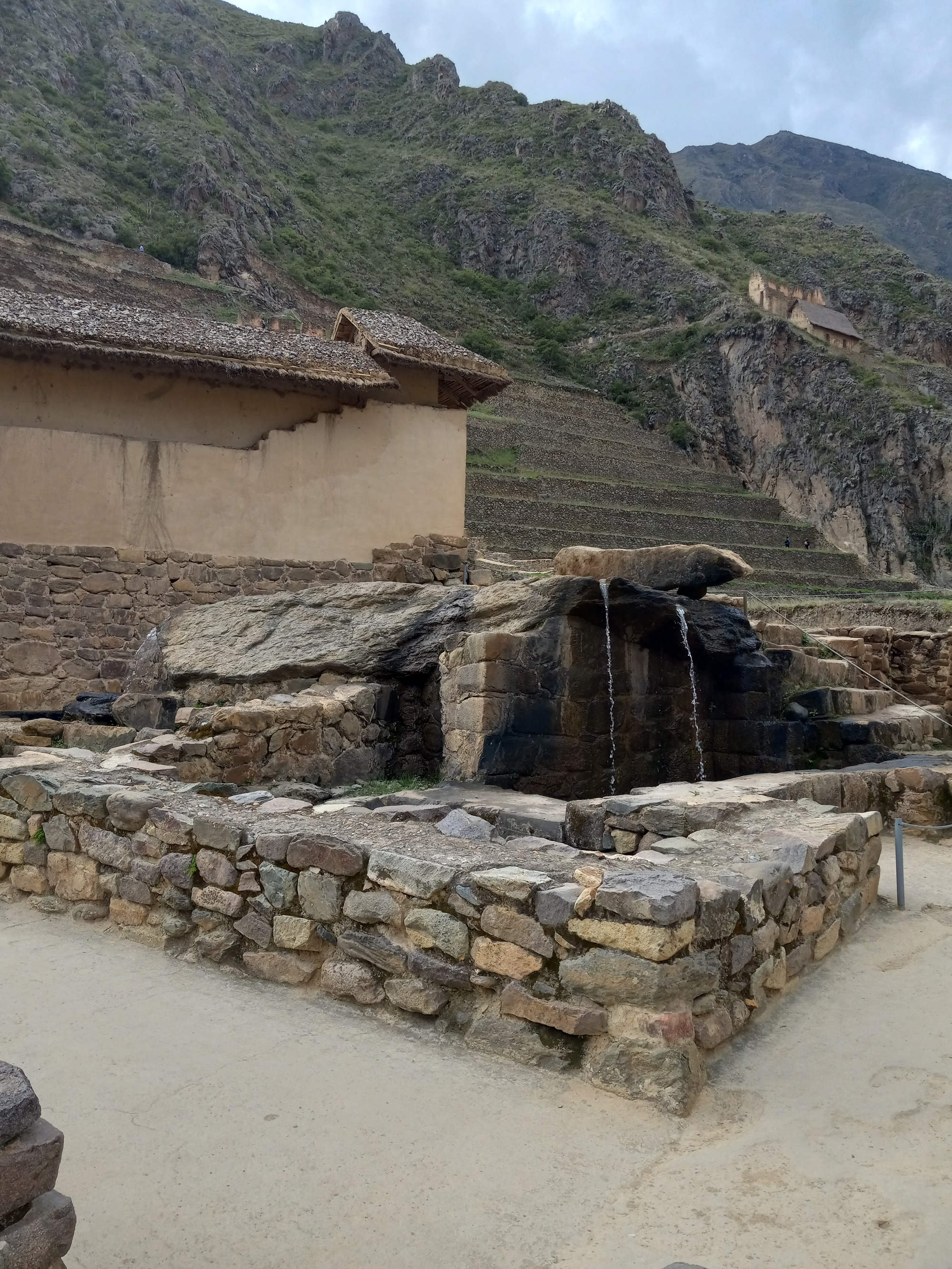
And after all that, we still had just enough time to climb Pinkuylluna.
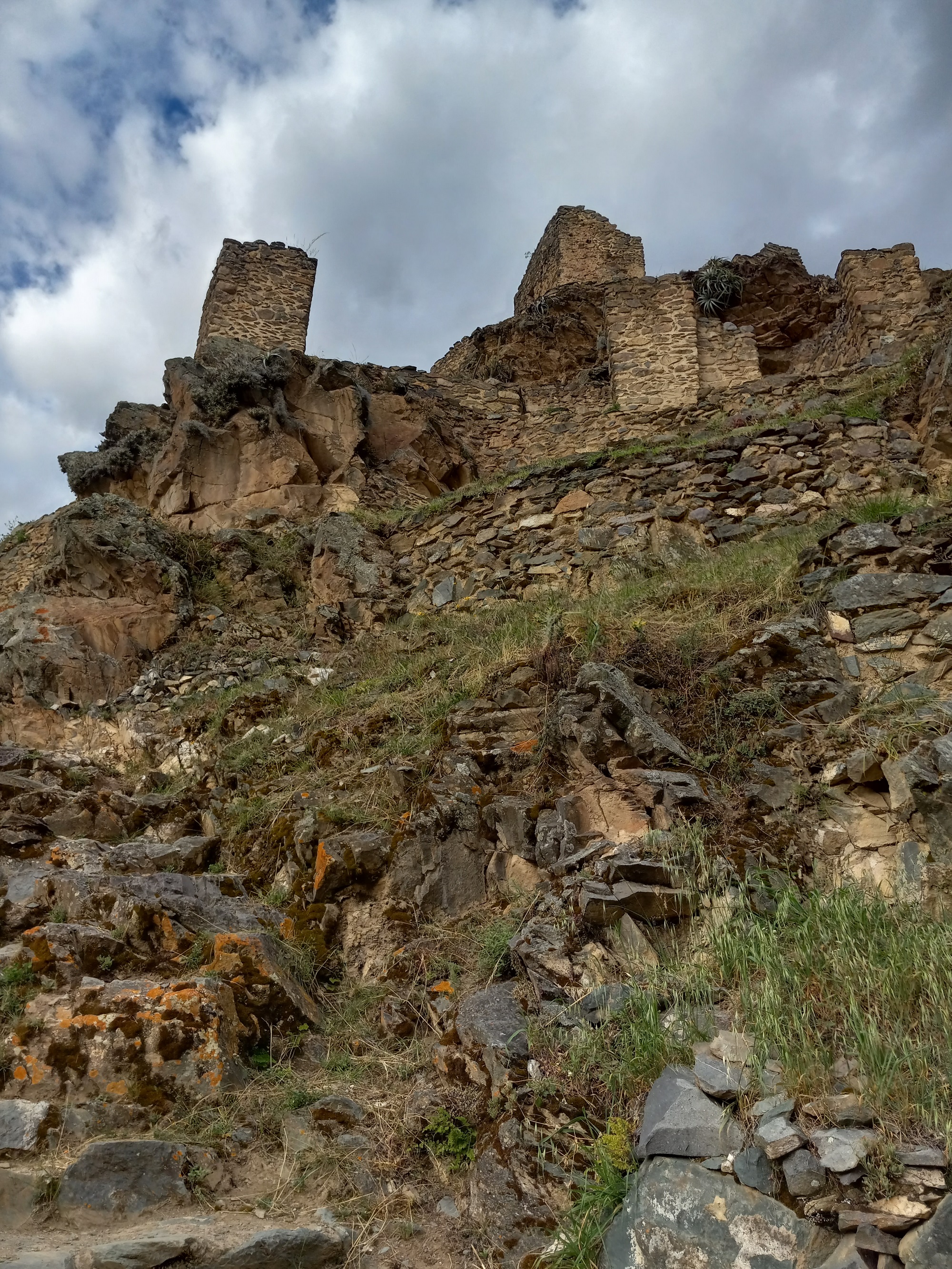
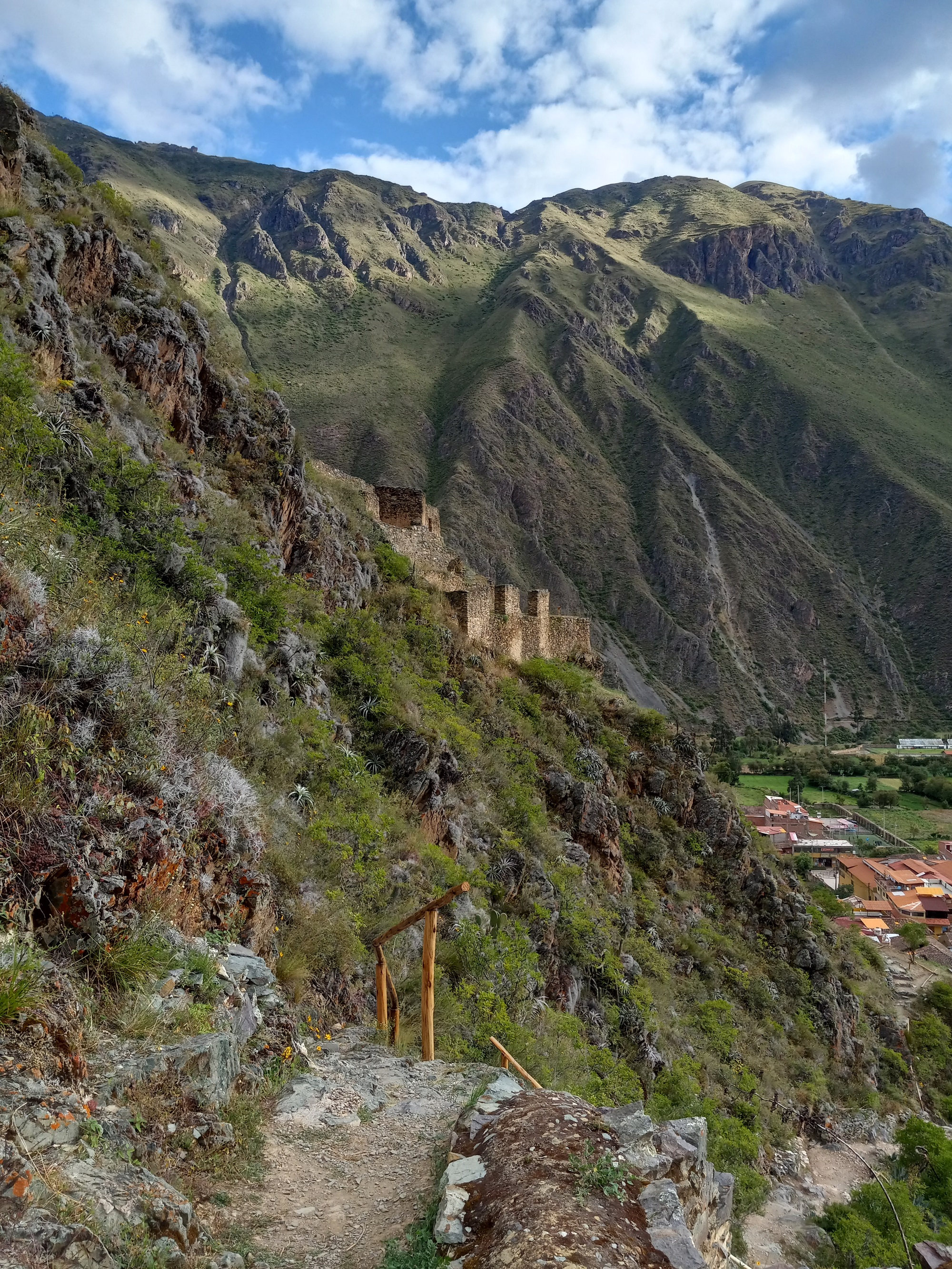
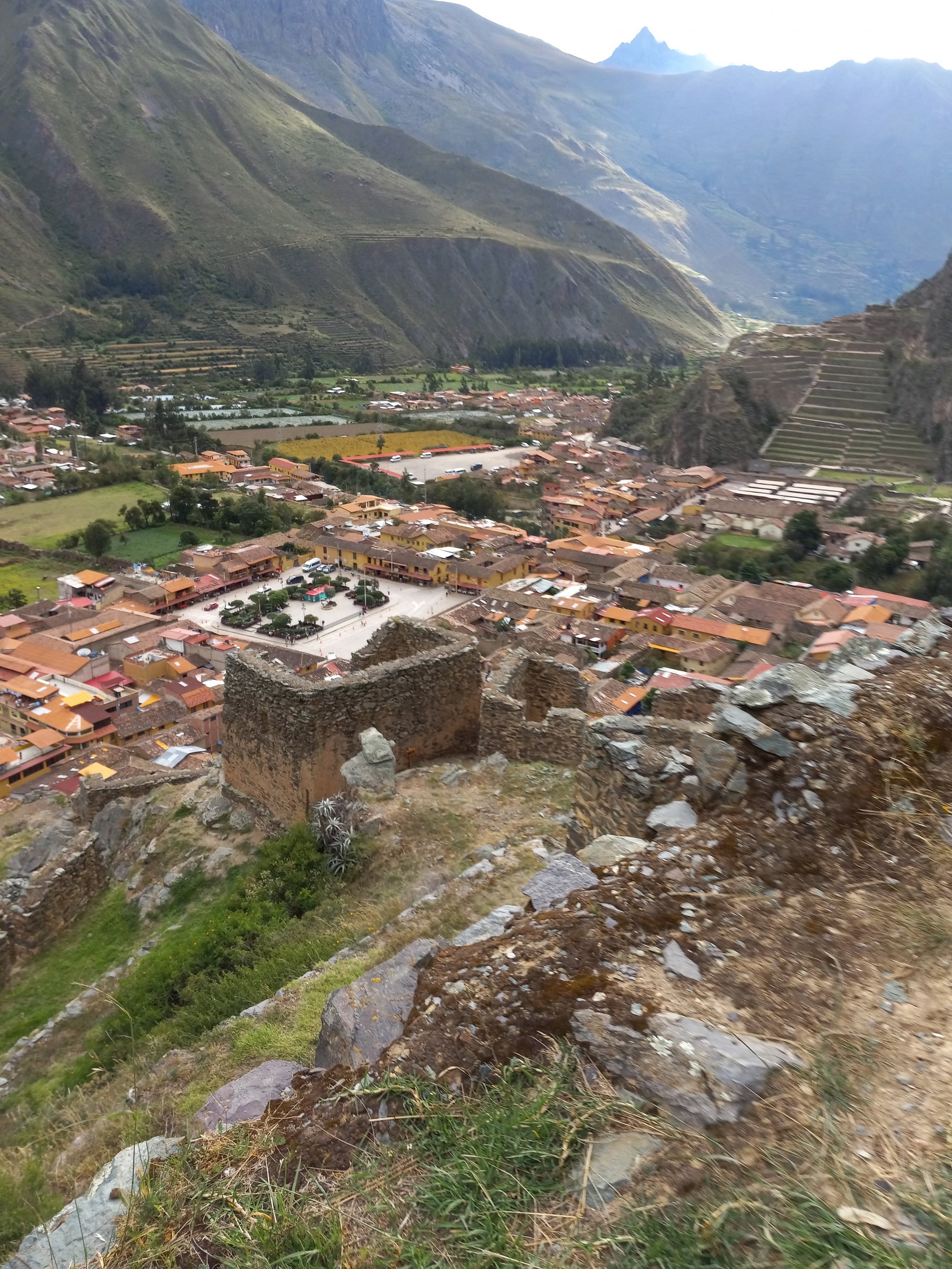


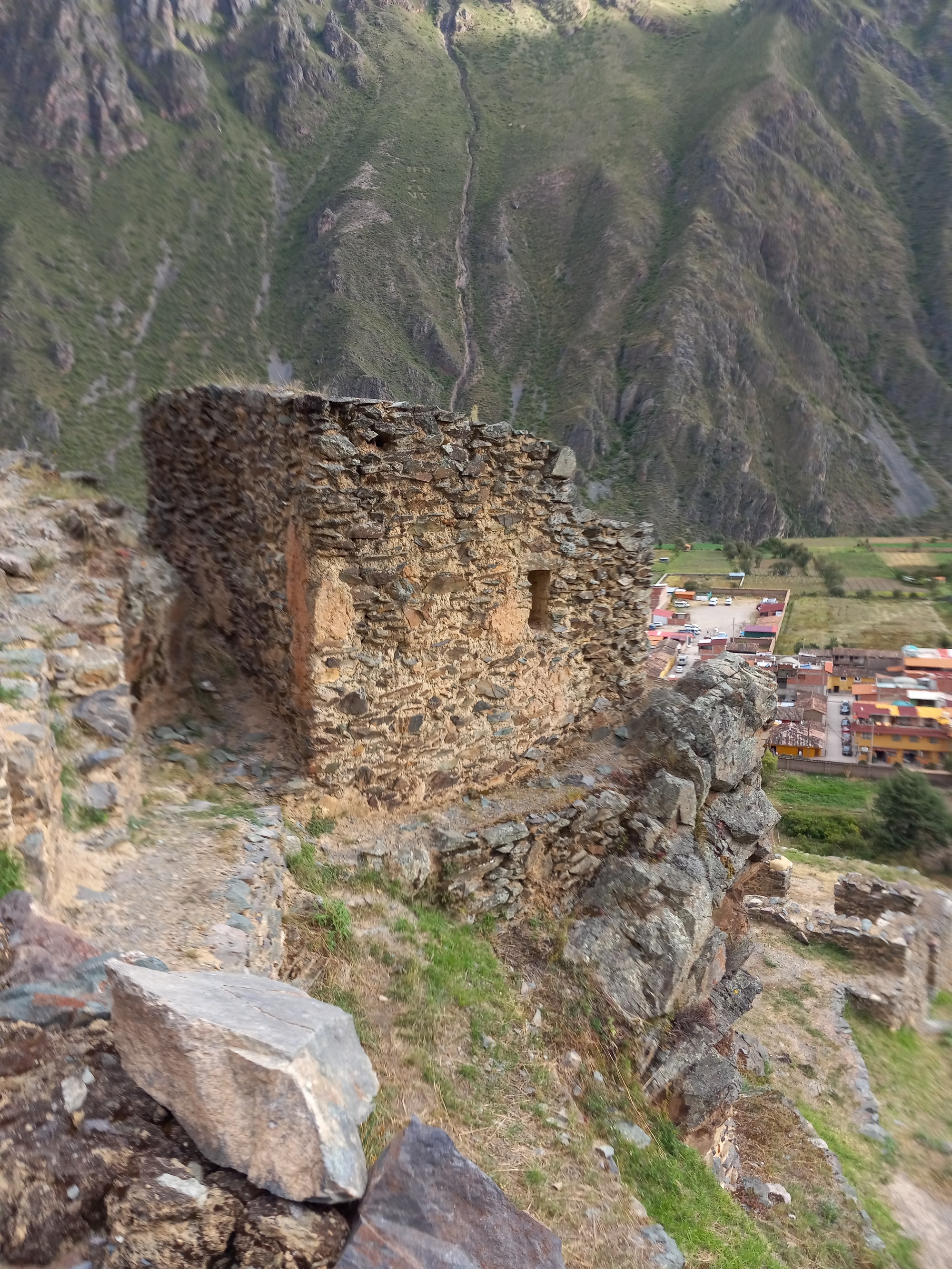

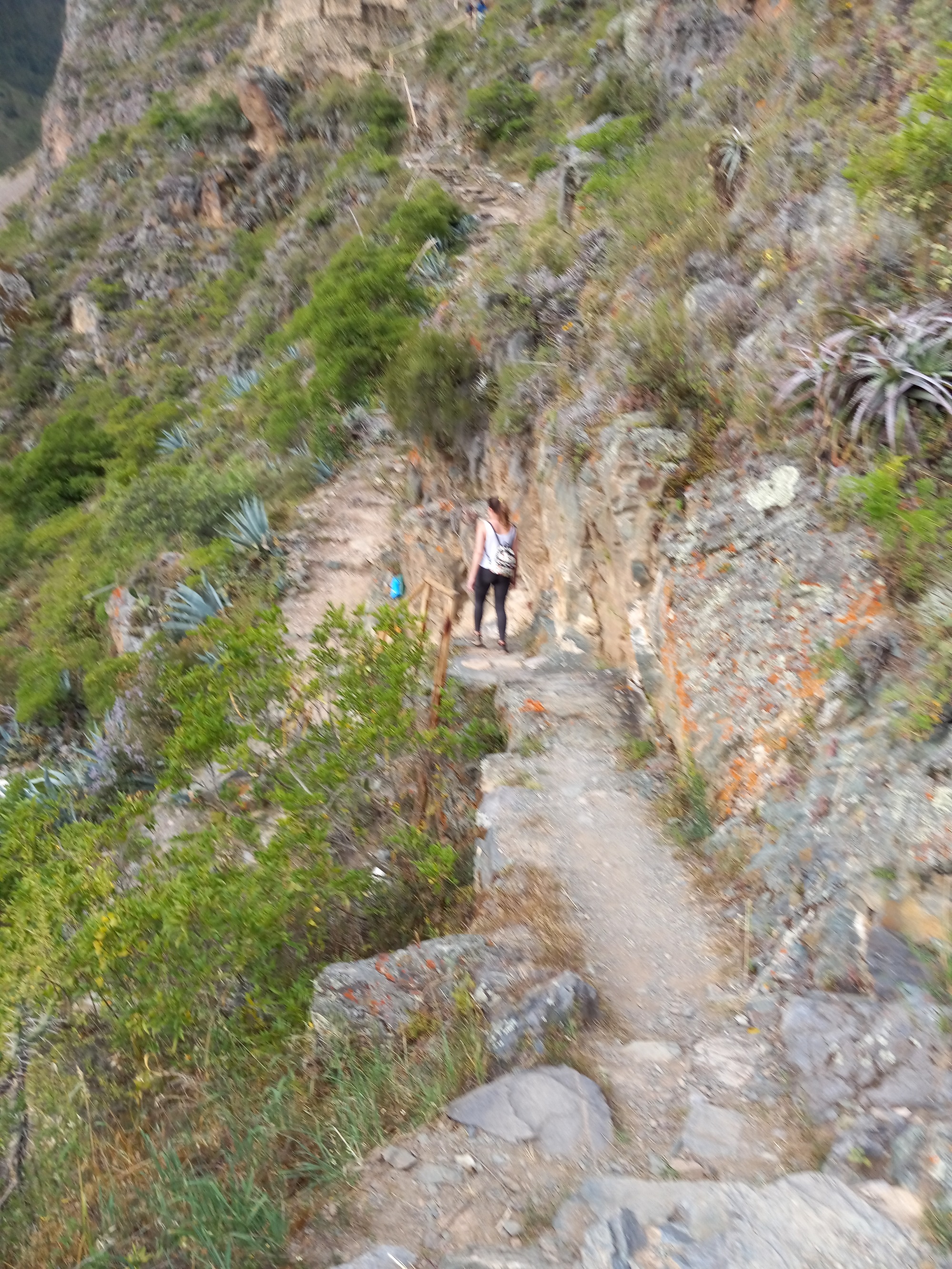
The next morning, Thursday, we set out by train to the town of Aguas Calientes, the last stop on the trail to Machu Picchu.
